The 2004 NHL lockout: A light look back at a dark day (9/16/04)

On September 16, 2004, after nearly two years of failed collective bargaining talks, the NHL and its players found themselves in a lockout situation for the second time in nine years. As both sides went to the mat over issues of a hard salary cap and “cost certainty” for a league that claimed to have only 11 profitable franchises and losses of $273 million in 2002–03, the NHL was again left with empty buildings; players. Referees and arena workers were also left without paychecks. And idle fans had nobody for whom to cheer. The following February, the NHL became the first of North America’s major pro sports leagues to lose an entire season to a labor impasse.
A lot has changed, much of it for the better, in the 10 years since that dark day, although not without another labor dispute that ate up a large chunk of 2012–13. But in many ways, the NHL’s lost season of ’04–05 was an historical dividing line. Here’s a quick look at some of the most notable facts from before and after the lockout, and at a few of the more memorable statements from the league’s second great showdown.
“Bottom line, if they want a hard cap, we’ll sit out the rest of our lives.”—Maple Leafs defenseman and NHLPA rep Bryan McCabe
GALLERY: Revisiting the 2004–05 lockout
Revisiting the 2004-05 NHL Lockout
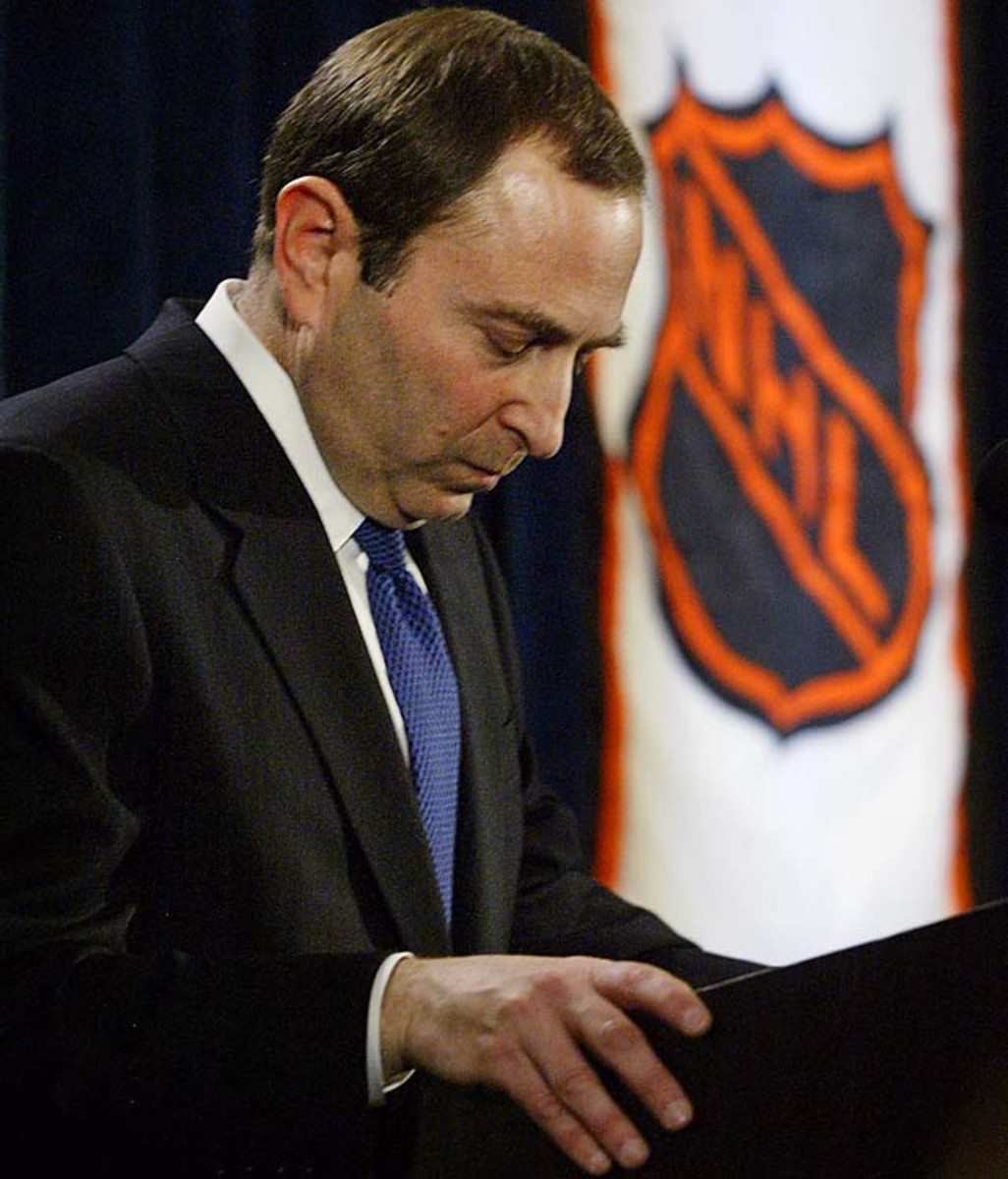
NHL commissioner Gary Bettman announced the cancellation of the 2004-05 season on Feb. 16, 2005, the first time a full season of one of the four U.S. pro sports leagues was washed out. Due to a labor dispute, no Stanley Cup would be awarded for the first year since 1919. The lockout began Sept. 16, 2004 and lasted until July 21, 2005.
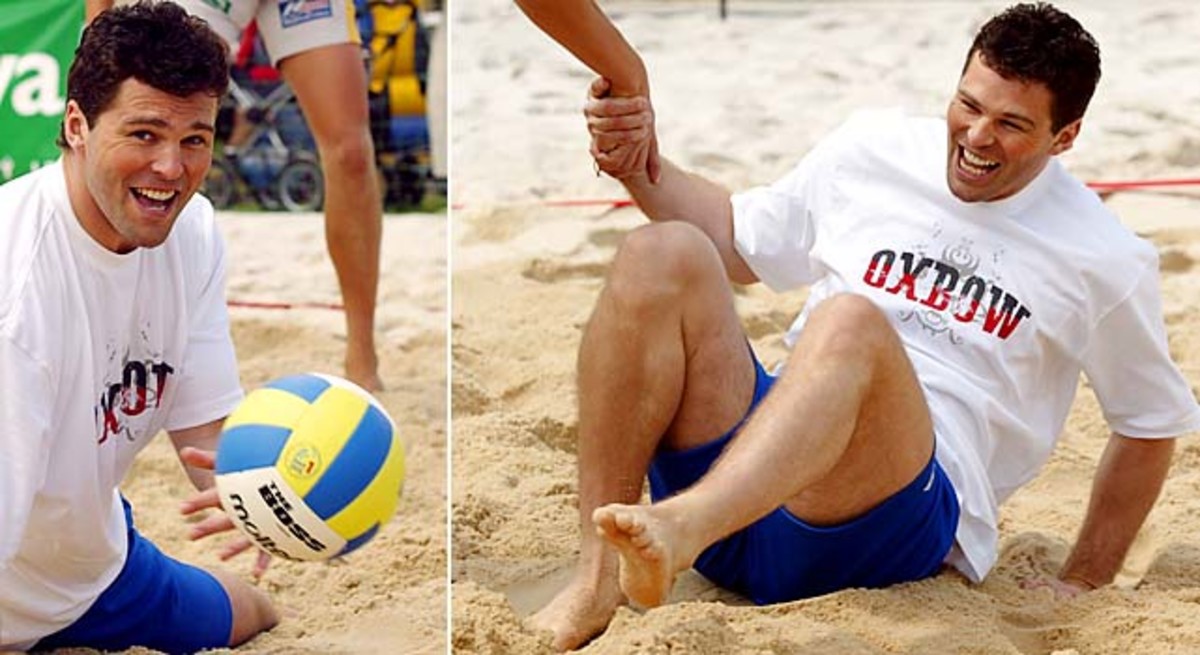
Jaromir Jagr enjoyed his time off with some beach volleyball and then joined up with a Czech team and played in the Russian Super League, too.
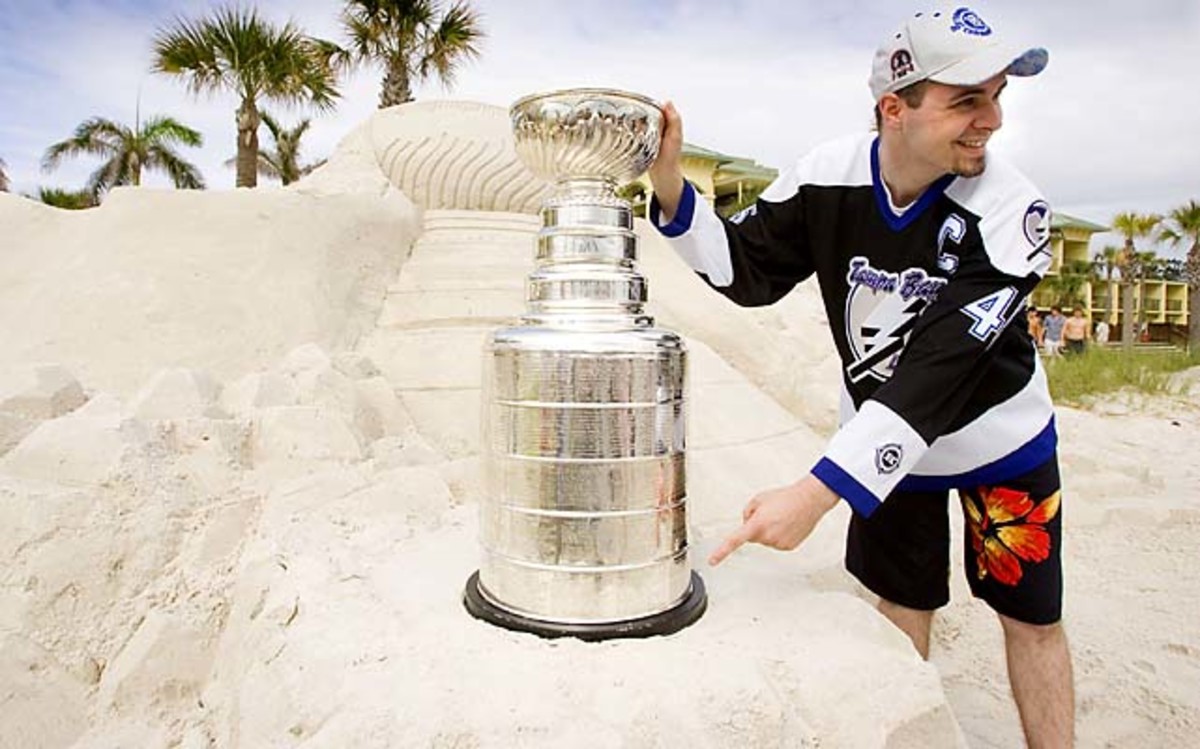
The Lightning's reign as Stanley Cup champions lasted a lot longer than many expected.
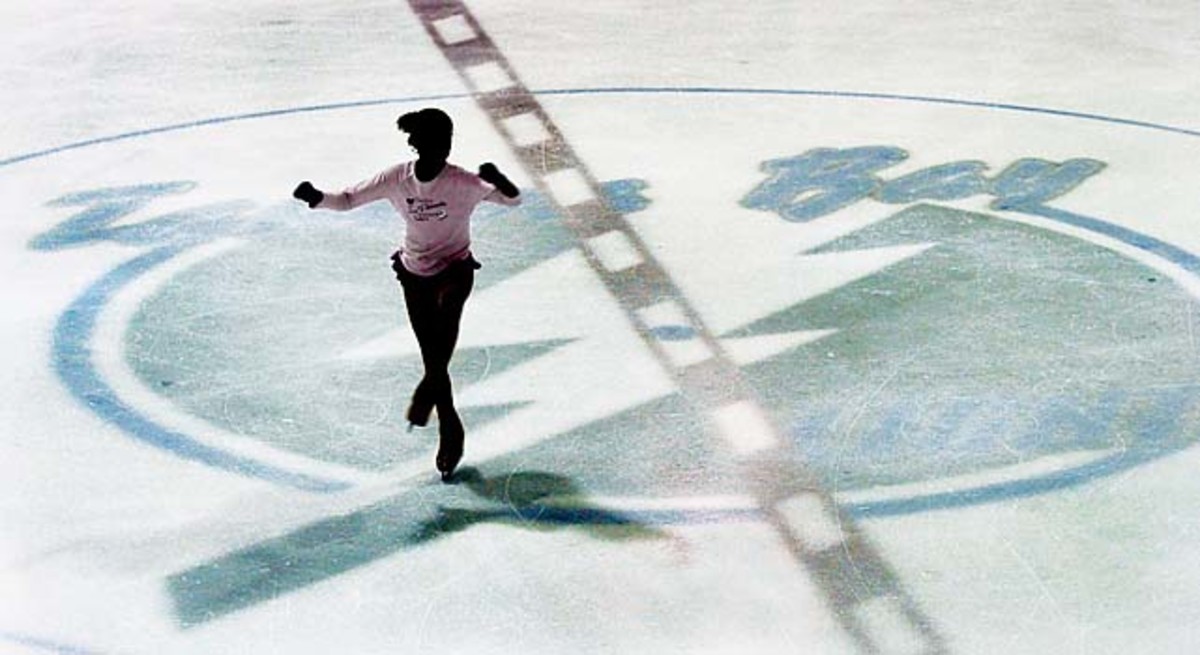
A figure skater glides across the Tampa Bay Lightning logo at the Ice Sports Forum, the Lightning's training facility, in Brandon, Fla., on Sept. 16, 2004, the day owners locked out the players.
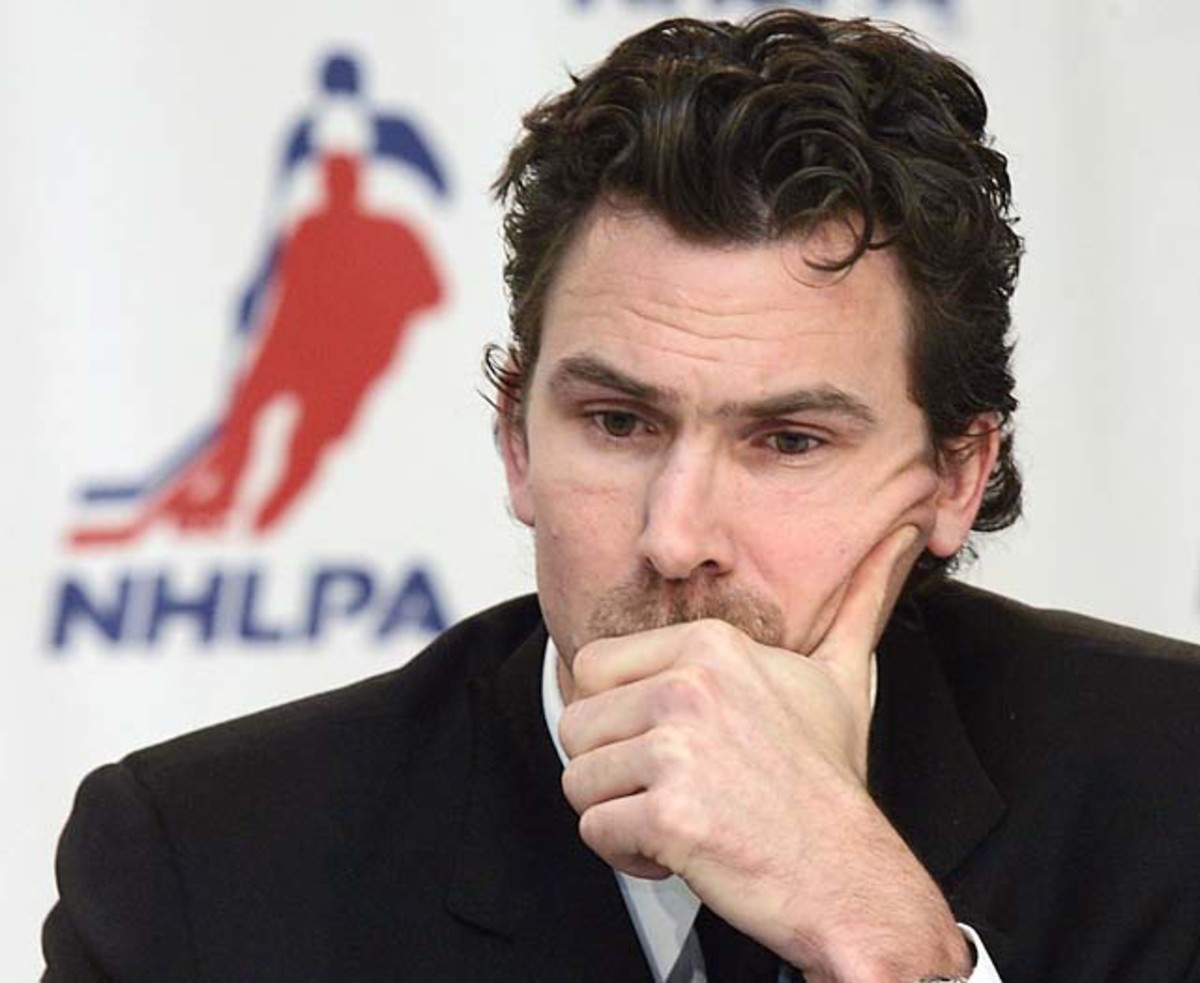
Captain Canuck Trevor Linden was the NHLPA president during the lockout.
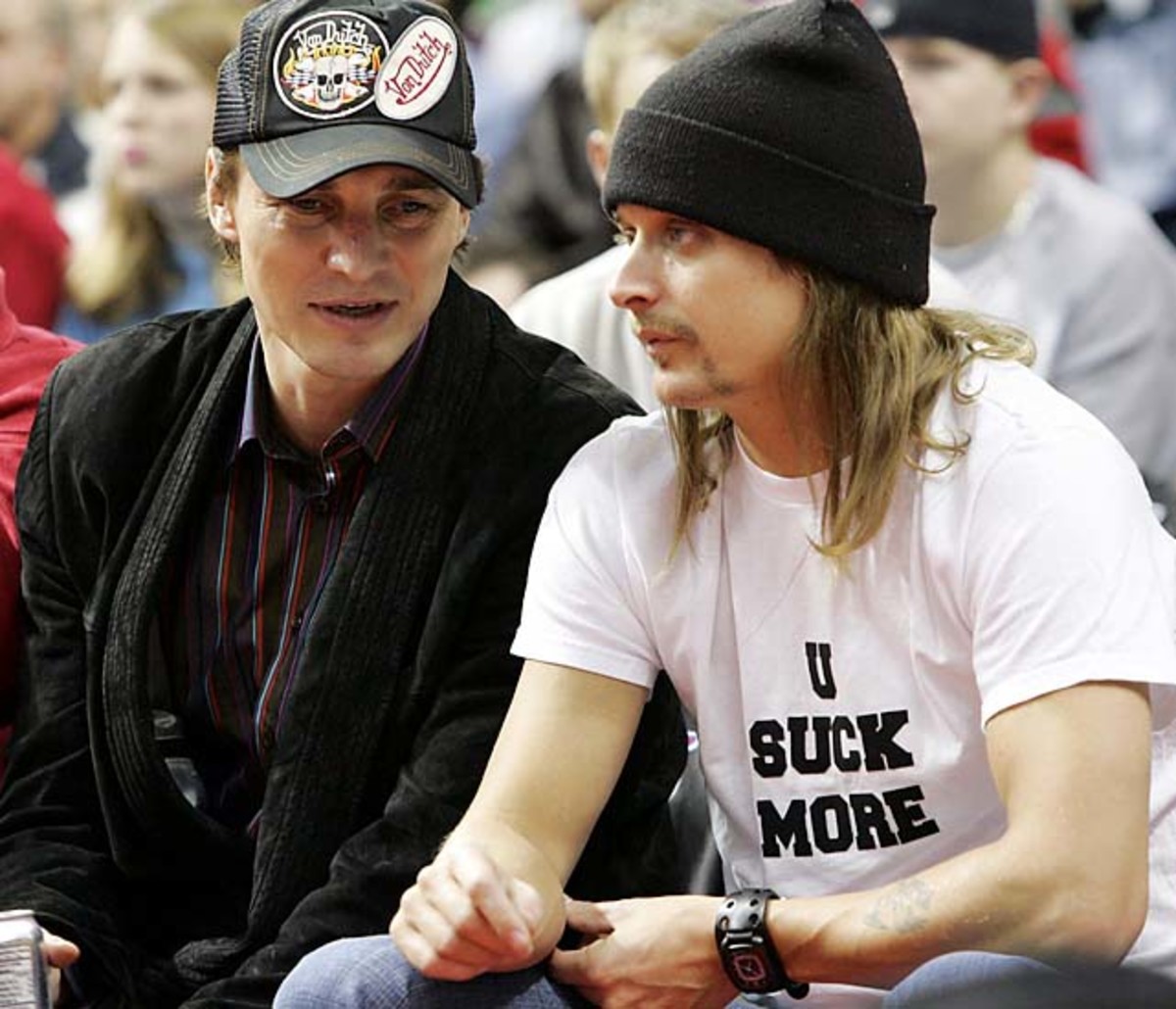
Sergei Fedorov sits with Kid Rock during a Pistons game in November 2004. Fedorov, a longtime Red Wing, was a Mighty Duck during the lockout.
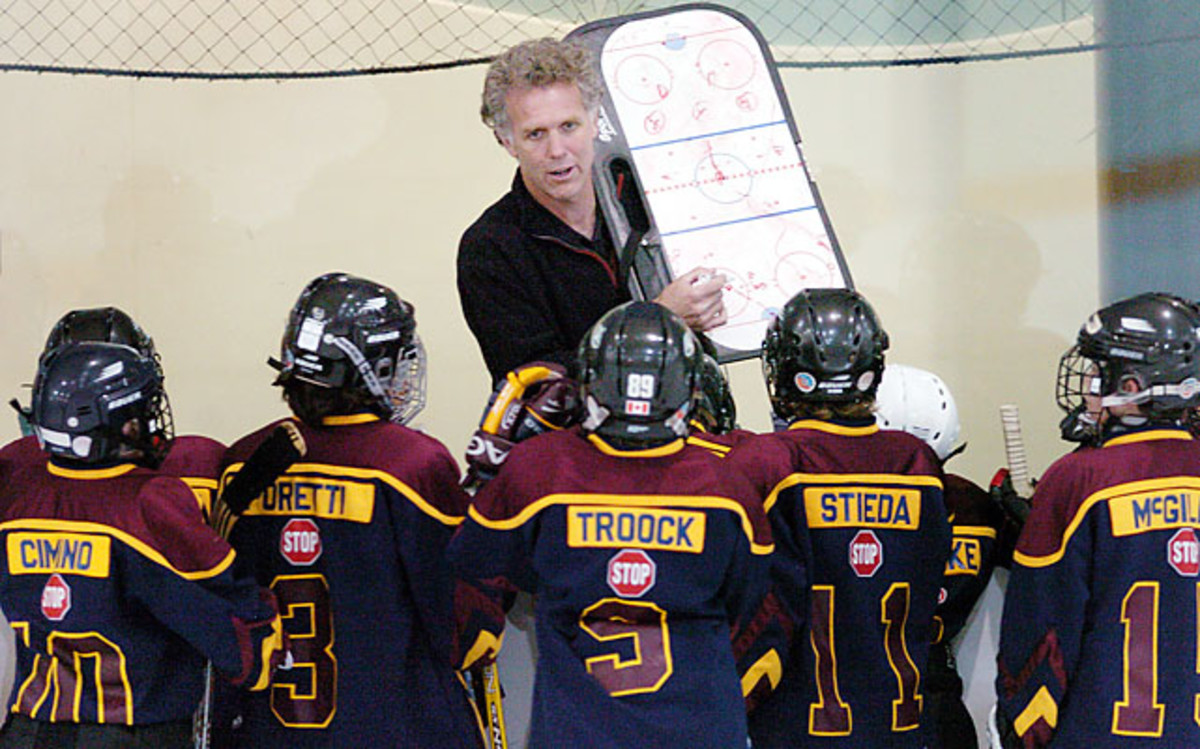
Oilers coach Craig MacTavish spent his newfound free time by coaching the 10- and 11-year-old Whitemud Atom AA hockey team.
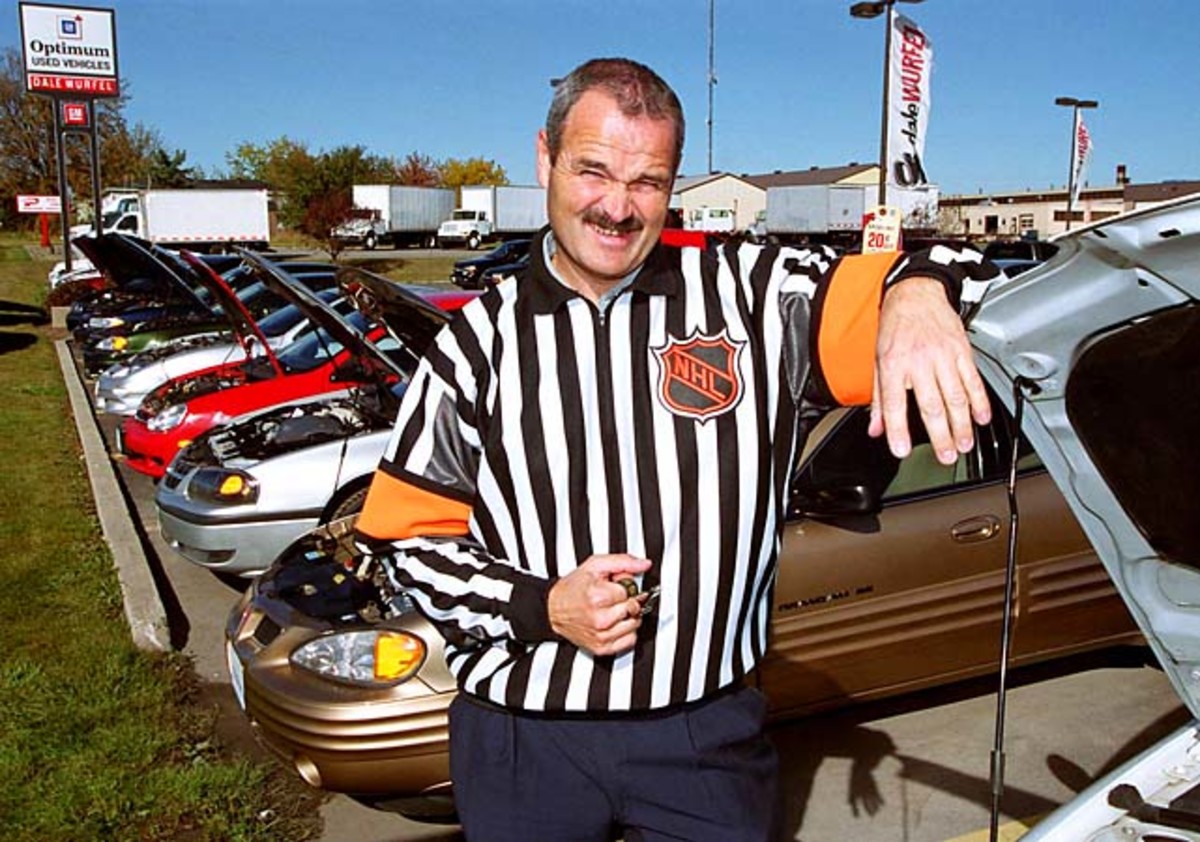
Referee Don Van Massenhoven became a sales consultant at Dale Wurfel Pontiac/Buick/GMC Ltd. in Strathroy, Ontario. Fellow referee Bill McCreary installed kitchen cabinets, and Stephen Walkom coached girls hockey.
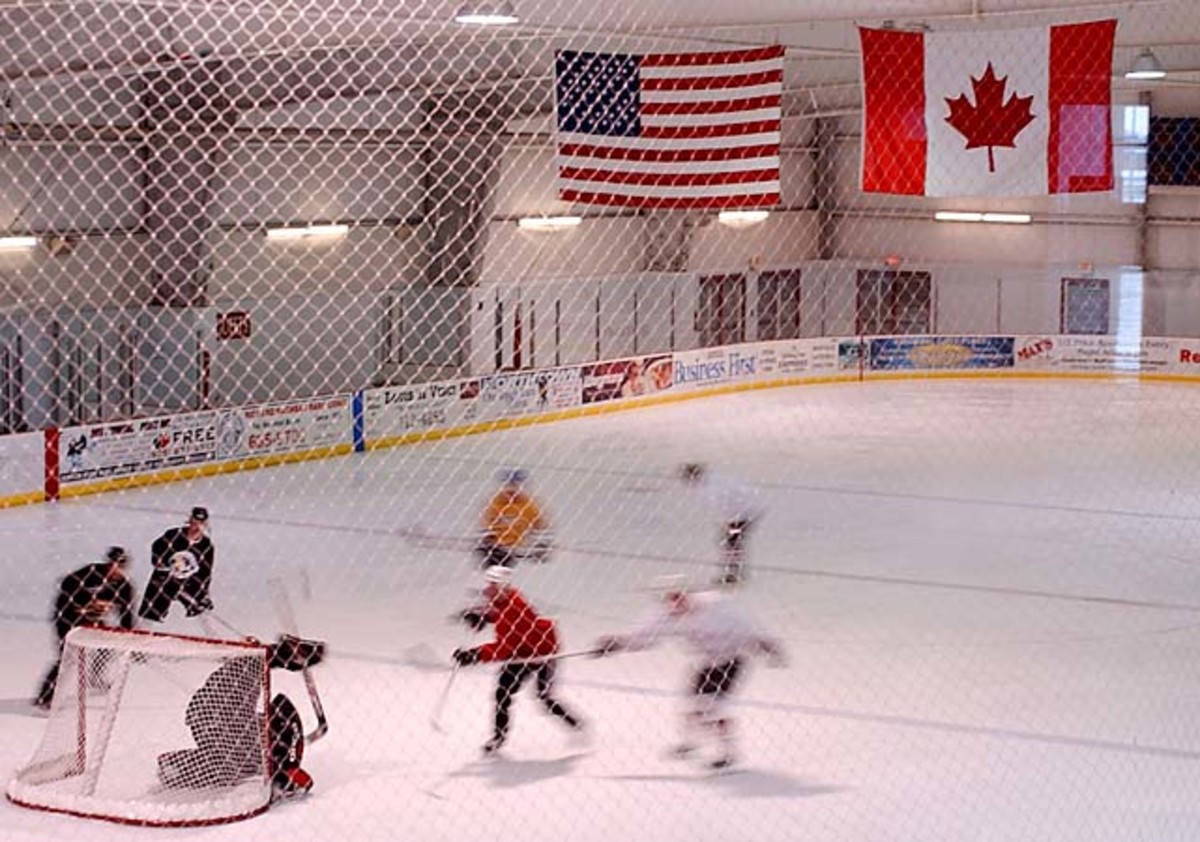
Sabres goalie Martin Biron stops a shot during a pickup game with other NHL players, in Amherst, N.Y., on Feb. 15, 2005.
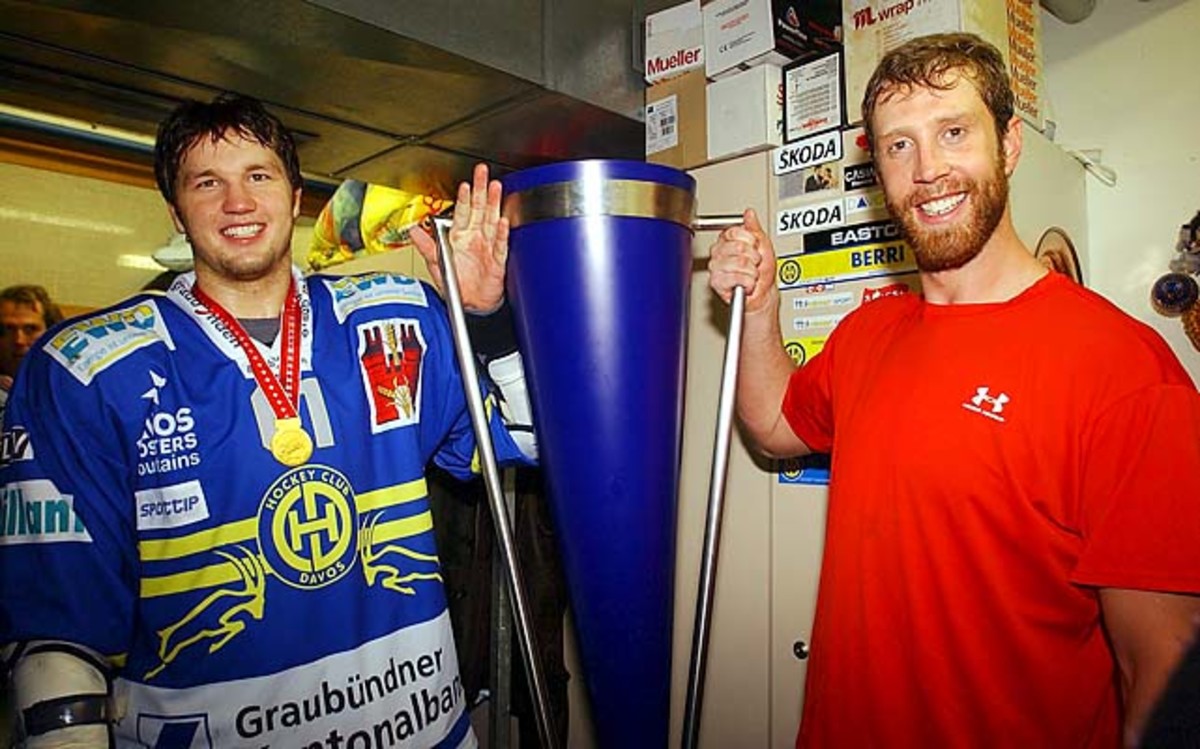
Many stars went abroad to stay sharp. Joe Thornton and Rick Nash won the 2005 Swiss league championship with Davos, lifting the master cup.
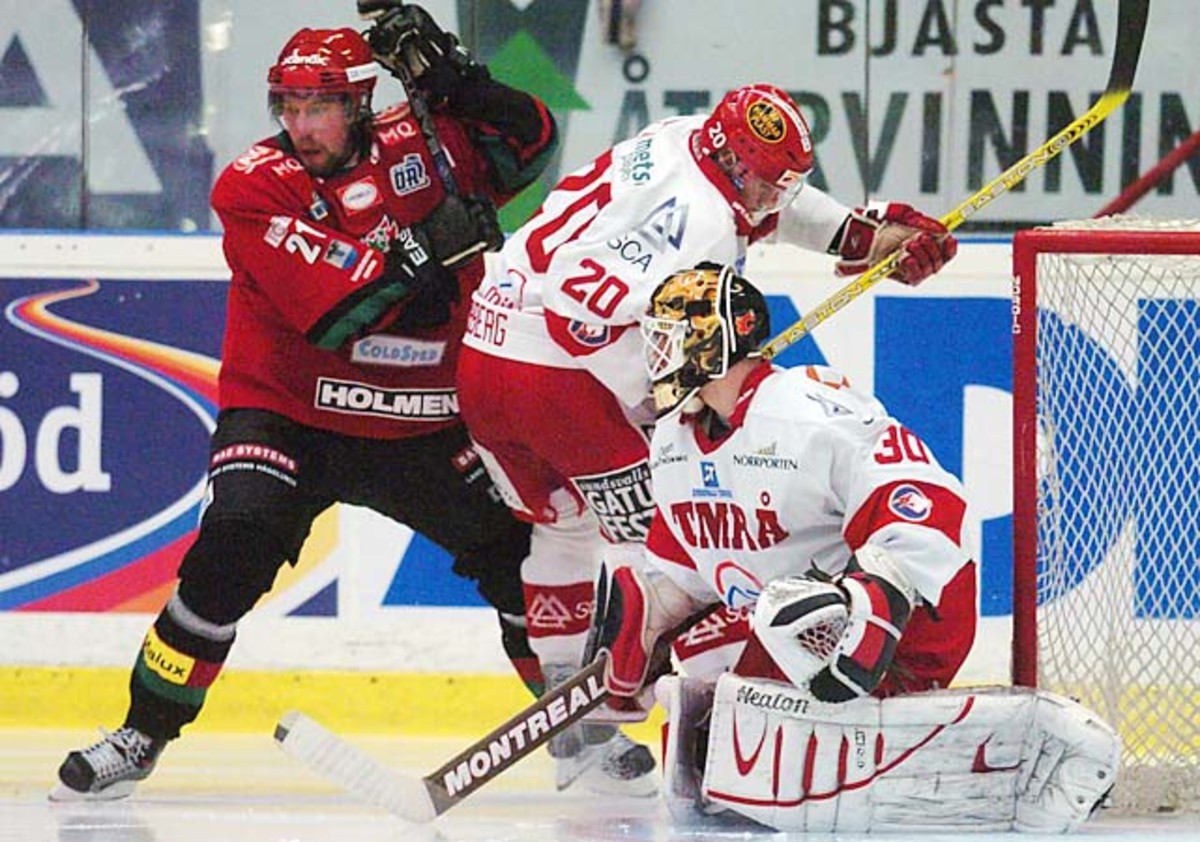
Peter Forsberg, left, fights it out with Henrik Zetterberg in front of goalie Miika Kiprusoff during a Swedish national league match between Modo and Timra in Ornskoldsvik, northern Sweden on Sept. 27, 2004.
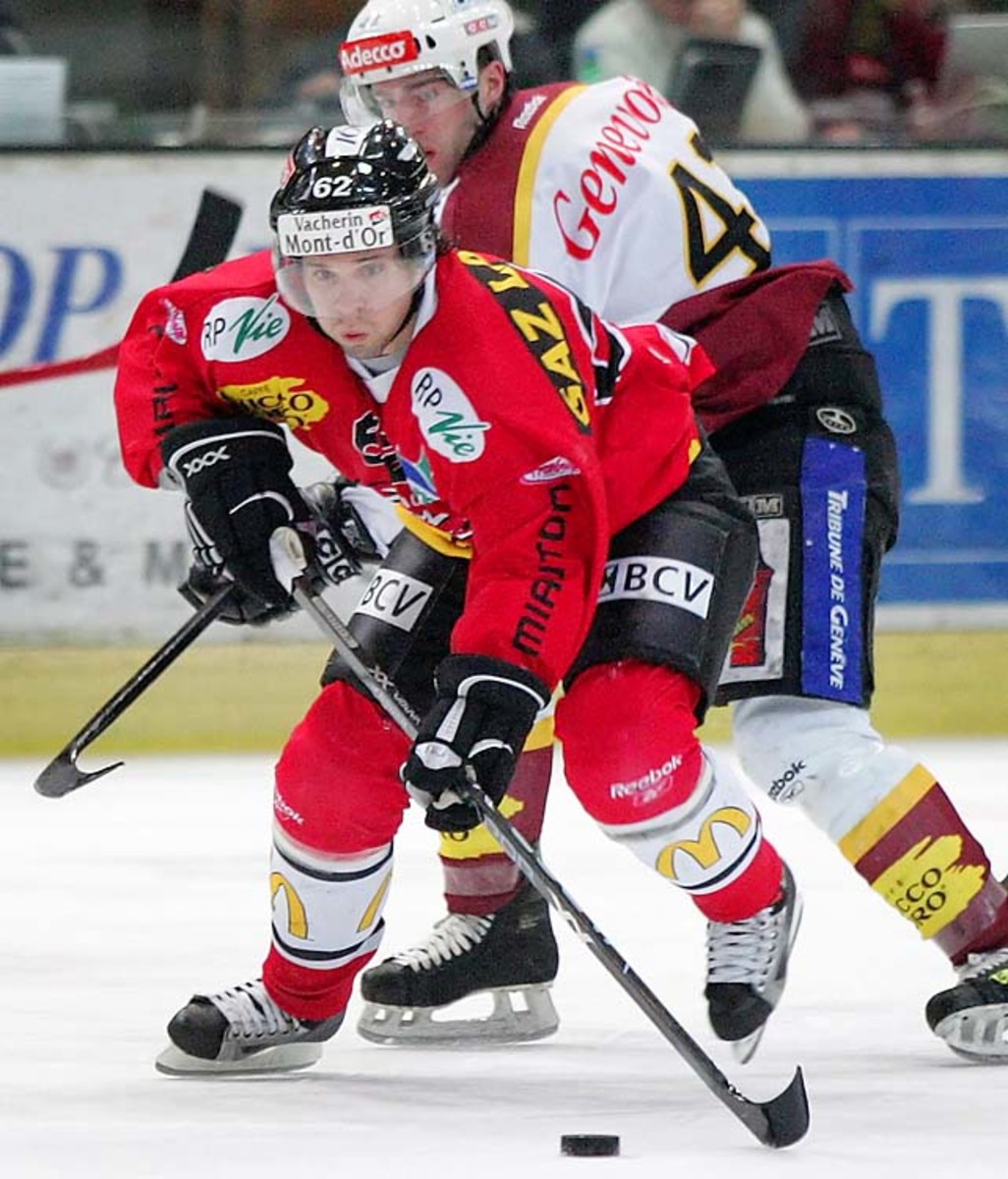
Martin St. Louis (red) also played in Switzerland, for Lausanne.
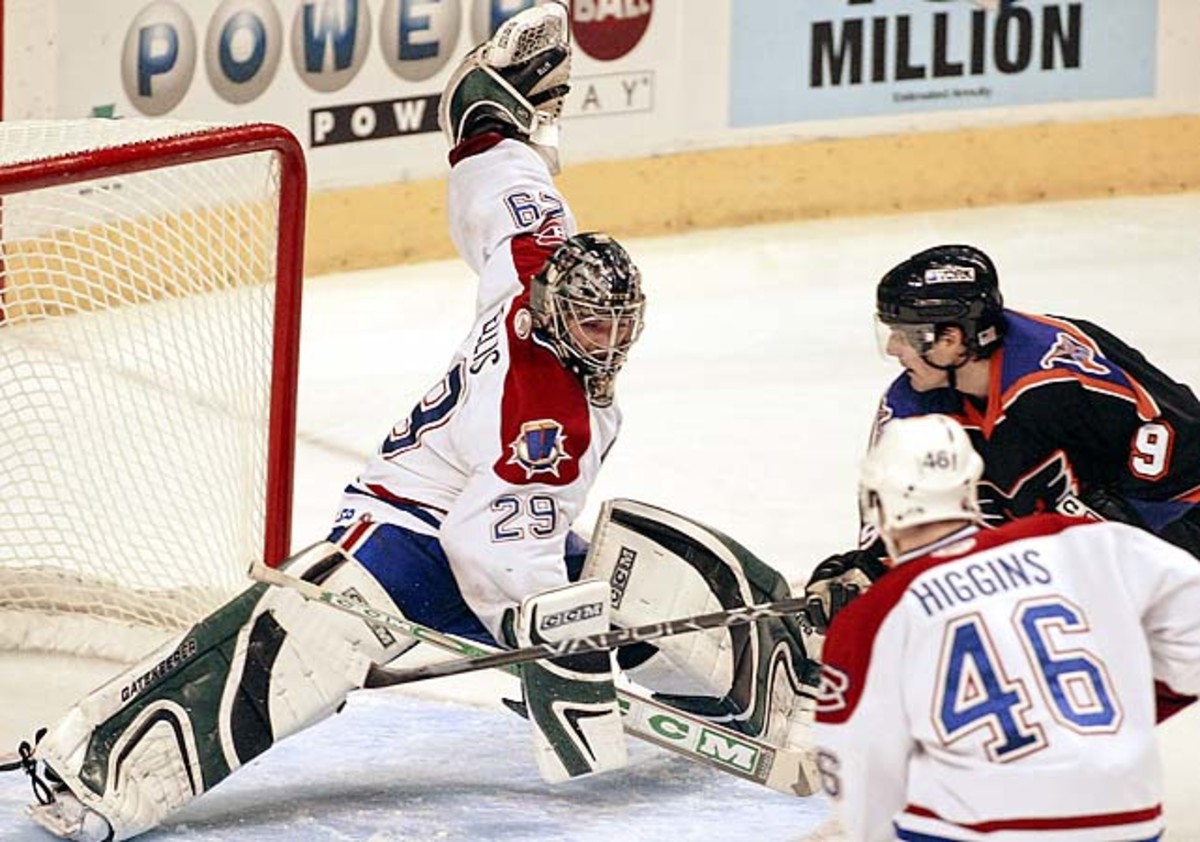
The Philadelphia Phantoms' Patrick Sharp scores past Hamilton Bulldogs goalie Dan Ellis as Chris Higgins defends during the third period of an AHL game, the first hockey game in Philadelphia under the lockout.
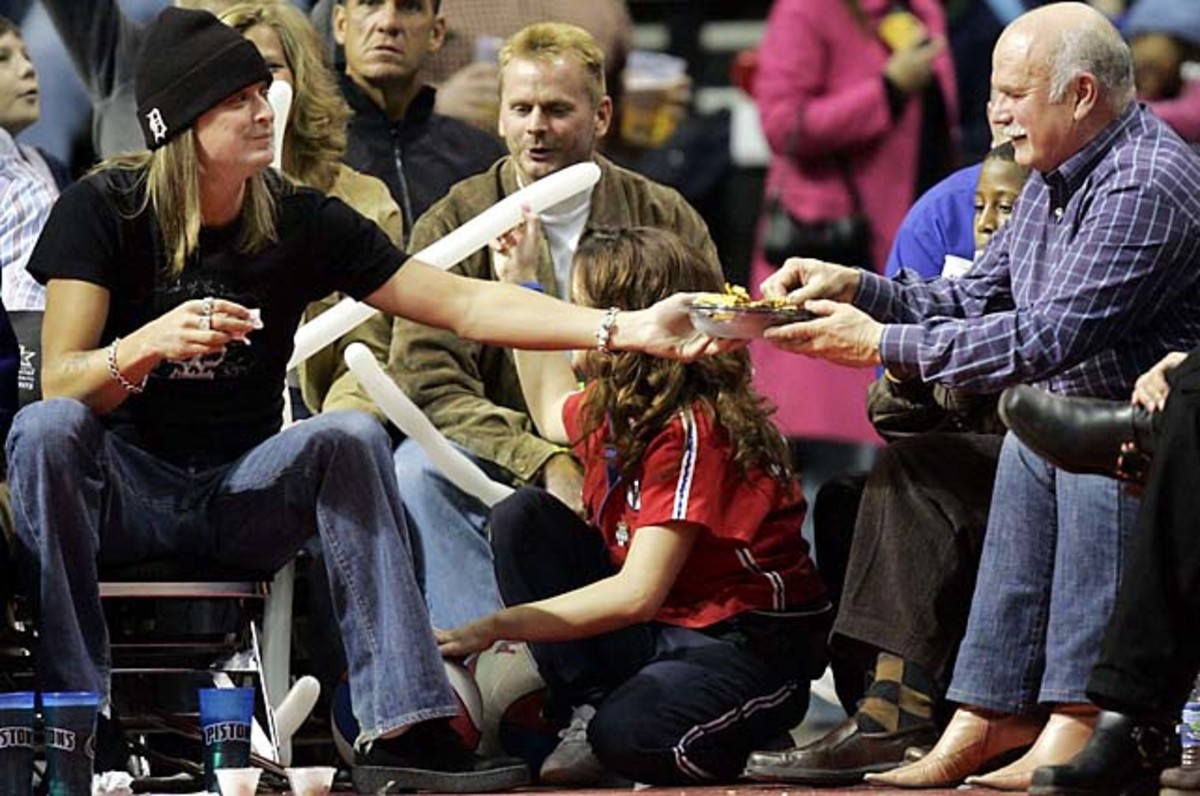
Kid Rock offers nachos to Hurricanes owner Peter Karmanos during a January 2005 game between the Pistons and Knicks. The Pistons won 91-61.
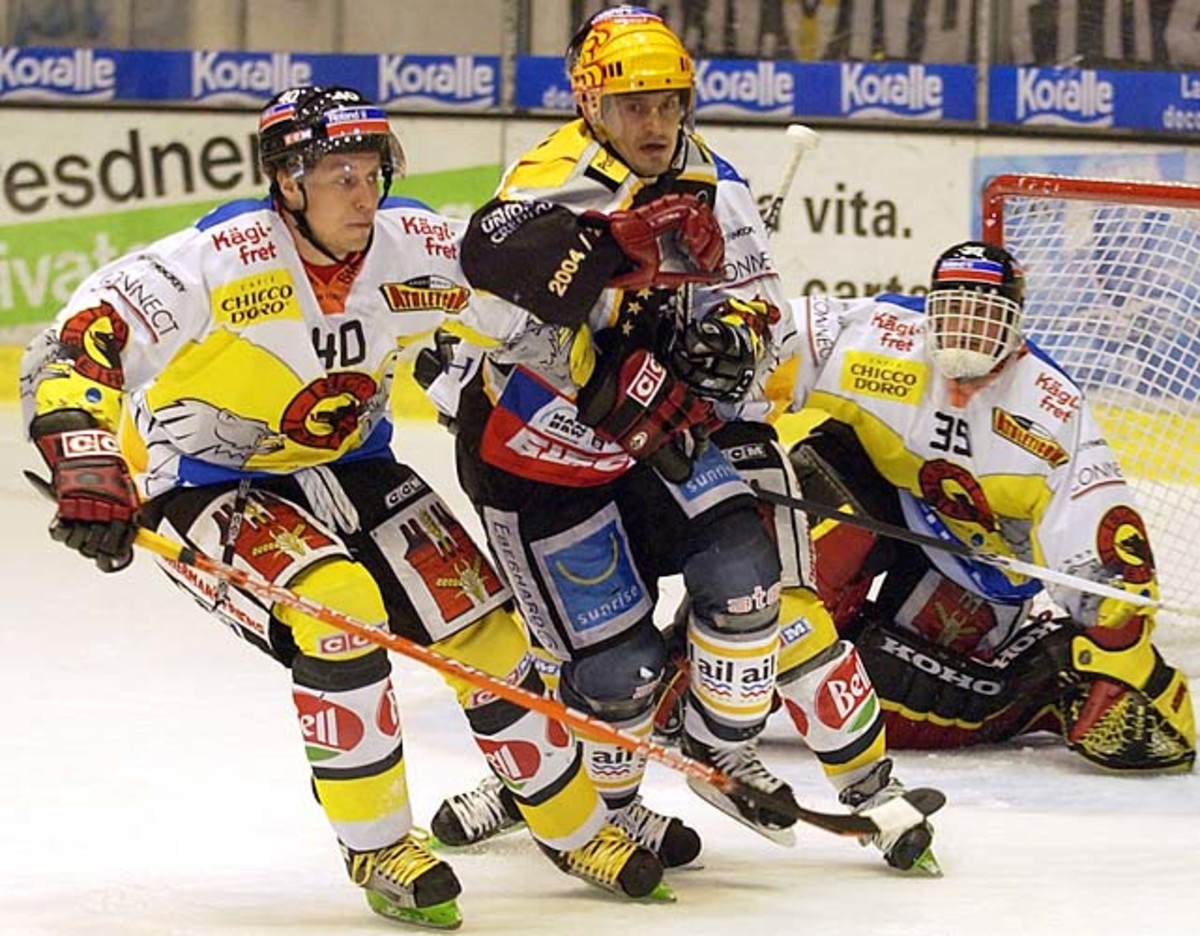
Dany Heatley, left, played for colorful Bern of the Swiss league.
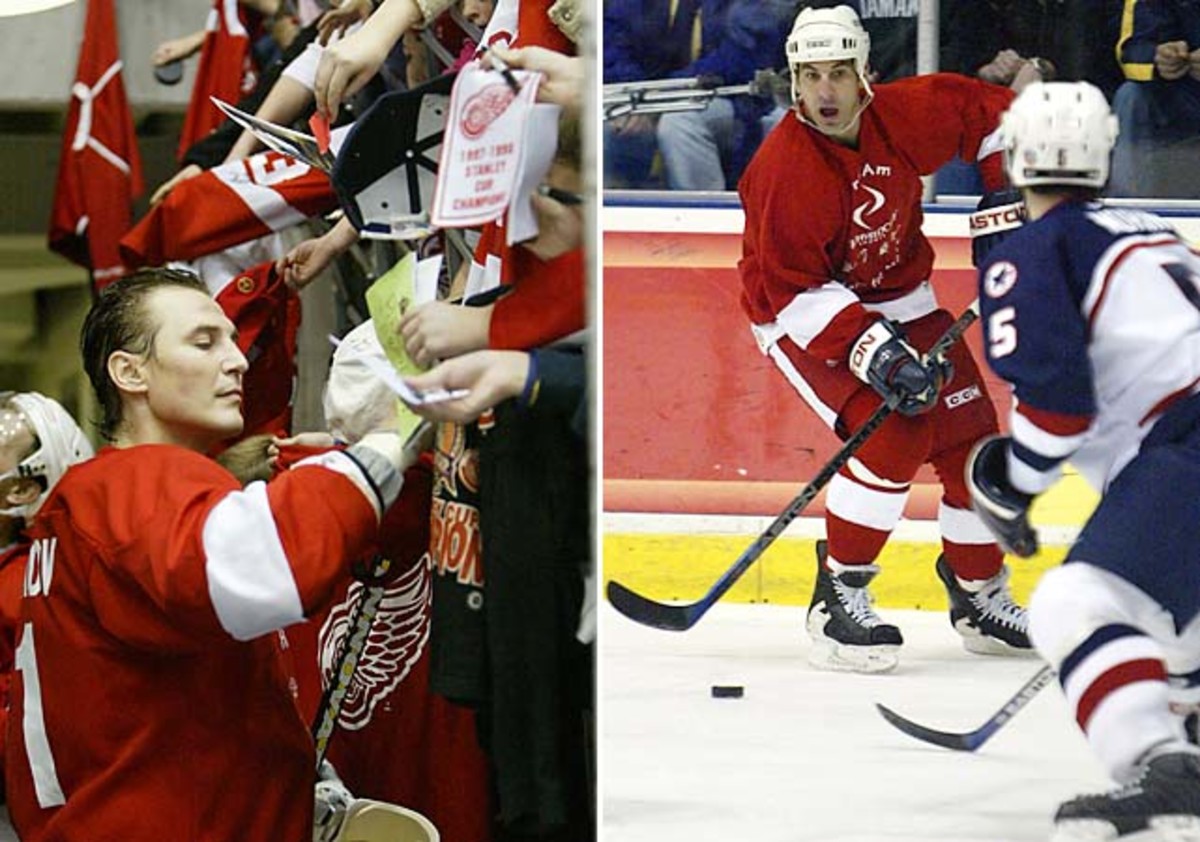
On Dec. 2, 2004, an NHL Pro team faced the under-18 USA team at the University of Michigan. Fedorov (left) signs autographs. Chris Chelios (right) brings the puck up the ice.
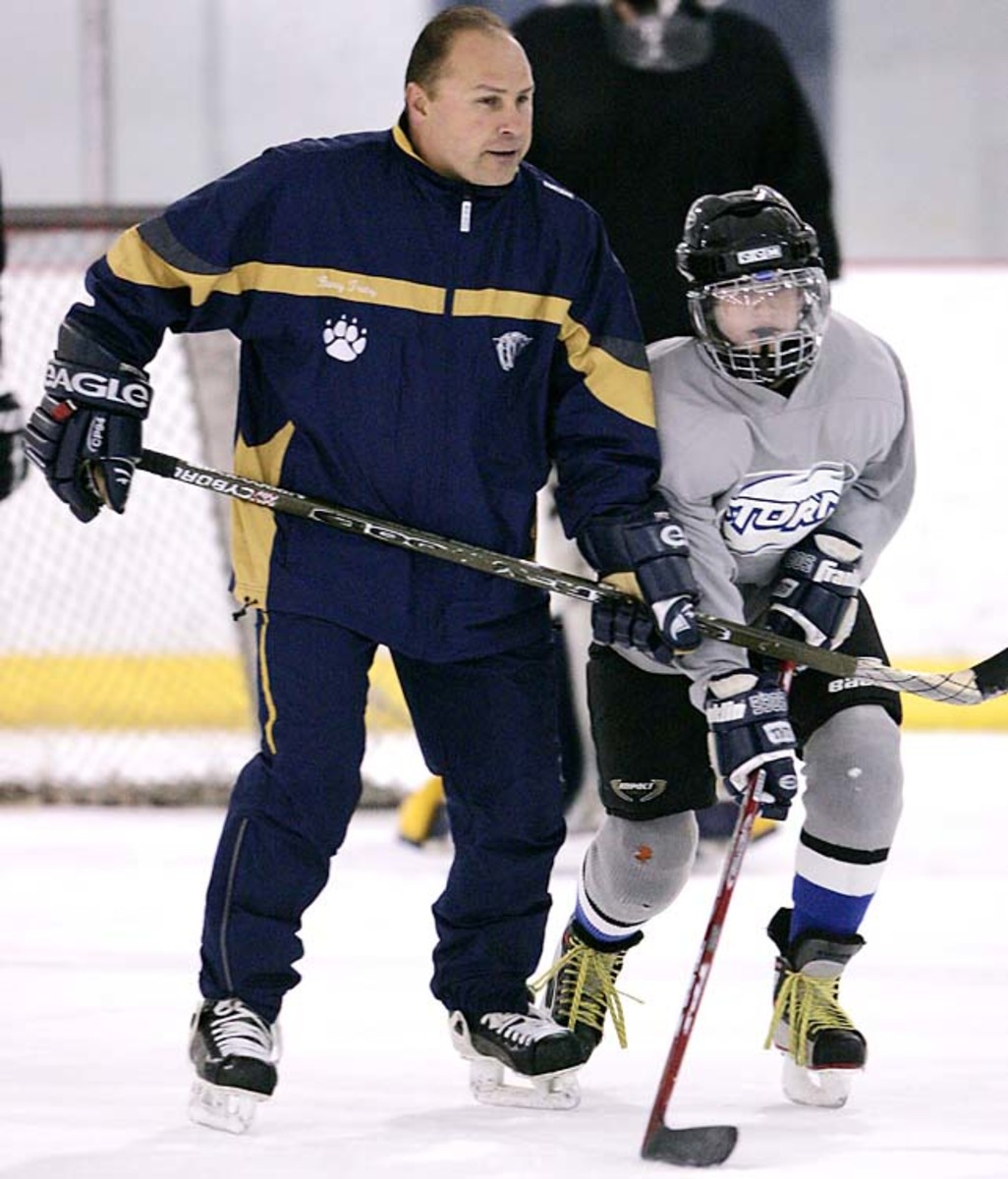
Predators coach Barry Trotz coached a high school hockey team in Franklin, Tenn.
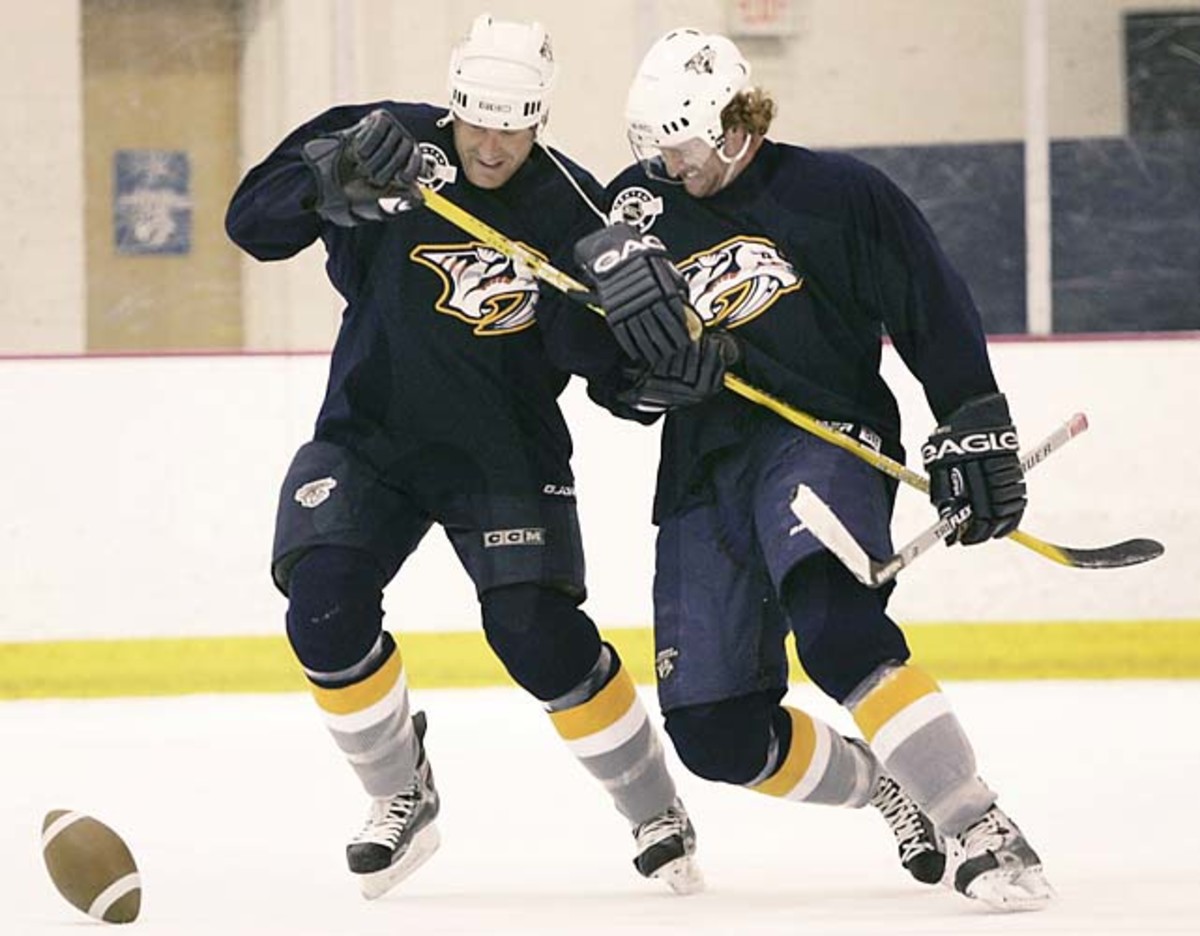
Predators Jim McKenzie, left, and Scott Hartnell chase a football on the ice at the end of a workout at the team's practice facility on Sept. 15, 2004, the last day players were able to use team facilities before the league locked out the players.
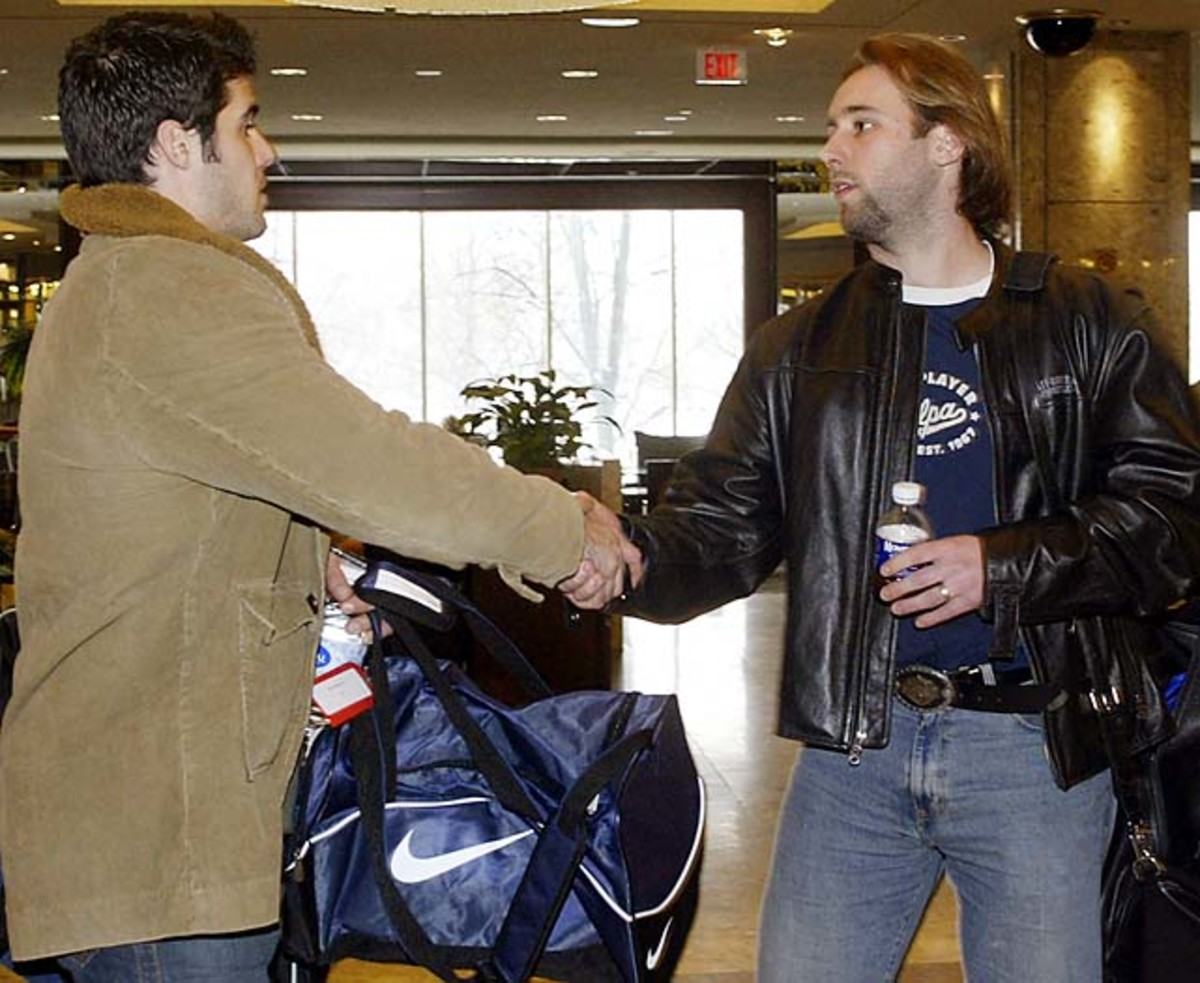
Goalies Rick DiPietro (left) of the Islanders and Robert Esche of the Flyers shake hands as they leave a meeting with other locked-out players and the NHL Players Association on March 1, 2005.
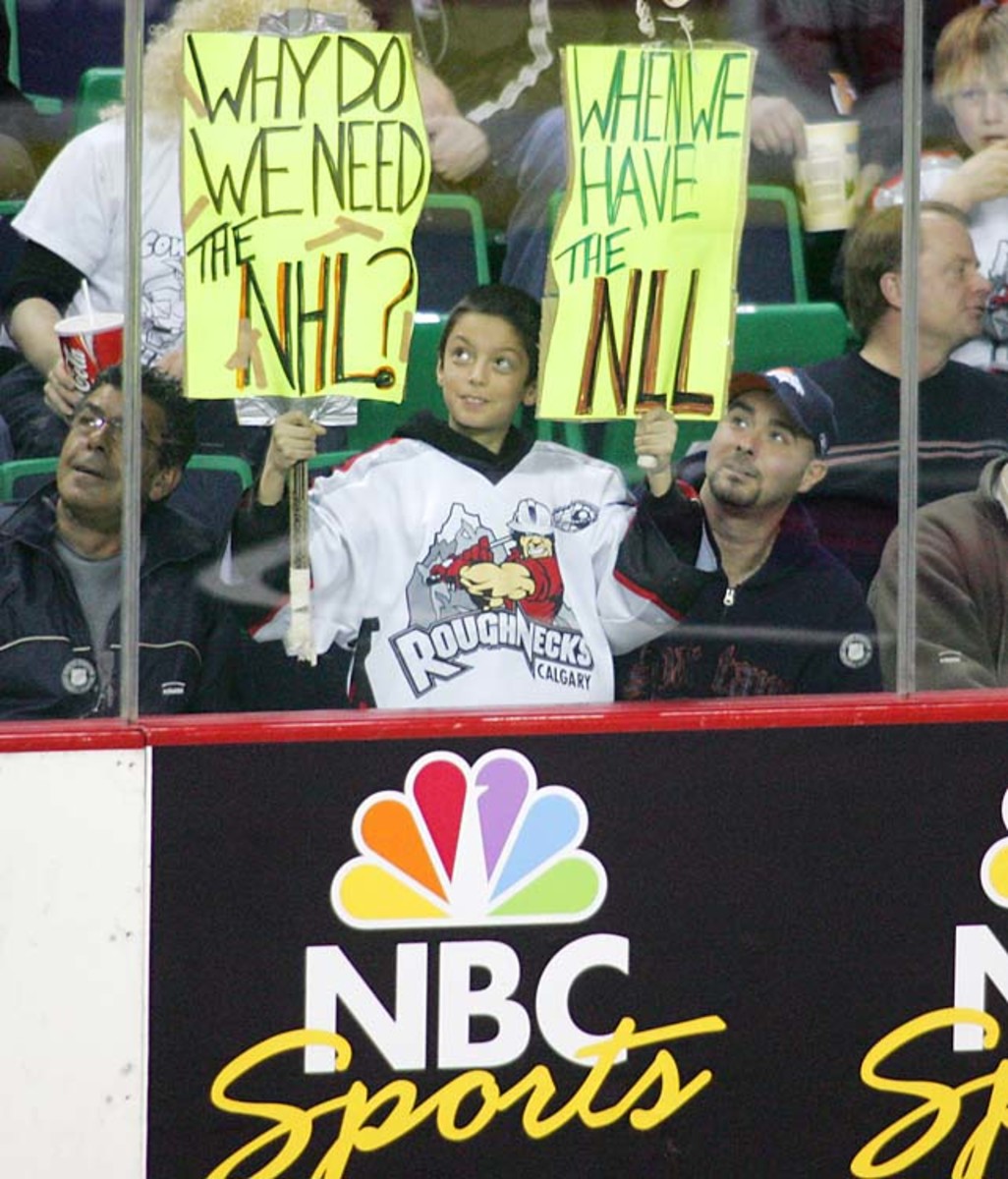
A young lacrosse fan gives his opinion on the NHL lockout during the National Lacrosse League All-Star game at the Saddledome in Calgary, Alberta, usually the home of the Flames.
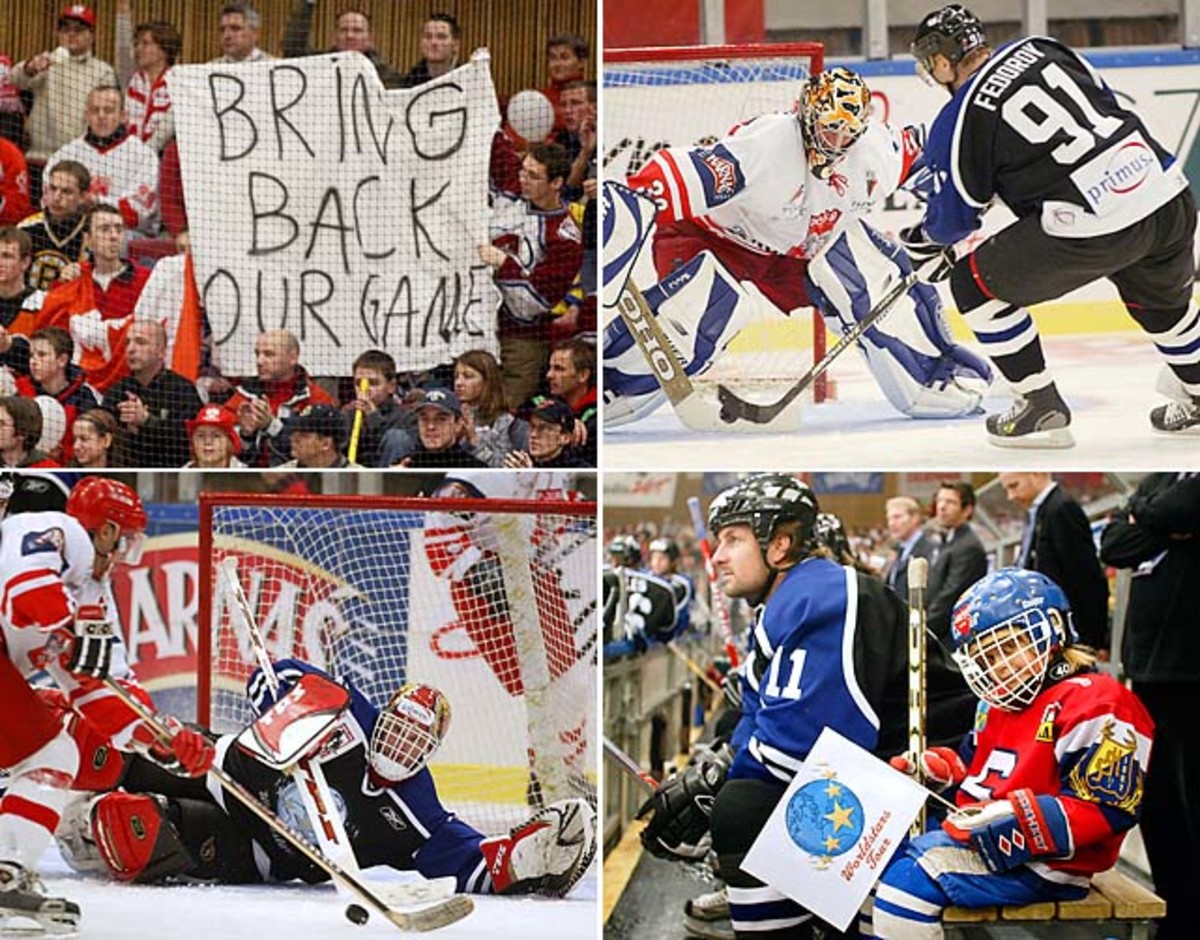
An NHL World Stars team played an exhibition with Polish All-Stars on Dec. 22, 2004 in Katowice, Poland. Fedorov was among the star skaters with Dominik Hasek in net and Tony Amonte enjoying some time on the bench with a young fan.
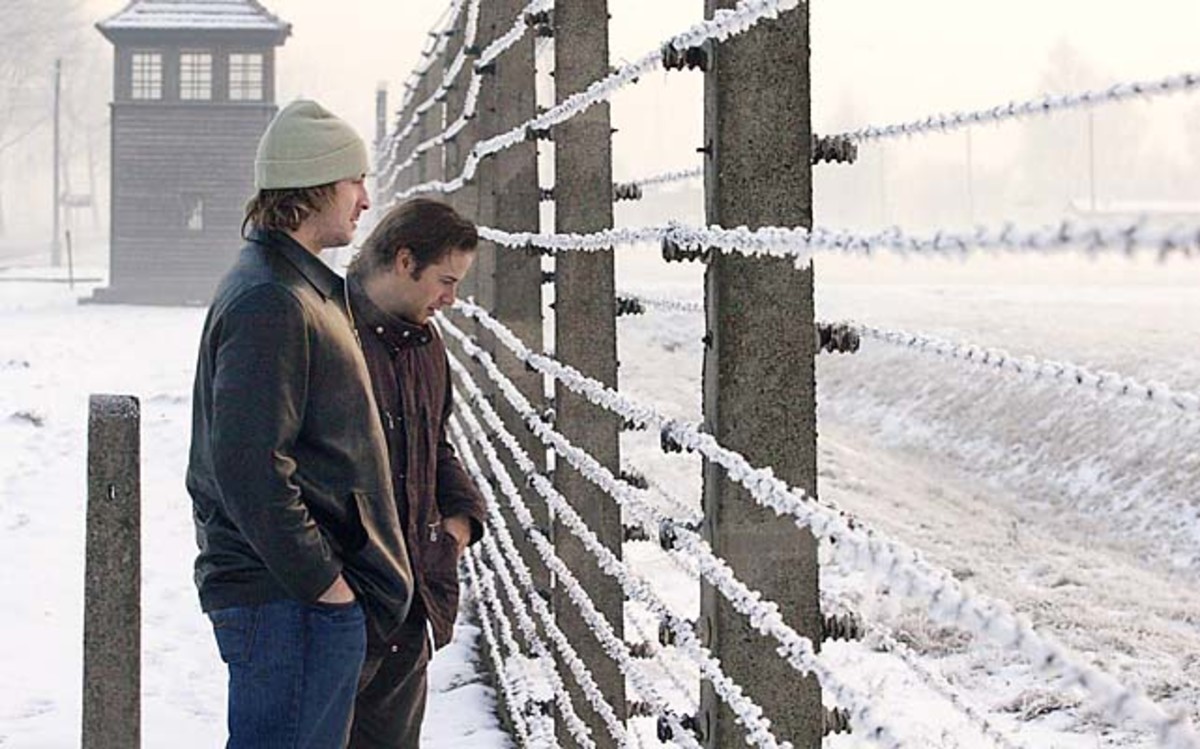
World Stars Rhett Warrener, left, and Ray Whitney peer through the fence as they visit the Auschwitz-Birkenau World War II concentration camp.
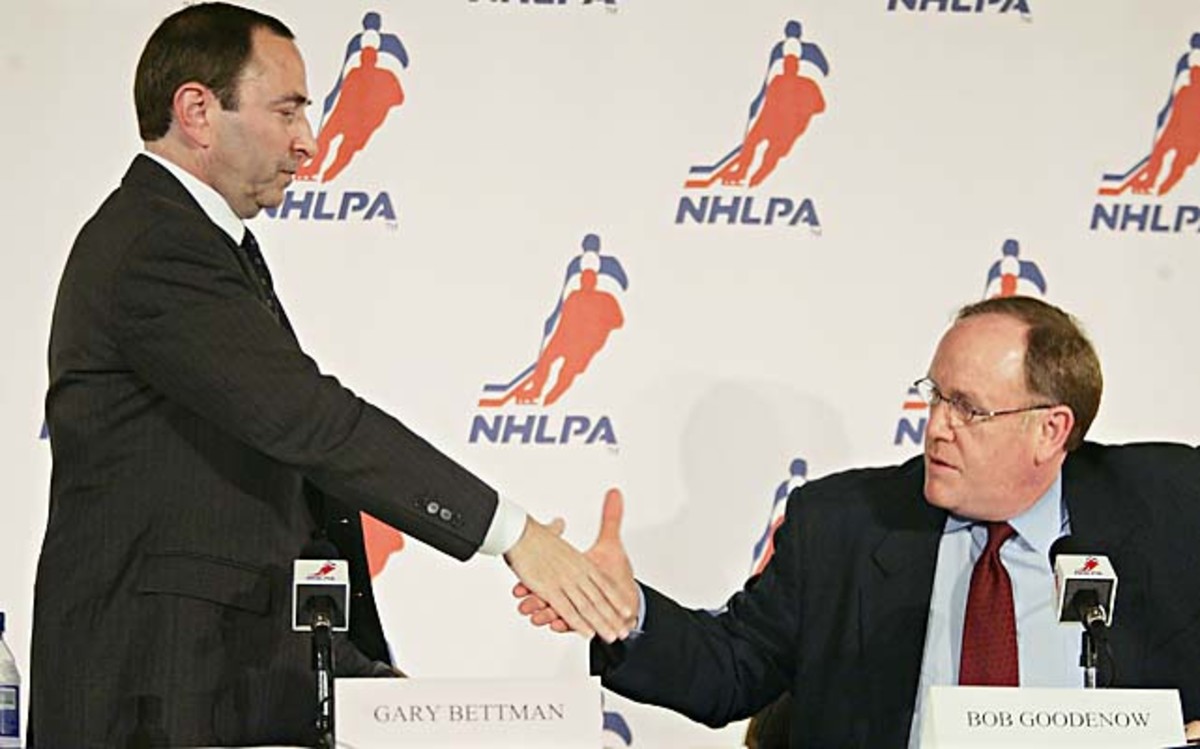
Bettman, left, shakes hands with NHLPA Executive Director Bob Goodenow after the players agreed to a labor settlement on July 21, 2005.
Best teams before the lockout: Detroit Red Wings and New Jersey Devils (3 Stanley Cups since 1994–95 lockout); Colorado Avalanche (2)
Best teams after the lockout: Chicago Blackhawks and Los Angeles Kings (2 Cups each—neither made the 2004 playoffs)
Average player salary before the lockout: $1.83 million (up from $892,000 in ’96)
Average player salary now: $2.4 million
Top paid players before the lockout: Peter Forsberg,JaromirJagr ($11 million per year)
Top paid player now:Shea Weber ($14 million)
"They're comfortable, they're presumptuous, they know they're going to play and they don't have to fight for the position.” — Bruins owner Jeremy Jacobs, commenting on the greed of the players
GALLERY: 20 Best Players at the 2004 lockout
NHL's 20 Best Players by the 2004 lockout
20. Daniel Sedin, LW
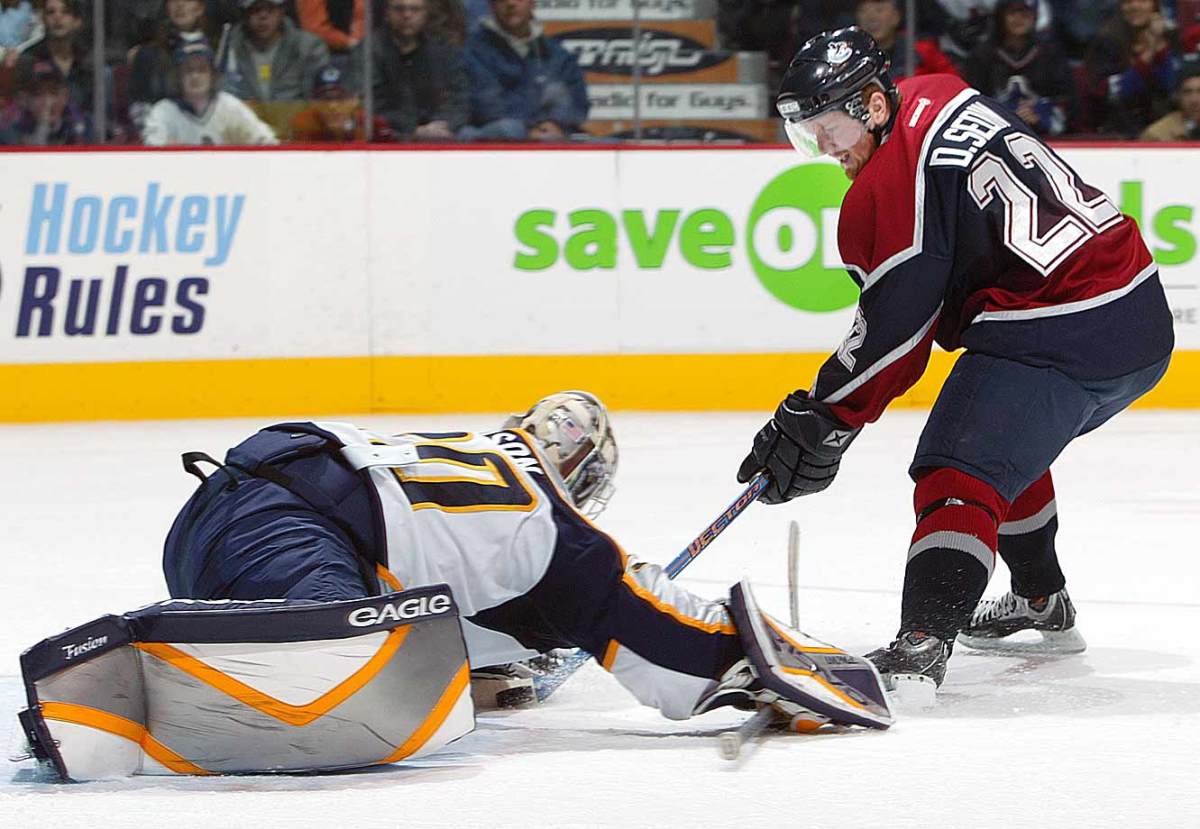
The scoring half of the Sedin twins, Daniel is also a superb playmaker. He joined the Canucks with his brother, Henrik, in 2000, just before his 20th birthday and established himself as one of the more dynamic players in the league. He now has 307 goals and 805 points in 979 games and was the NHL’s scoring leader in 2011. He also won a gold medal at the 2006 Olympics while playing for Sweden.
19. Henrik Sedin, C
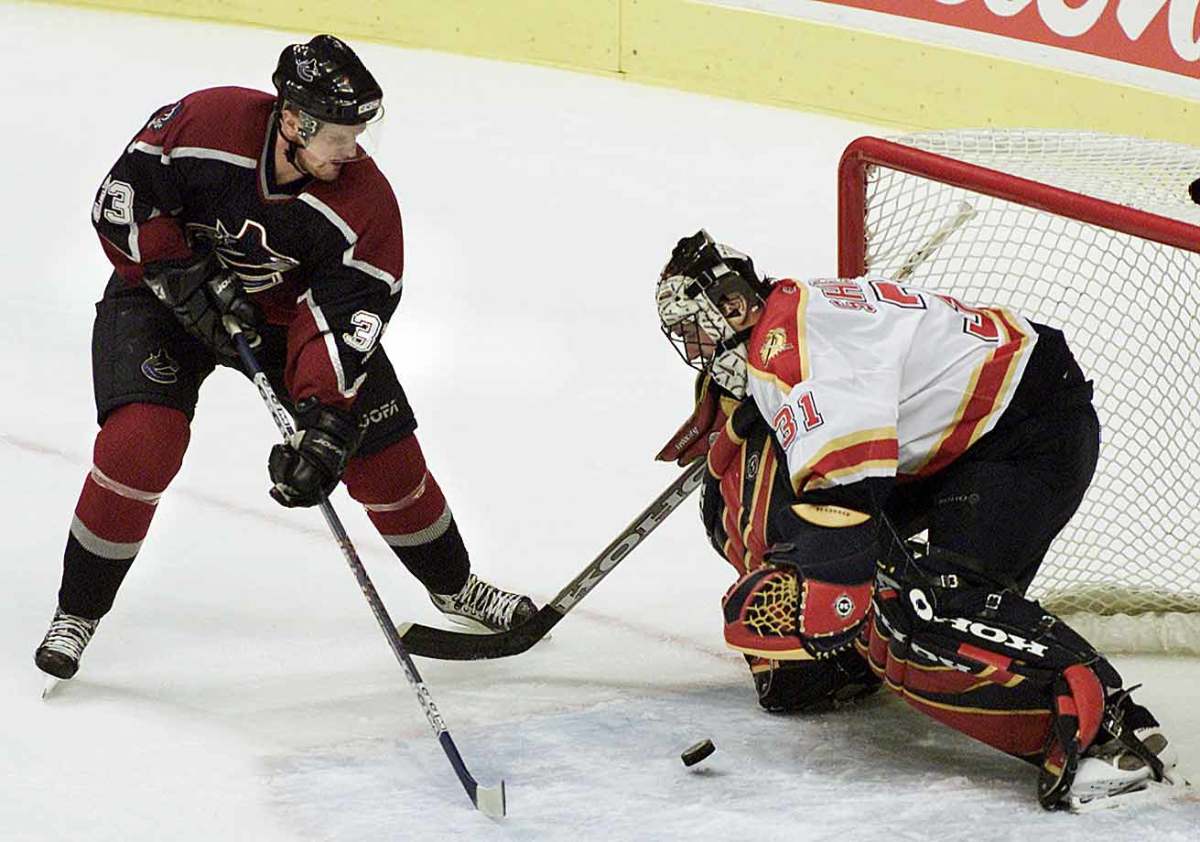
Known as the playmaking half of the Sedin twins, Henrik has been a superb complement to his goal scoring twin, Daniel, since they joined the Canucks in 2000. He posted the first of his six straight 60-assist seasons the season after lockout and won the Hart Trophy in 2010, after leading the league with 83 assists and 112 points. In 2011, he and Daniel helped Vancouver reach the Stanley Cup Final.
18. Patrice Bergeron, C
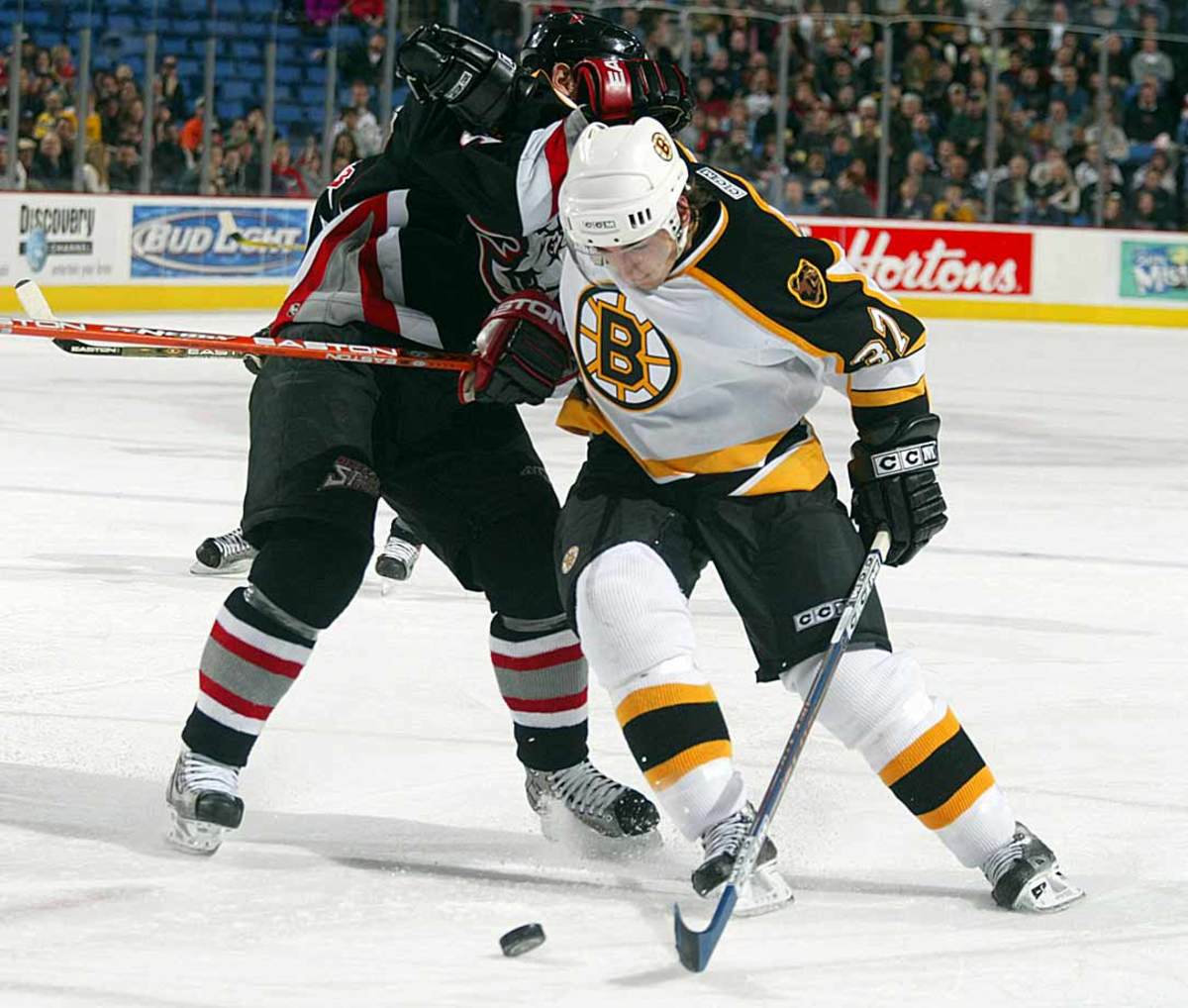
With 39 points in 71 games during his first NHL season, Bergeron was just getting started on a fine career as one of the game’s best two-way players when the NHL locked out. He now has a pair of 30-goal seasons to his credit, but the value of this Stanley-Cup winner and two-time Olympic gold medalist is hard to measure in mere numbers. He's one of the game’s best checking forwards and face-off men and his unselfish play is a reason for the Bruins recent success.
17. Ilya Kovalchuk, LW
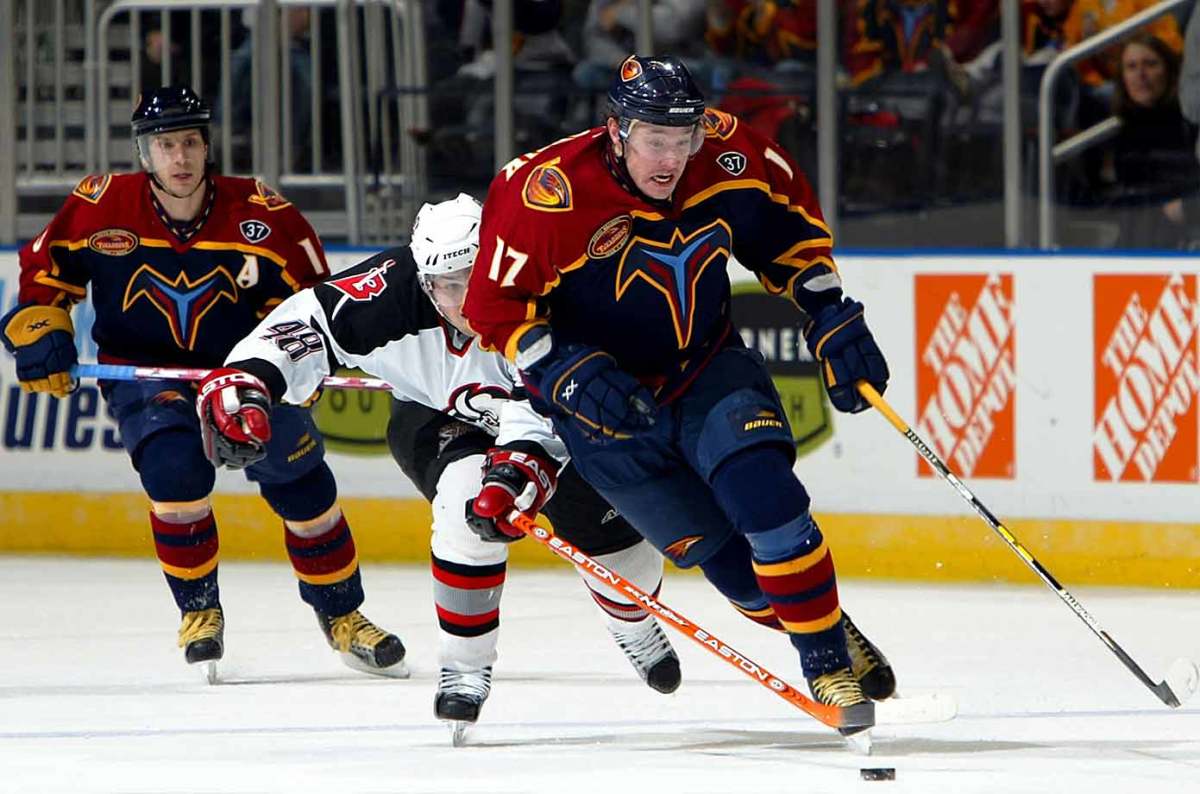
The Russian sniper averaged 36 goals during his three seasons with the Thrashers before the lockout and remained one of the game’s most lethal scorers after the NHL returned. He scored 52 goals in both the 2005-06 and 2007-08 seasons, and though his Russian teams often disappointed at the Olympics, they won the World Ice Hockey Championship in 2008 and 2009. In 2011-12, Kovalchuk set a record for NHL shootout goals in a season with 11.
16. Marian Gaborik, RW
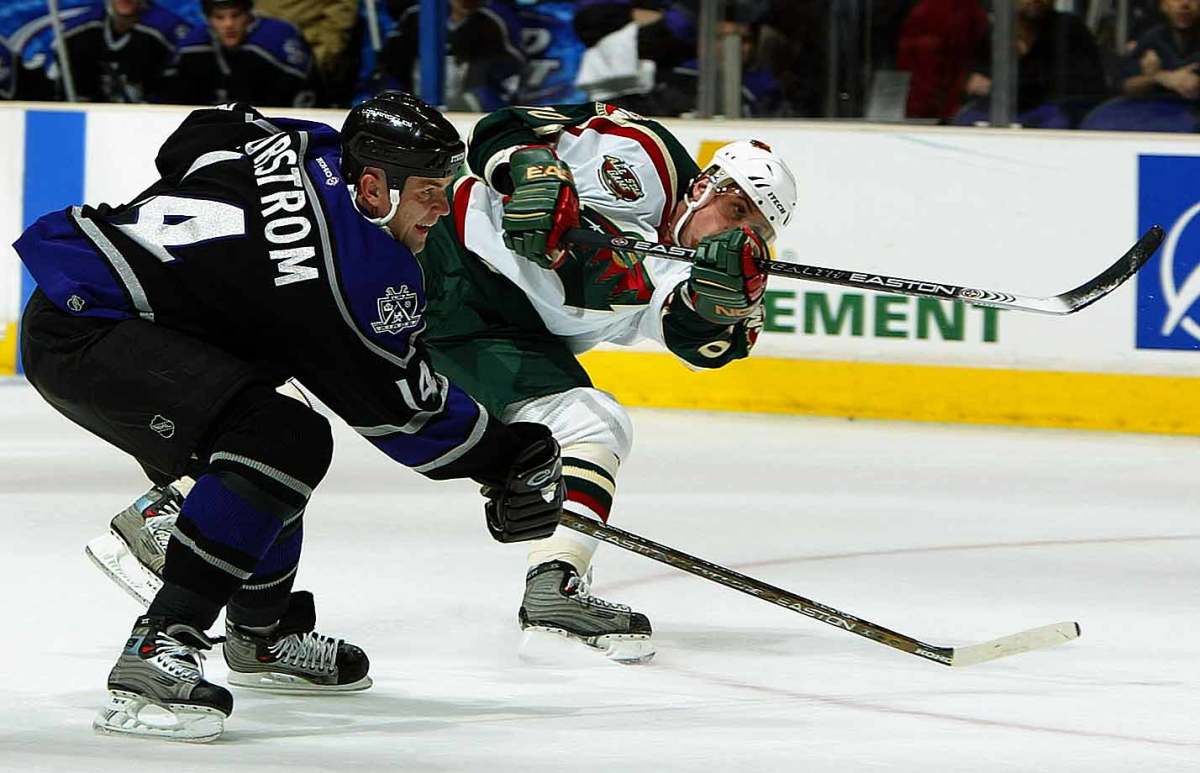
Gaborik played in the All-Star Game and produced a pair of 30-goal campaigns before the lockout, and he recorded five more afterwards, including two 40-goal campaigns with the Rangers in 2009-10 and 2011-12. He was also MVP of the All-Star Game in his final season with New York. After a brief stint with Columbus, he was traded to Los Angeles at the 2014 trade deadline and immediately fit in. Gaborik led the playoffs with 14 goals and won his first Stanley Cup. As of the 2014-15 season he’d scored 347 regular-season goals.
15. Roberto Luongo, G
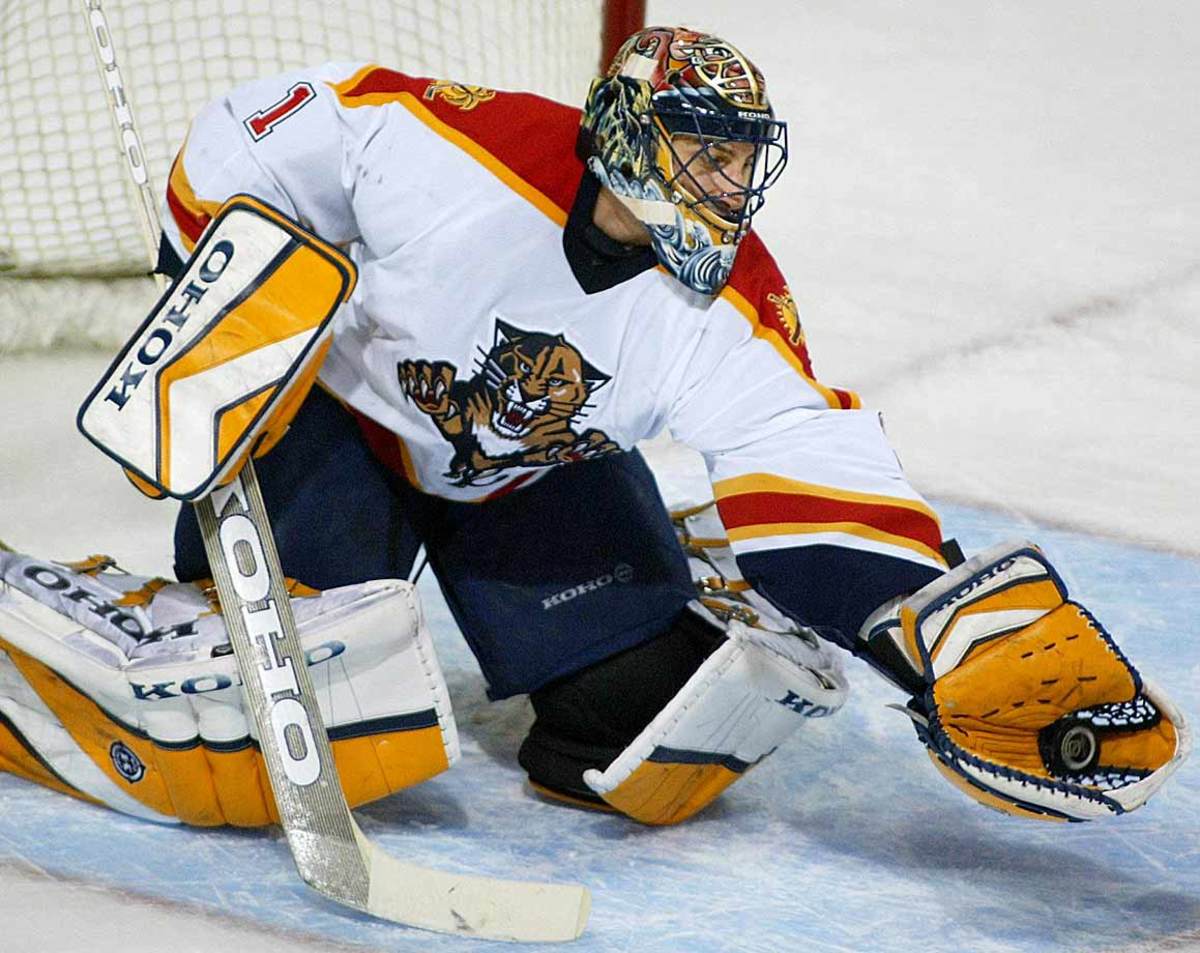
The fourth pick in the 1997 draft, Luongo had been toiling for mediocre teams in Florida at the time of the lockout, but still earned recognition as one of the NHL’s best netminders. In 2003-04, he finished third in the voting for the Vezina Trophy. After being traded to Vancouver in 2006, he blossomed, earning nominations for the 2007 Vezina, Hart and Pearson Trophies, but finishing second for all three. In 2008, the Canucks made him the NHL’s first goalie captain since 1948. He’s also won two Olympic gold medals, one each as a starter and backup, for Canada.
14. Zdeno Chara, D
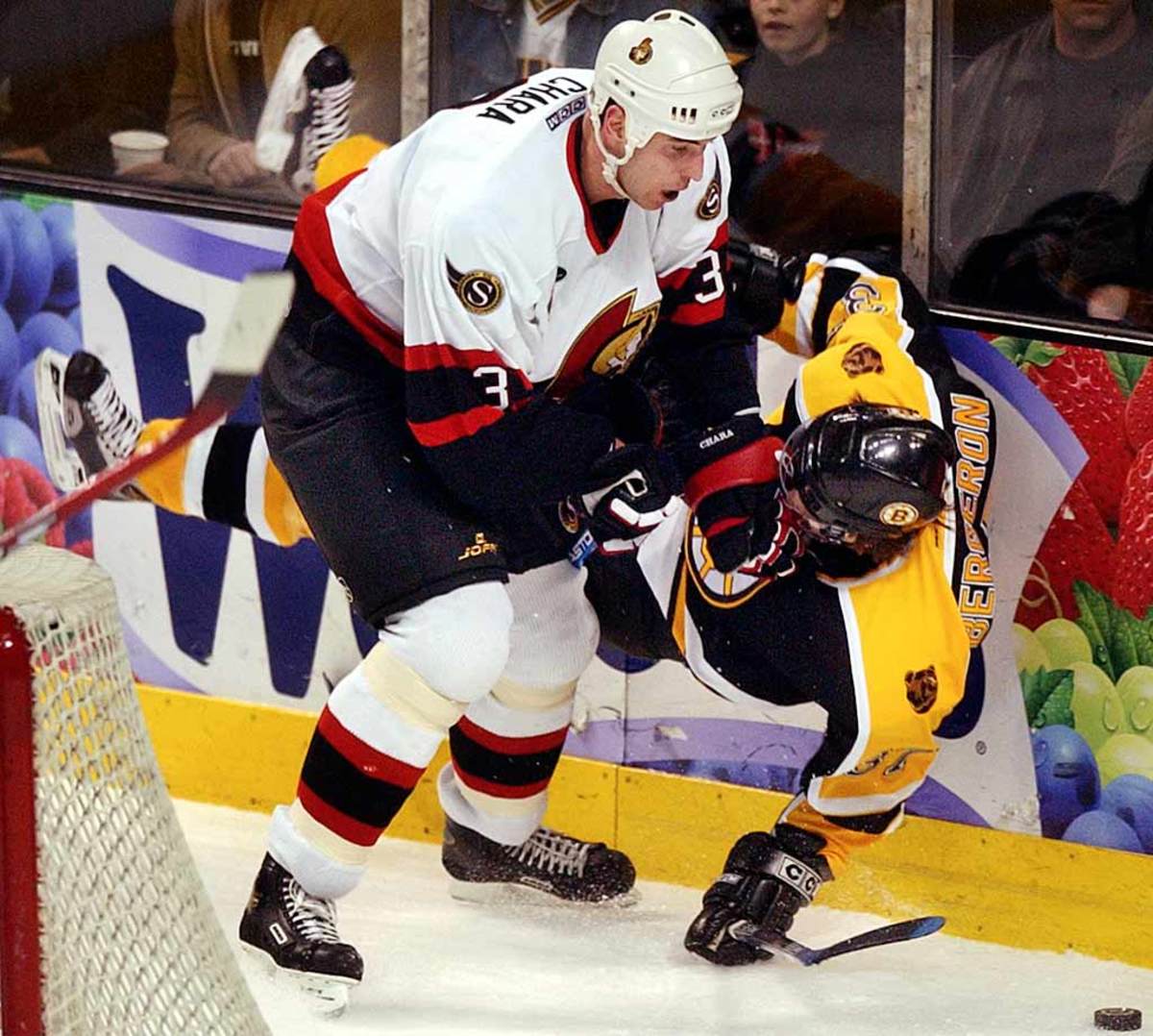
The towering 6’-9” defenseman was coming into his own at the time of the lockout, having been named a First Team All-Star with Ottawa the previous season, his seventh in the NHL. He’d finished second in the voting for the 2004 Norris Trophy, an award he later won with Boston in 2009. (He’s been a finalist six times.) Chara has won the league’s hardest-shot competition at the All-Star Game five times. His blast of 108.8 miles-per-hour in 2012 remains the hardest shot on record.
13. Marian Hossa, RW
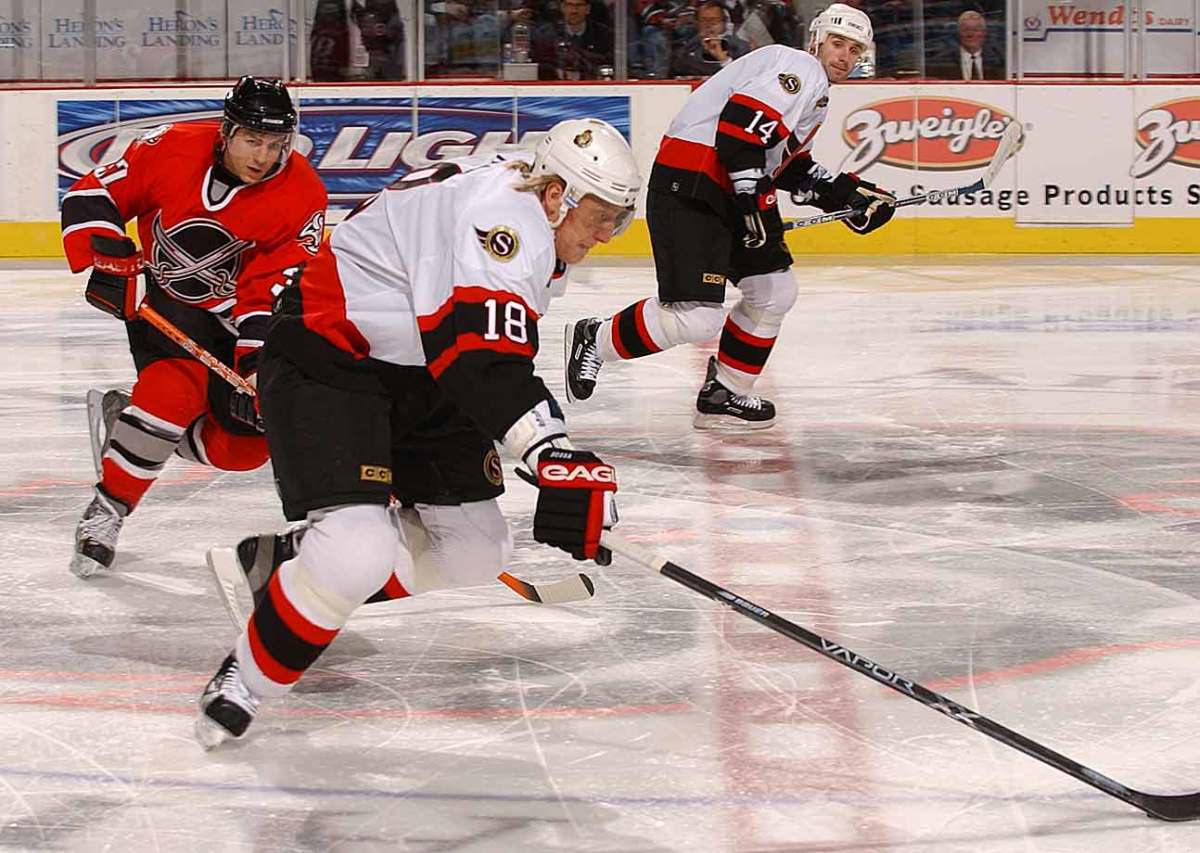
At the time of the lockout, Hossa was coming off four straight 30-goal seasons with the Senators and he later posted his first 100-point season with the Thrashers, in 2006-07. He’s also had the unusual distinction of playing in the Stanley Cup Final three years in a row (2008-10) for three different teams, finally winning the prize with Chicago after stints in Pittsburgh and Detroit. He’s now produced 995 points during his fine NHL career.
12. Daniel Alfredsson, RW
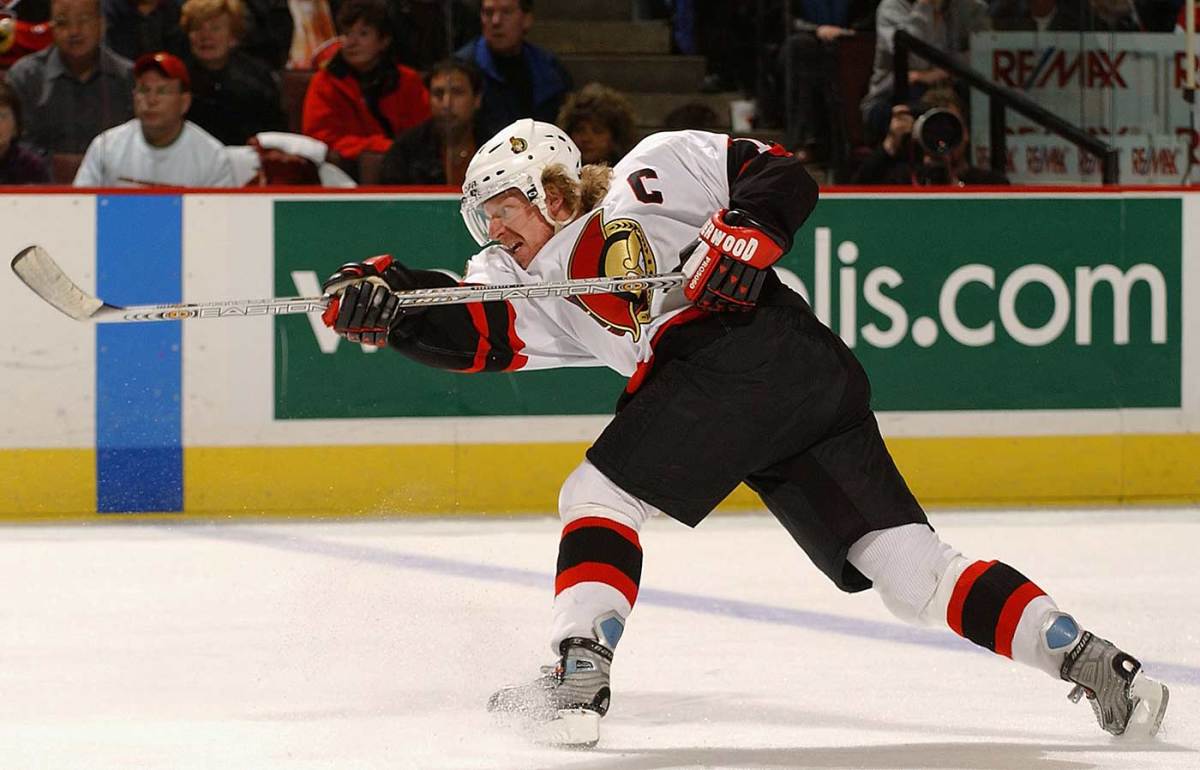
The Swedish star, who won the Calder Trophy in 1996, had produced four straight 70-point seasons and earned four All-Star Game nods with Ottawa when the lockout hit, and he picked up a career-high 103 points in 2005-06. He also won an Olympic gold medal for Sweden in 2006, one of his five appearances at the Games.
11. Pavel Datsyuk, C
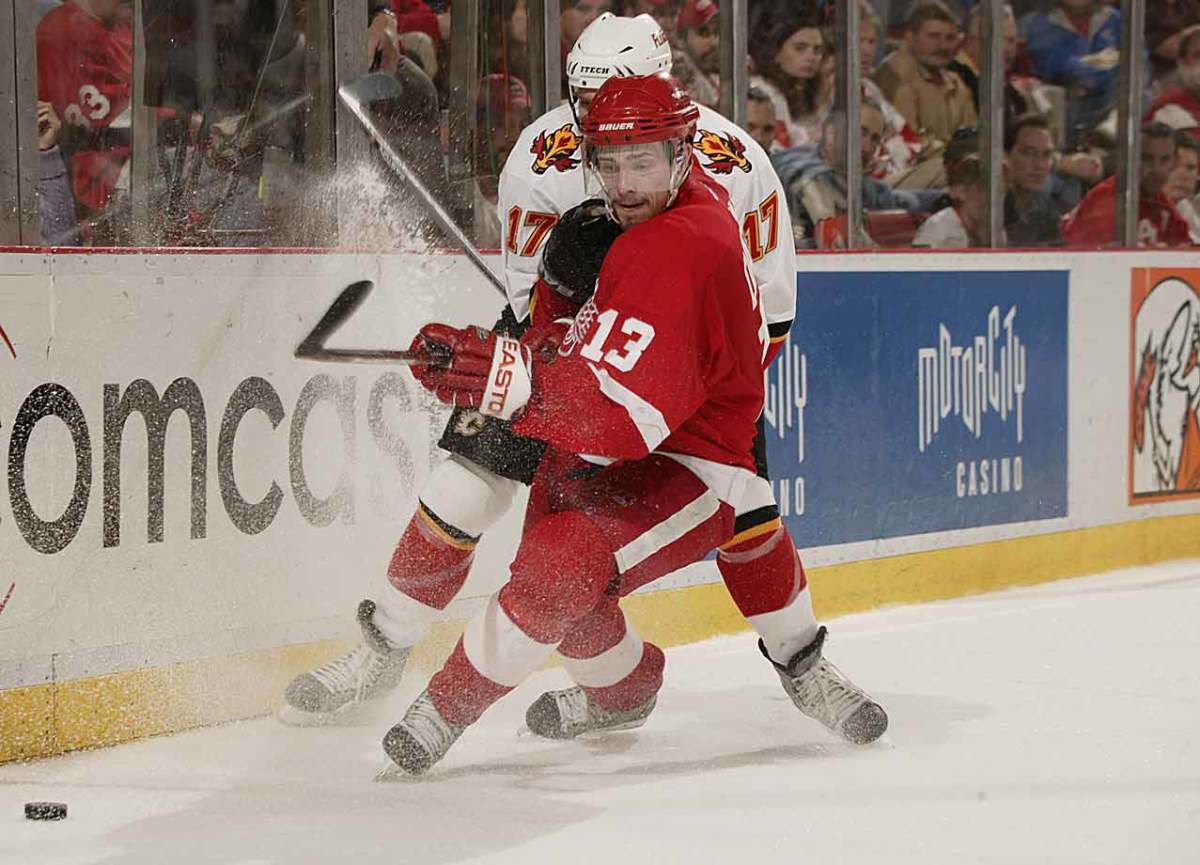
With a breakthrough season of 30 goals and 68 points just before the lockout, Datsyuk was becoming one of the game’s most productive, dynamic and entertaining players. He’d played on Detroit’s 2002 Stanley Cup team, and his best was yet to come. Datsyuk revels in the game’s subtleties, including winning face-offs and swiping pucks with uncommon deftness. Now a two-time Cup winner, he’s won the Selke Trophy three times and the Lady Byng four times.
10. Martin St. Louis, RW
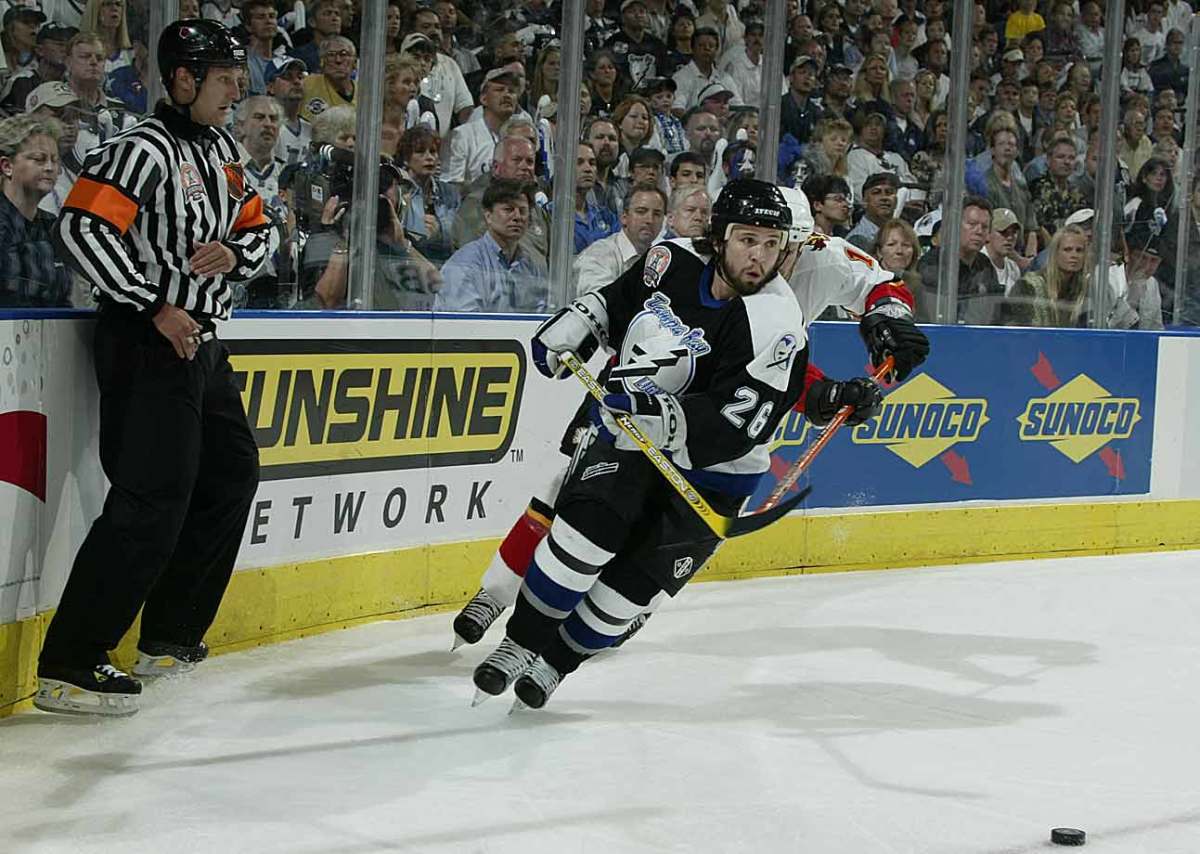
The season before the lockout, the diminutive winger became a bona fide star by leading the NHL in scoring (94 points), winning the Hart Trophy, and sparking the Lightning to the Stanley Cup. He later posted five straight 80-point campaigns, including a career-high 102, between 2006-07 and 2010-11. He’s also added another Hart, and Art Ross, and three Lady Byngs, and now stands just short of a career milestone with 981 career points.
9. Joe Thornton, C
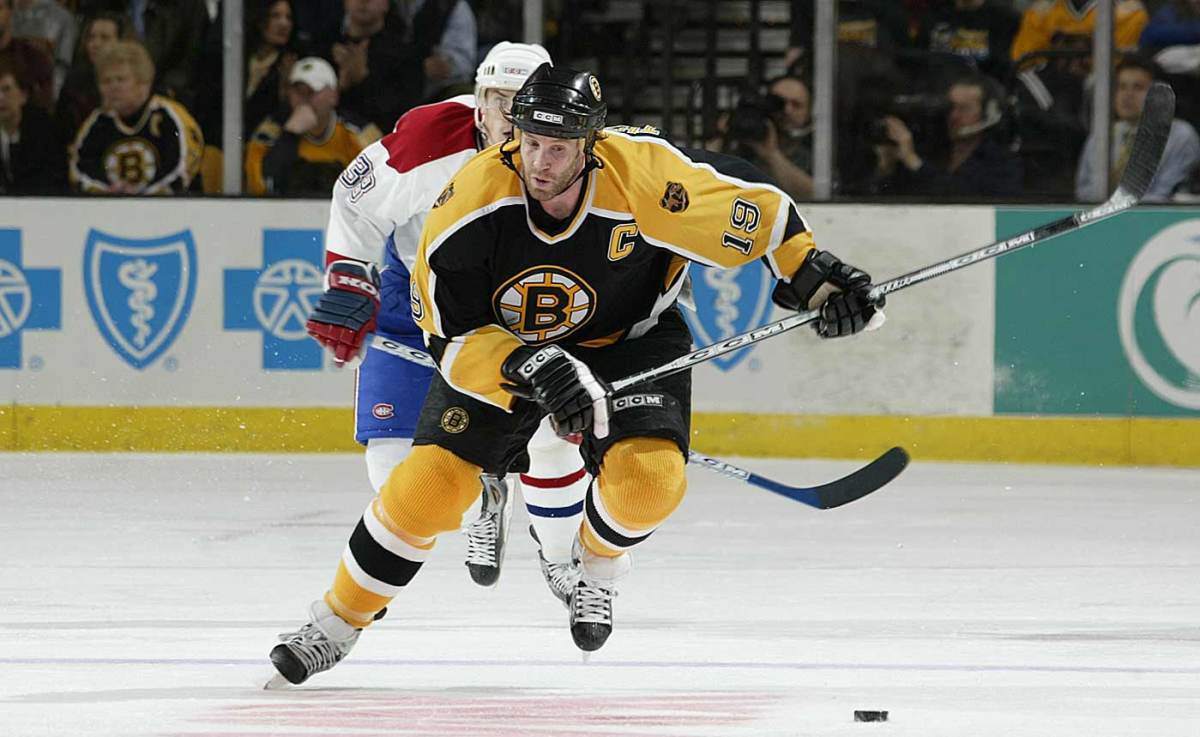
By the lockout, the first overall pick in the 1997 draft had established himself as an All-Star forward with Boston, producing 101 points in 2002-03. The season that play resumed, Thornton was traded to San Jose and became the first player in NHL history to win both the Hart and Art Ross Trophies during a season in which he switched teams. He’s often been criticized for his pass-first play and because his NHL teams have never won the Cup, but his career numbers—1,194 regular-season points and 100 in the playoffs—should land him in the Hall of Fame.
8. Jarome Iginla, RW
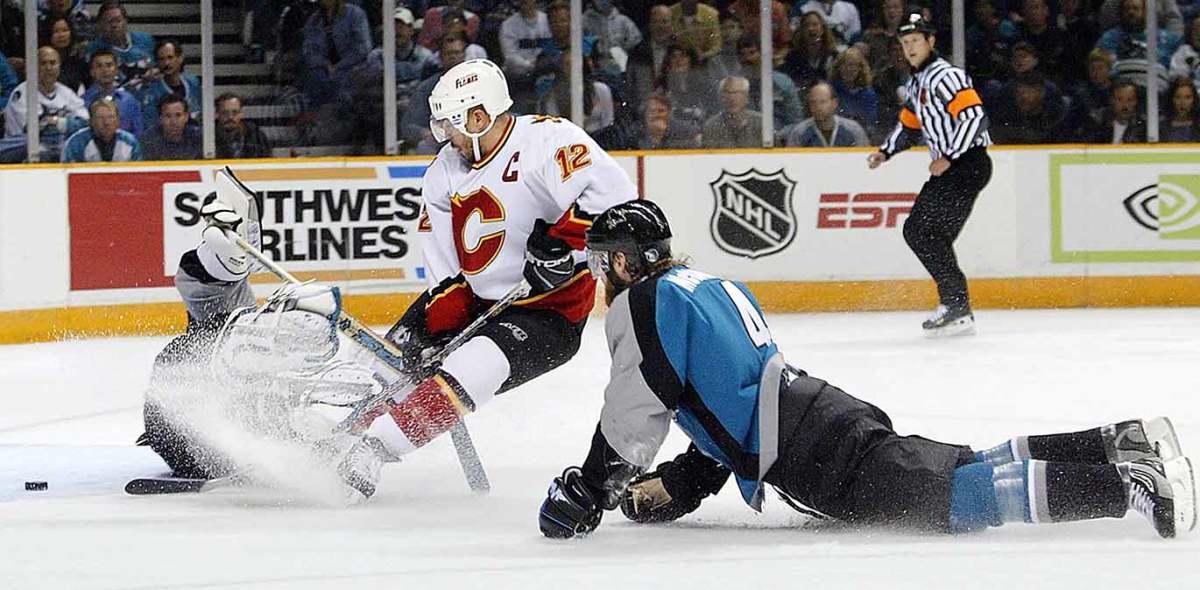
A 52-goal scorer and Art Ross Trophy-winner in 2001-02, Iginla led his upstart Flames, who hadn’t reached the playoffs for seven years, to within one win of the Stanley Cup the season before the lockout, winning his second Rocket Richard Trophy In the process. Now 37, the veteran forward remains one of the game’s most respected players. He scored 30 goals for Boston in 2013-14 and his career NHL numbers—560 goals, 607 assists in 1,310 games and counting—will surely land him in the Hall-of-Fame.
7. Chris Pronger, D
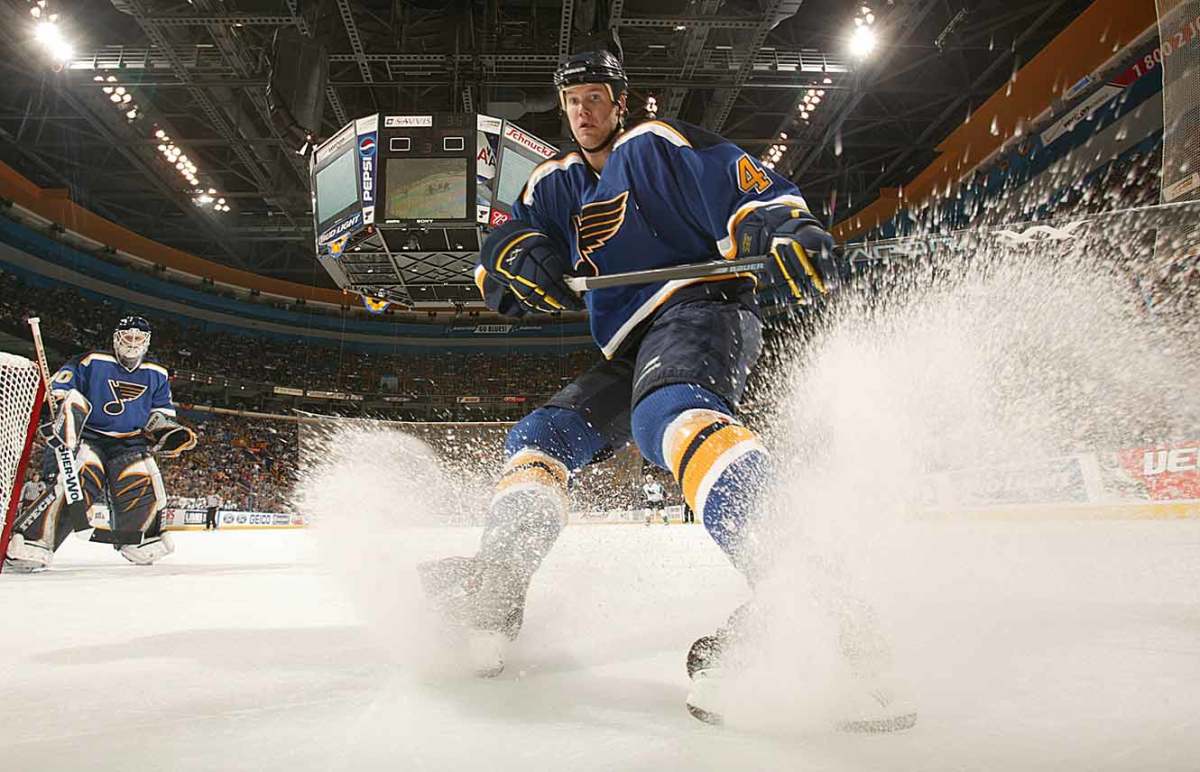
Recognized as one of the fiercest players of his day, Pronger amassed more than 1,900 penalty minutes including regular and postseason games. He won the Norris and Hart Trophies with St. Louis in 2000, a rare accomplishment for a defenseman, especially one known best for rugged play in his own end of the ice. After the lockout, he appeared in Stanley Cup finals with the Oilers, Ducks and Flyers, winning the prize with Anaheim in 2007. He left the game prematurely in 2012 after suffering numerous concussions.
6. Jaromir Jagr, RW
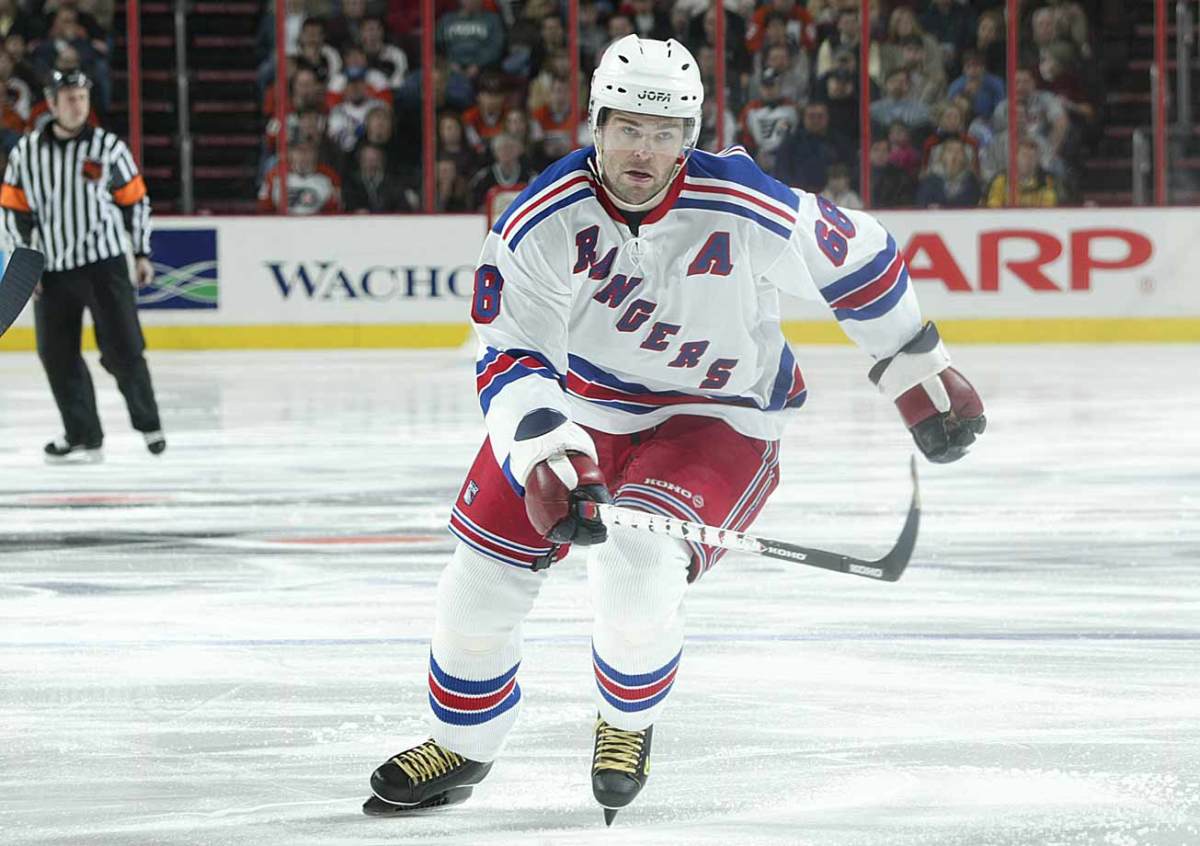
The now ageless wonder (he was 32 when the lockout hit) seemed to be heading for the downside of his storied career. He’d already produced eight seasons of 90-plus points, won five scoring titles, two Stanley Cups (with Pittsburgh), and the Hart Trophy (1999), but he returned from the NHL's year-long hiatus with a bang: 54 goals and 123 points for the Rangers, earning First Team All-Star honors and the Pearson MVP award. His follow-up in 2006-07 wasn’t too shabby, either: 30 goals and 96 points
5. Scott Niedermayer, D
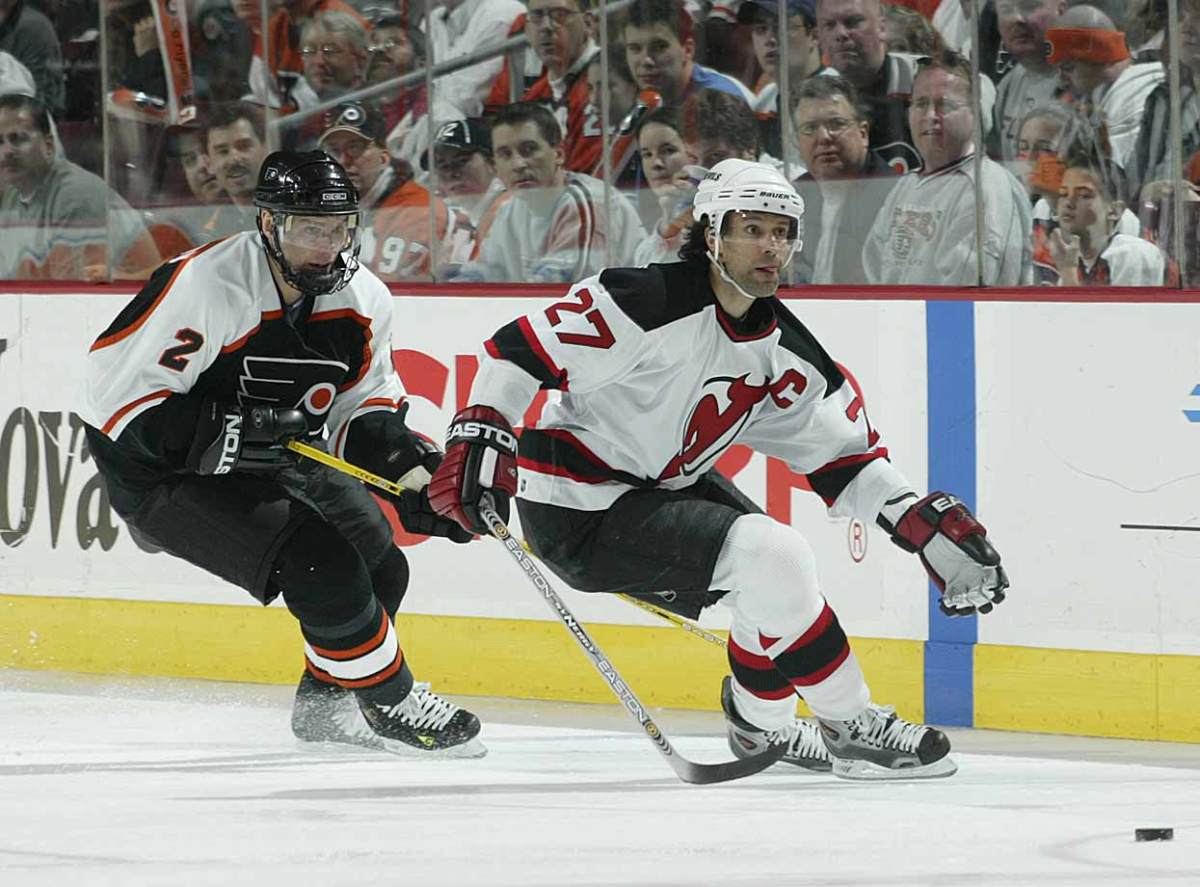
The smooth skating defenseman had already won three Stanley Cups with New Jersey before the lockout and he went on to win one more, with Anaheim, taking home Conn Smythe honors as well in 2007. Niedermayer was captain of that team. He also won two Olympic golds and served as captain of Team Canada at the 2010 Games in Vancouver where his team took the gold in his home province. The Devils retired his No. 27 in 2011.
4. Peter Forsberg, C
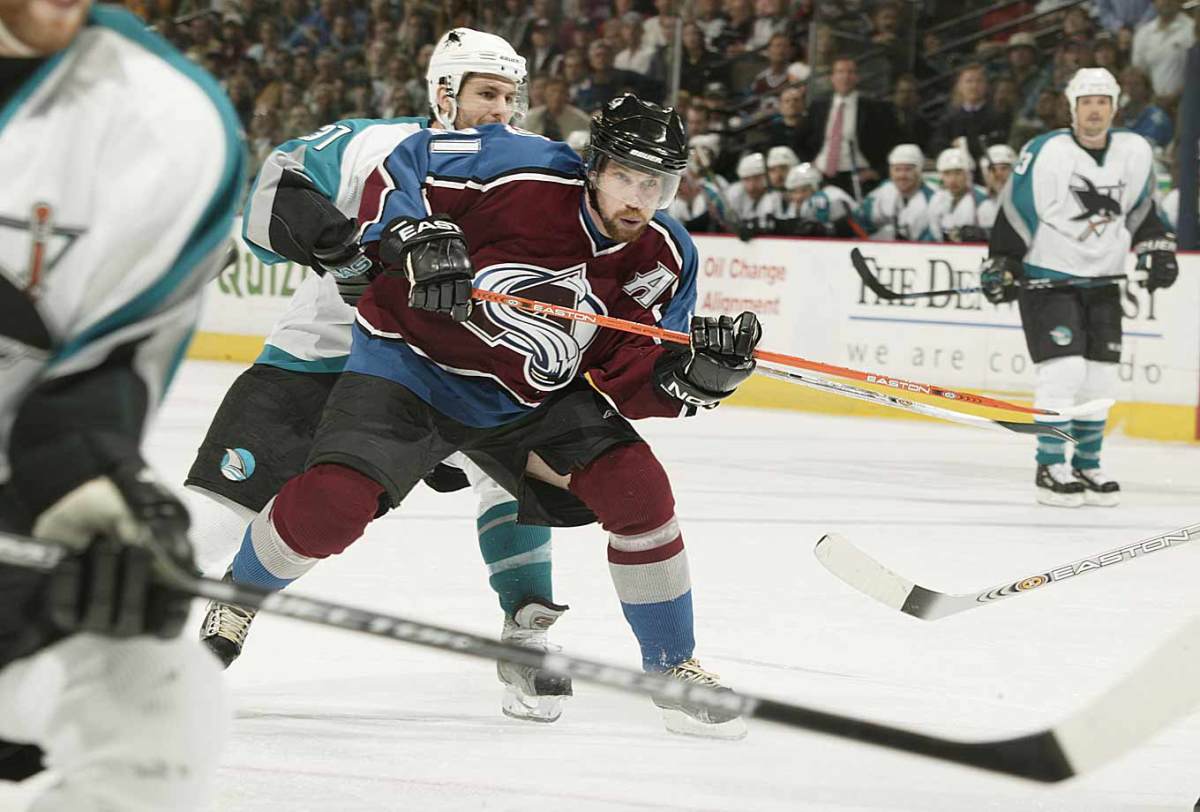
The stylish Swedish forward was well on his way to the Hall of Fame by the time of the lockout as a two-time Stanley Cup winner and Olympic gold medalist. Forsberg produced 116 points in 1995-96 when Colorado won its first Cup, but his aggressive style of play caused him numerous injuries throughout his shortened career. He missed the 2001-02 regular season because of a ruptured spleen, returning in time for for the playoffs and recording 27 points in 20 games. The following season, he led the NHL in scoring and won the Hart Trophy.
3. Joe Sakic, C
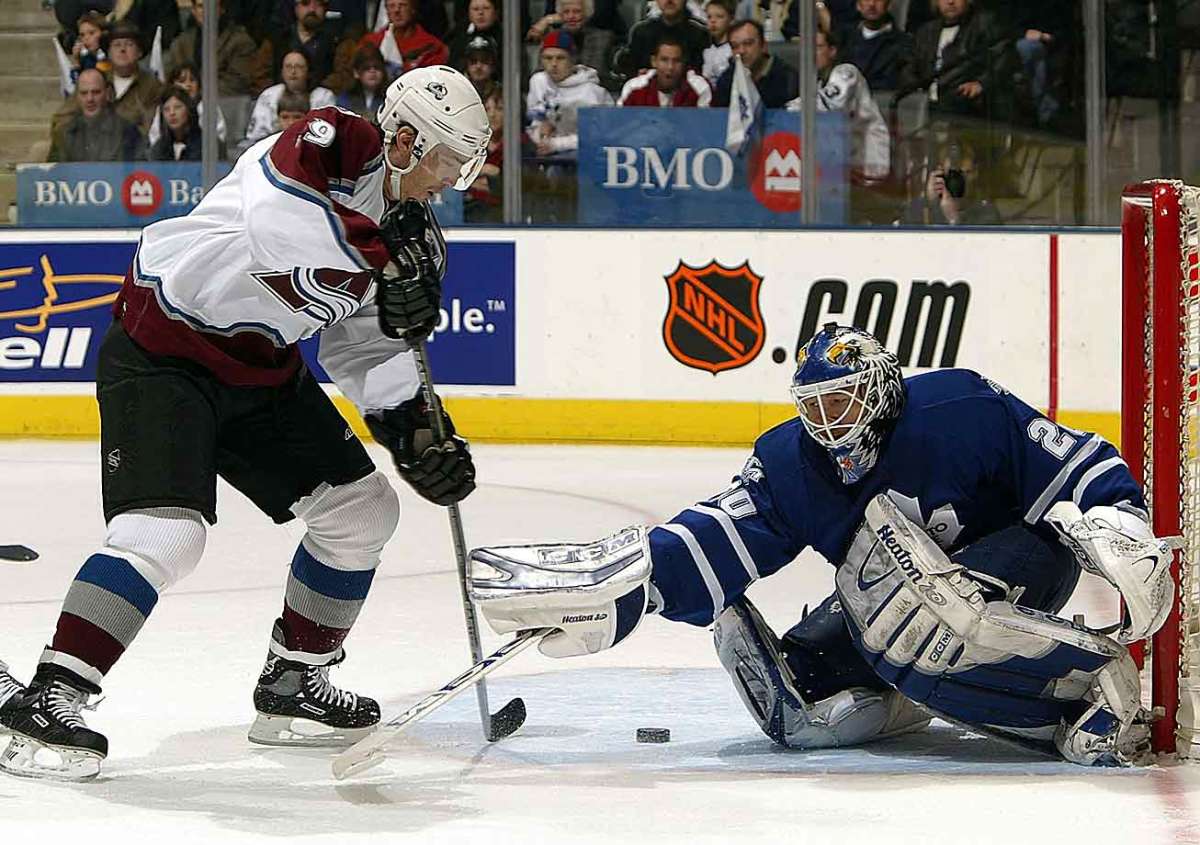
By the time of the 2004 lockout, the Avalanche center with the devastating wrist shot had won two Stanley Cups and produced five of his six 100-point seasons. In 2001, he became one of four players in league history, along with Bobby Clarke, Wayne Gretzky and Mark Messier, to win the Hart Trophy and captain a championship team. The Hall-of-Famer finished his career in 2009 with better than a point-per-game numbers in both the regular season (1,641 in 1,378 games) and playoffs (188 in 172 games).
2. Nicklas Lidstrom, D
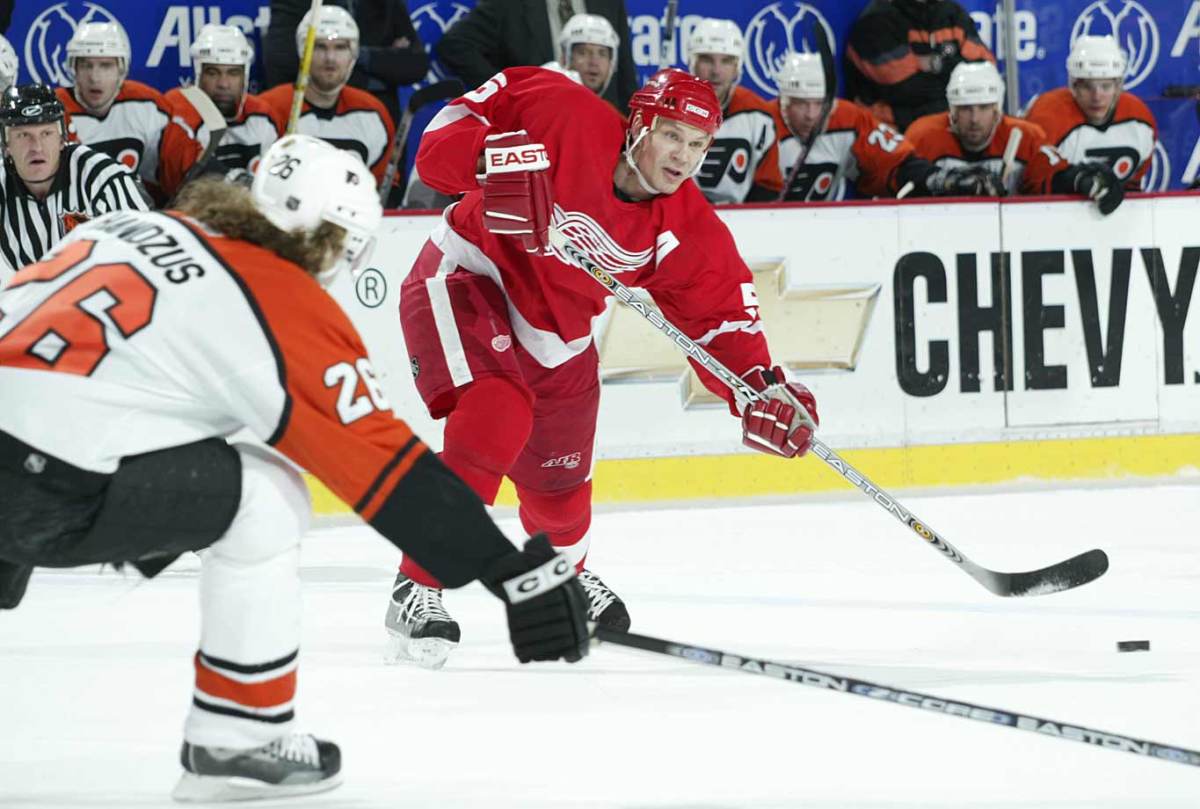
The classy defenseman, referred to as “the perfect player,” was 34 at the time of the 2004 lockout and still had plenty of great hockey left in him. He’d won three of his four Stanley Cups, but only three of his seven Norris Trophies. By the time of his retirement in 2012, the 10-time First Team All-Star had become the career leader in regular and postseason games-played (1,827) for a single team (Detroit). His playoff rating of +61 is the highest of any player in NHL history.
1. Martin Brodeur, G
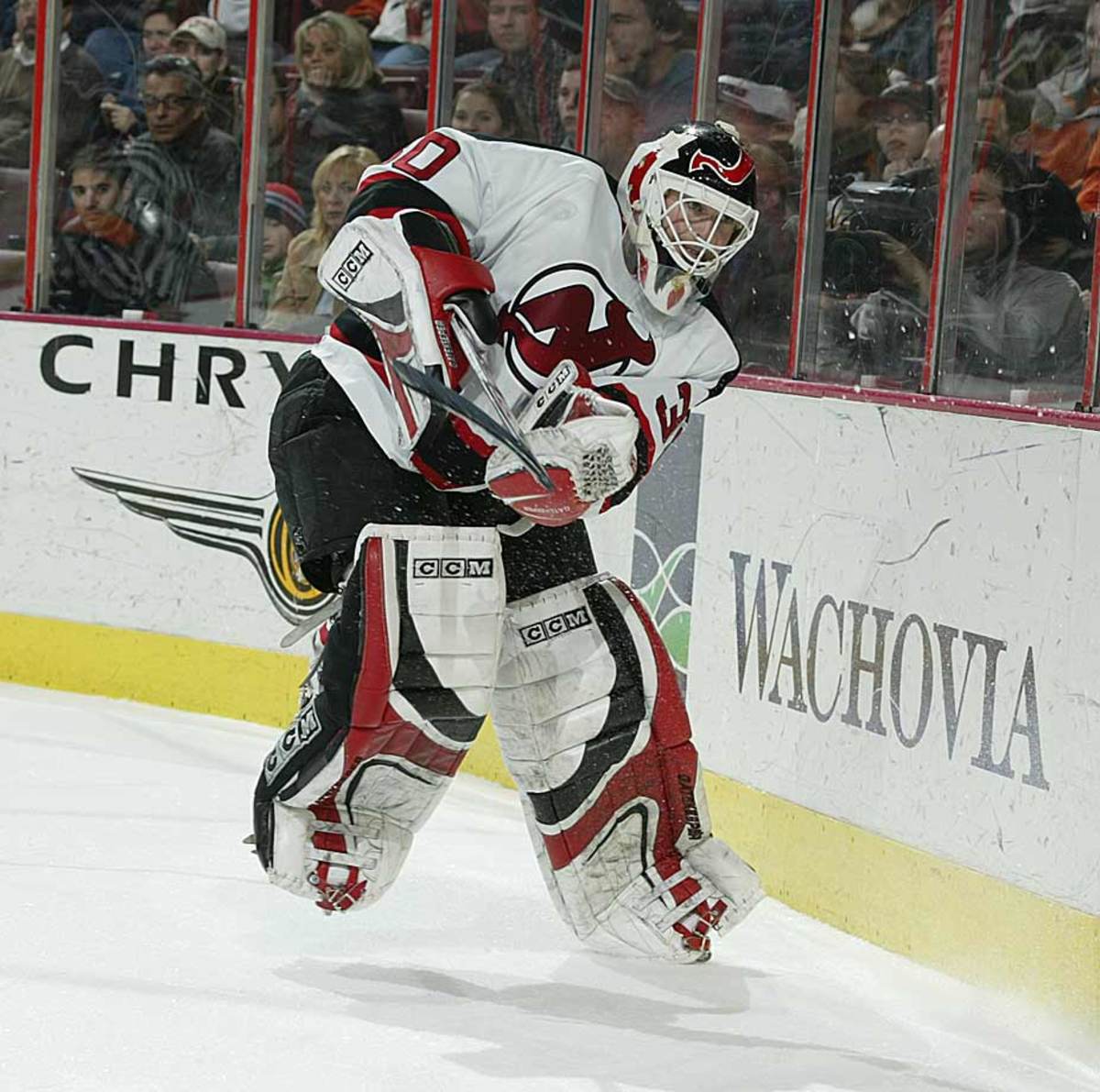
The Devils netminder was at the peak of his game by time of the lockout. He’d led the league in wins six times, backstopped New Jersey to three Stanley Cups, and won the Vezina Trophy twice. Imagine what Brodeur’s career records—1,259 games, 688 wins, 124 shutouts—would be now had there not been lengthy work stoppages in 1995, 2004 and 2012.
Notables who did not return after the lockout: Scott Stevens, Ron Francis, Al MacInnis, Mark Messier, Adam Oates, Igor Larionov, Steve Thomas, Felix Potvin, Bob Goodenow
Notables bought out after the lockout: John LeClair, Tony Amonte, Derian Hatcher, Ray Whitney, Darren McCarty, Pierre Turgeon, Bobby Holik, Brian Savage, Patrice Brisebois
“It’s asinine and it’s both sides.”—Flames defenseman Andrew Ference on the continuing impasse.
GALLERY: 20 best players to enter the NHL since 2005
Top 20 players to enter the NHL since the 2004 lockout
20. Brent Seabrook, D
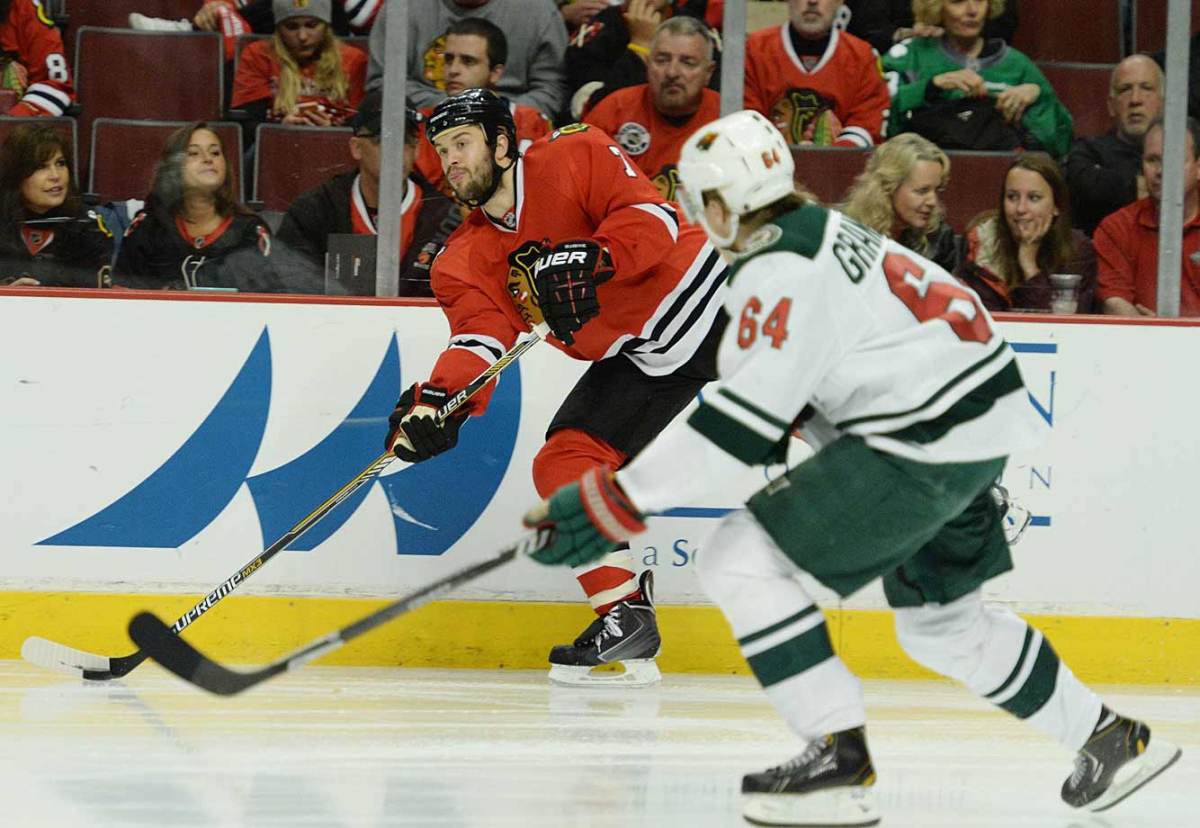
Seabrook and his Blackhawks partner Duncan Keith are one of the game’s best defensive tandems. A two-time Stanley-Cup winner, and Olympic gold medalist in 2010, Seabrook has also developed a penchant for scoring big goals. In 2013, he tallied the overtime winner against Detroit in the Western Conference semi-finals and three weeks later scored another OT winner to beat Boston in Game 4 of the Stanley Cup Final.
19. Thomas Vanek, LW
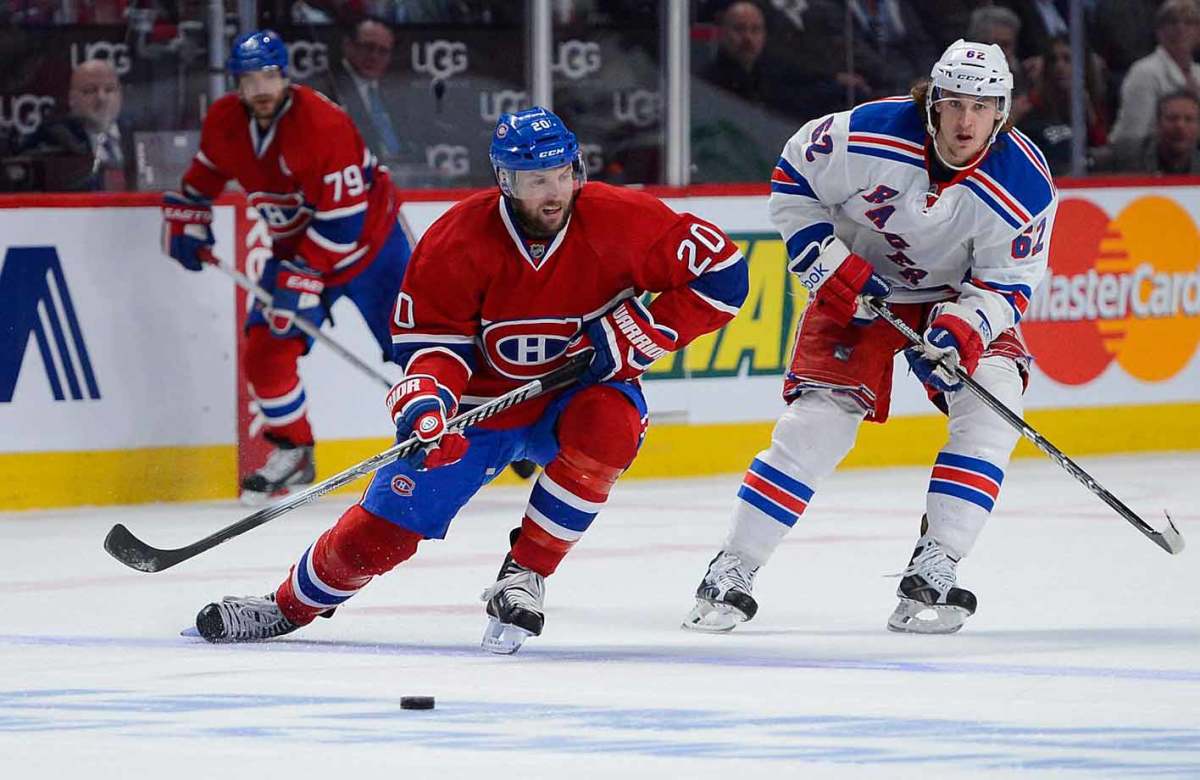
After winning an NCAA championship at the University of Minnesota, Vanek joined the Sabres for 2005-06 and went on to produce seven straight seasons of 25 goals or more, including a pair of 40-tally campaigns. In 2006-07 campaign, the talented sniper led the NHL with a +47 rating.
18. P.K. Subban, D
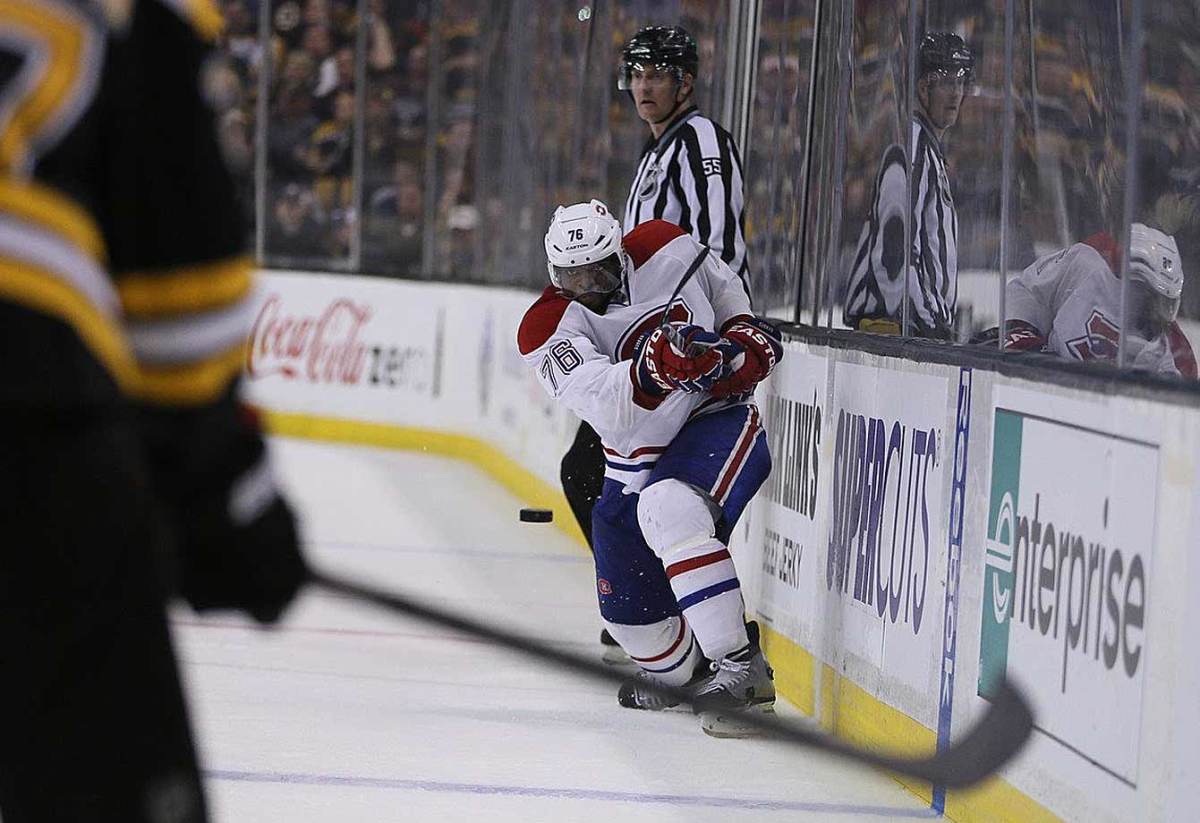
The cocky Habs defenseman has become one of the most dynamic and entertaining players in the NHL. He can be an offensive force, a defensive pest and a general nuisance for Montreal’s foes. Subban won the Norris Trophy in 2013, and produced 14 points in 17 playoff games the following season while leading the Canadiens to an upset victory against archrival Boston and a berth in the Eastern Conference Finals. In the summer of 2014, he was rewarded with an eight-year, $72 million contract.
17. John Tavares, C
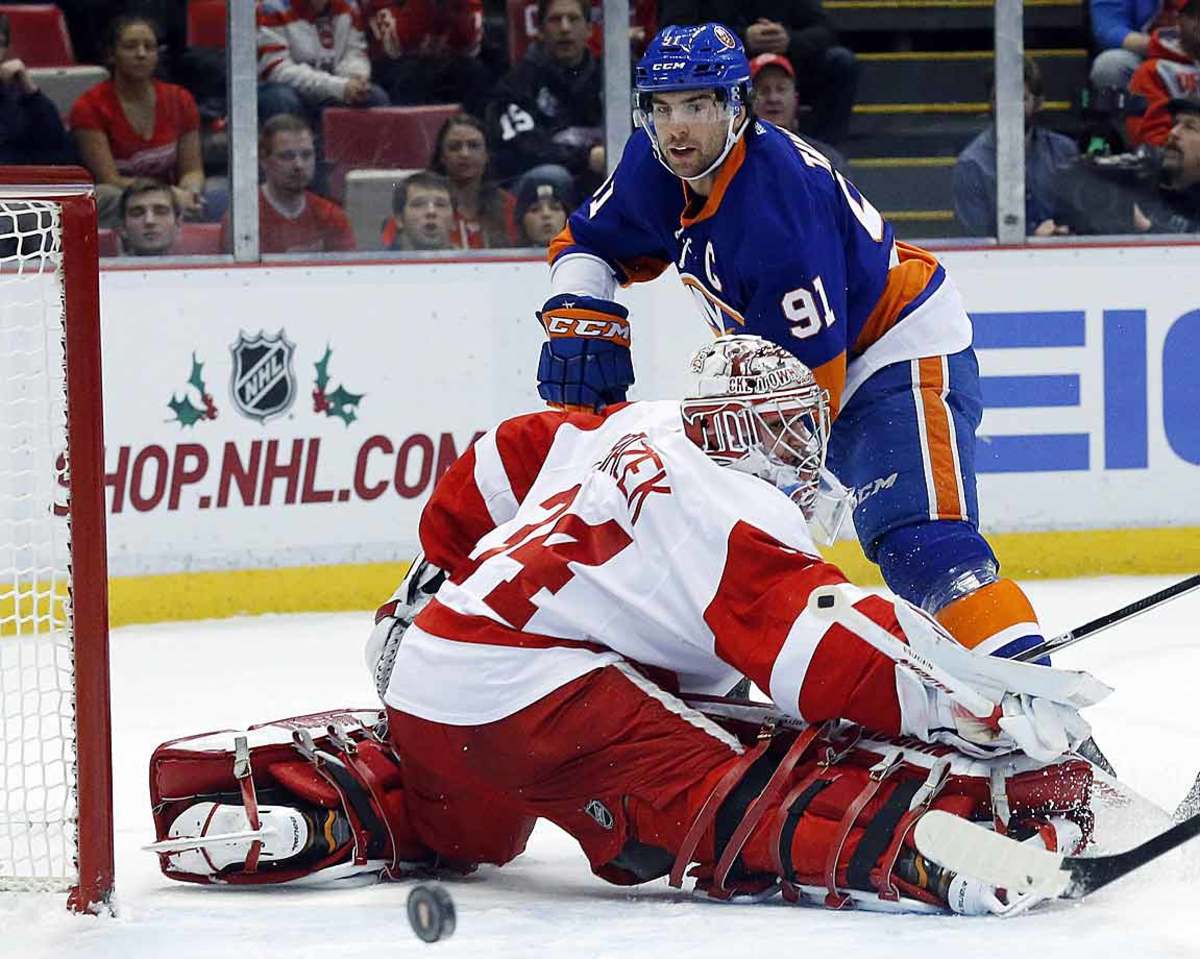
The first pick in the 2009 draft was regarded as one of the finest prospects since Sidney Crosby. Tavares has since become one of the game’s most exciting players. Named captain of the Islanders at age 22, he was a finalist for the Hart Trophy in 2013. A relentless worker, his impressive game is still evolving and improving.
16. Corey Perry, RW
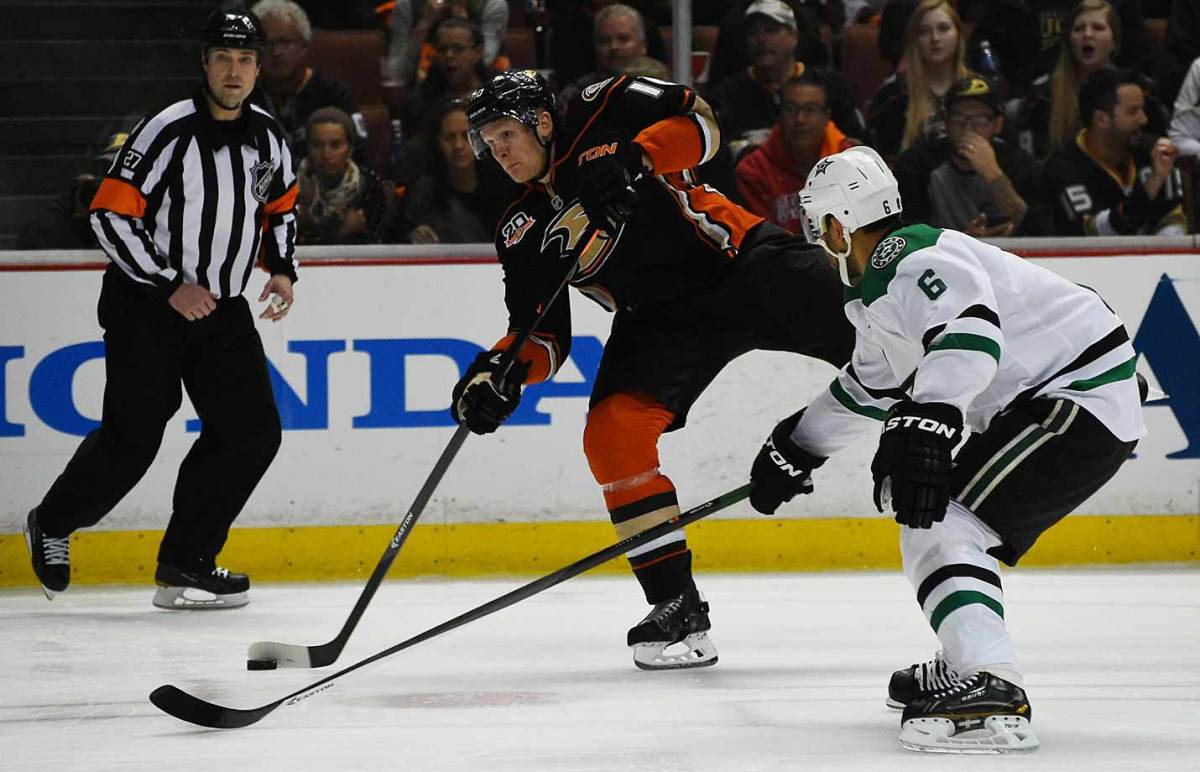
The 2011 Hart and Richard Trophy winner has become one of the game’s most consistent offensive players. A Stanley Cup-winner in only his second season (2006-07), he’s earned two First Team All-Star selections. Perry also won two gold medals playing for Canada at the 2010 and 2014 Olympics.
15. Ryan Suter, D
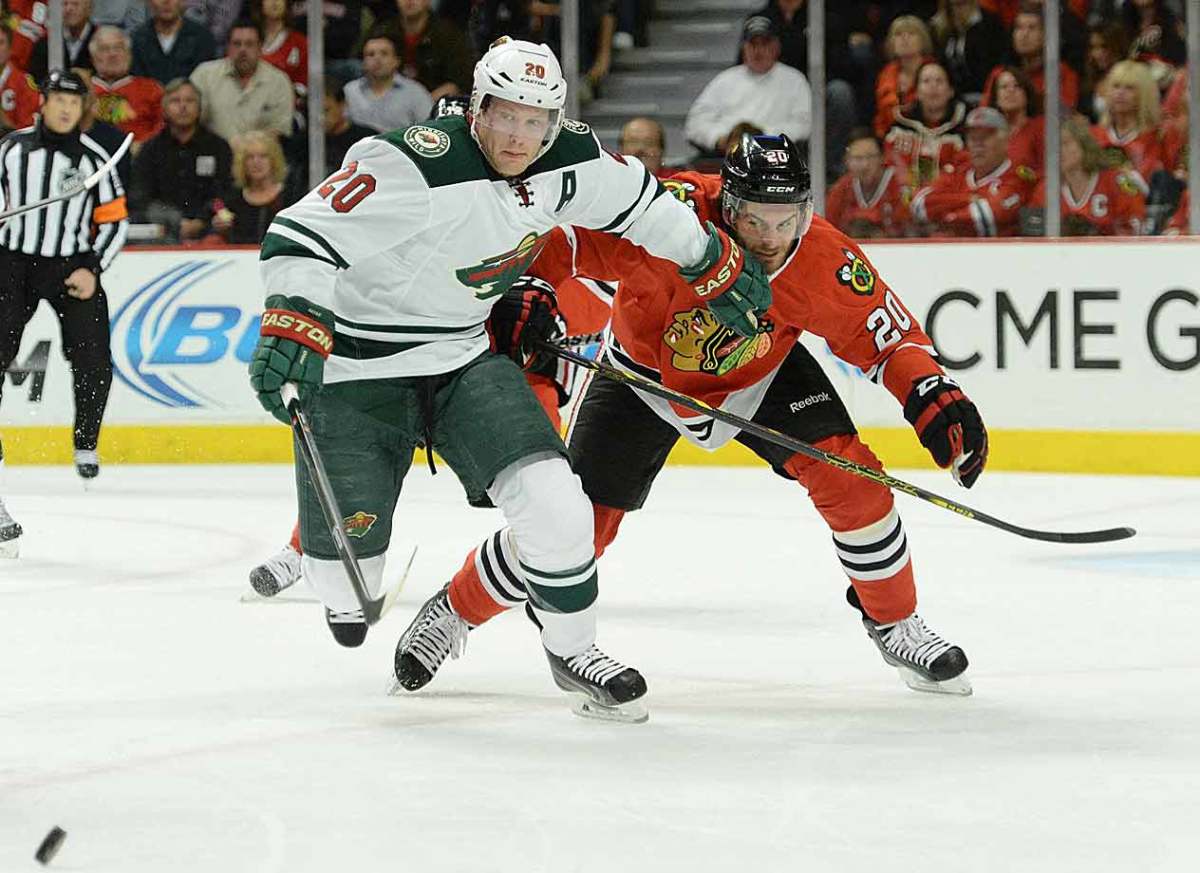
Suter entered the NHL with Nashville the season after the lockout and instantly emerged as an outstanding, mobile two-way defenseman. In 2012, he signed a celebrated 13-year contract with his hometown Minnesota Wild and won First Team All-Star honors. He’s also played in two Olympics for Team USA. (His uncle Gary, was a two-time Olympian, and his late father, Bob, was a member of the famed Miracle on Ice team that won gold at the Lake Placid Games in 1980.)
14. Zach Parise, LW
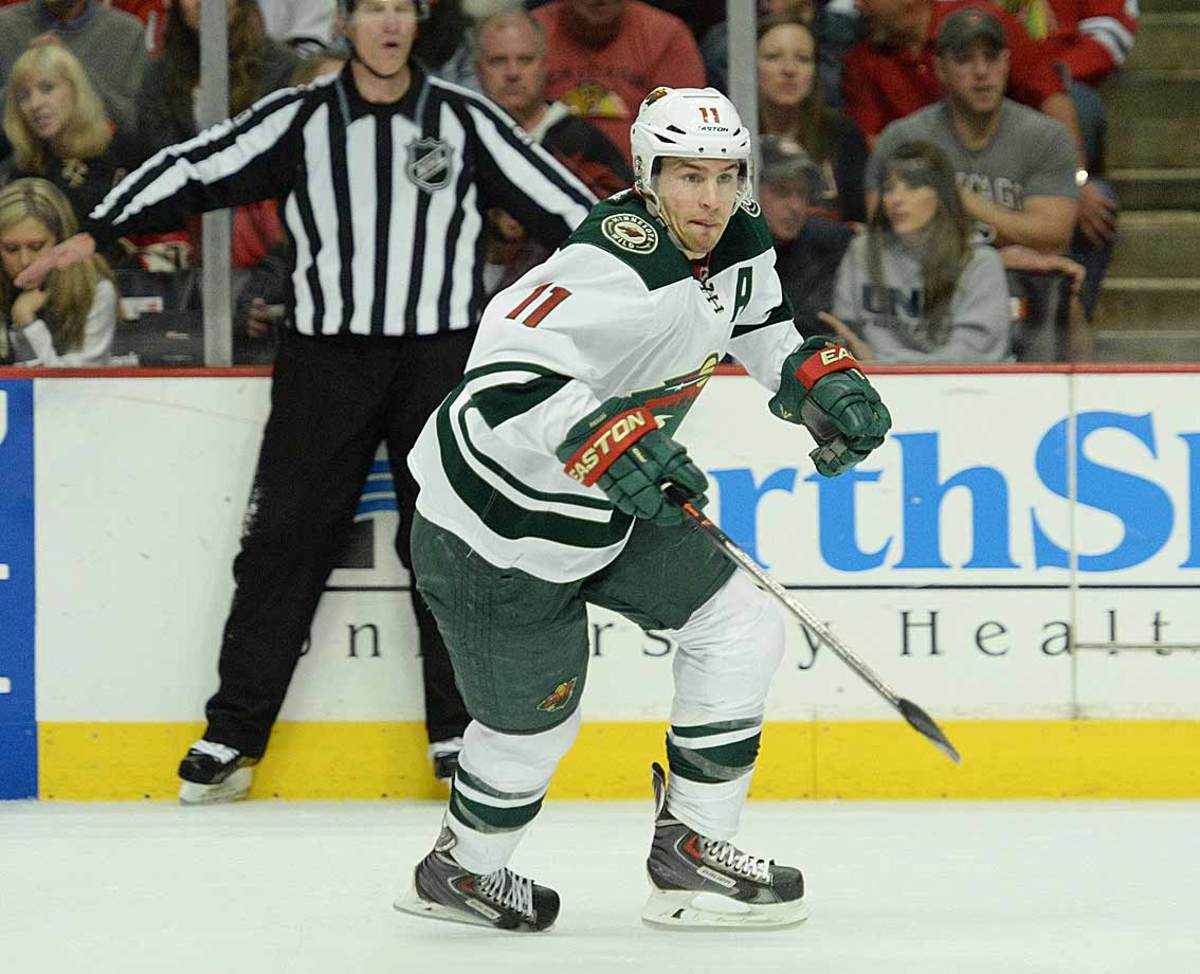
Parise joined the Devils the season after the lockout and later became New Jersey’s captain, the team reaching the Stanley Cup Final in 2012. He’s topped the 30-goal mark five times, and as a member of Team USA at the 2010 Olympics, he famously scored the tying goal with 24 seconds to play in the third period, sending the gold medal game into overtime before Canada ultimately prevailed. In 2012, he signed a 13-year contract with his hometown Minnesota Wild.
13. Ryan Getzlaf, C
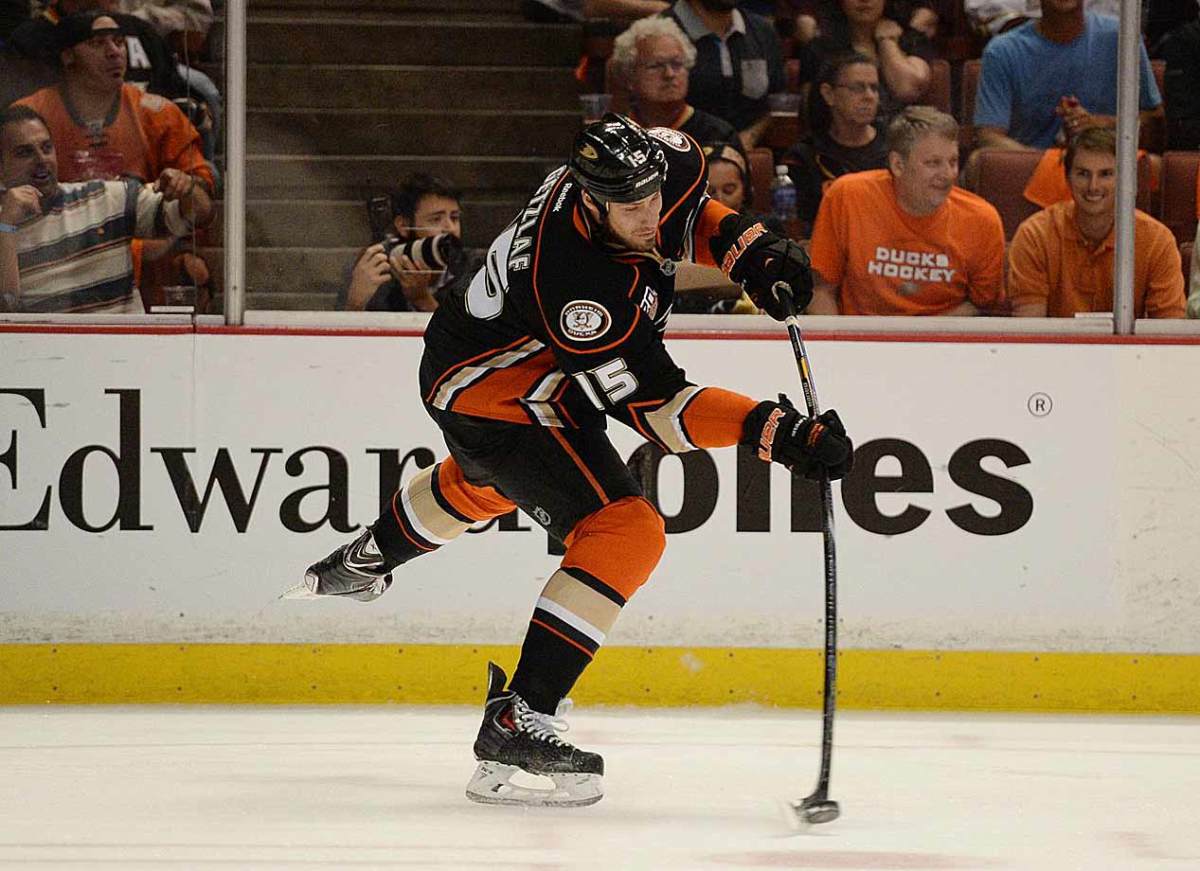
The Ducks’ captain has established himself as one of the game’s premier power forwards. He joined Anaheim the season after the lockout and was a key player in the Ducks’ run to the Stanley Cup in 2007. He’s produced just under a point per game in both the regular season (608 points in 633 games) and playoffs (74 points in 81 games), won gold medals for Canada at the 2010 and ‘14 Olympics, and was runner-up to Sidney Crosby in the 2014 Hart Trophy balloting.
12. Duncan Keith, D

Widely considered to be one of the league’s best defensemen, Keith joined the Blackhawks the season after the lockout and went on to win the Norris Trophy in 2010 and '14. He also bagged Olympic gold medals while playing for Canada those years. In 2010 and 2013, he helped propel the Blackhawks to the Stanley Cup.
11. Shea Weber, D
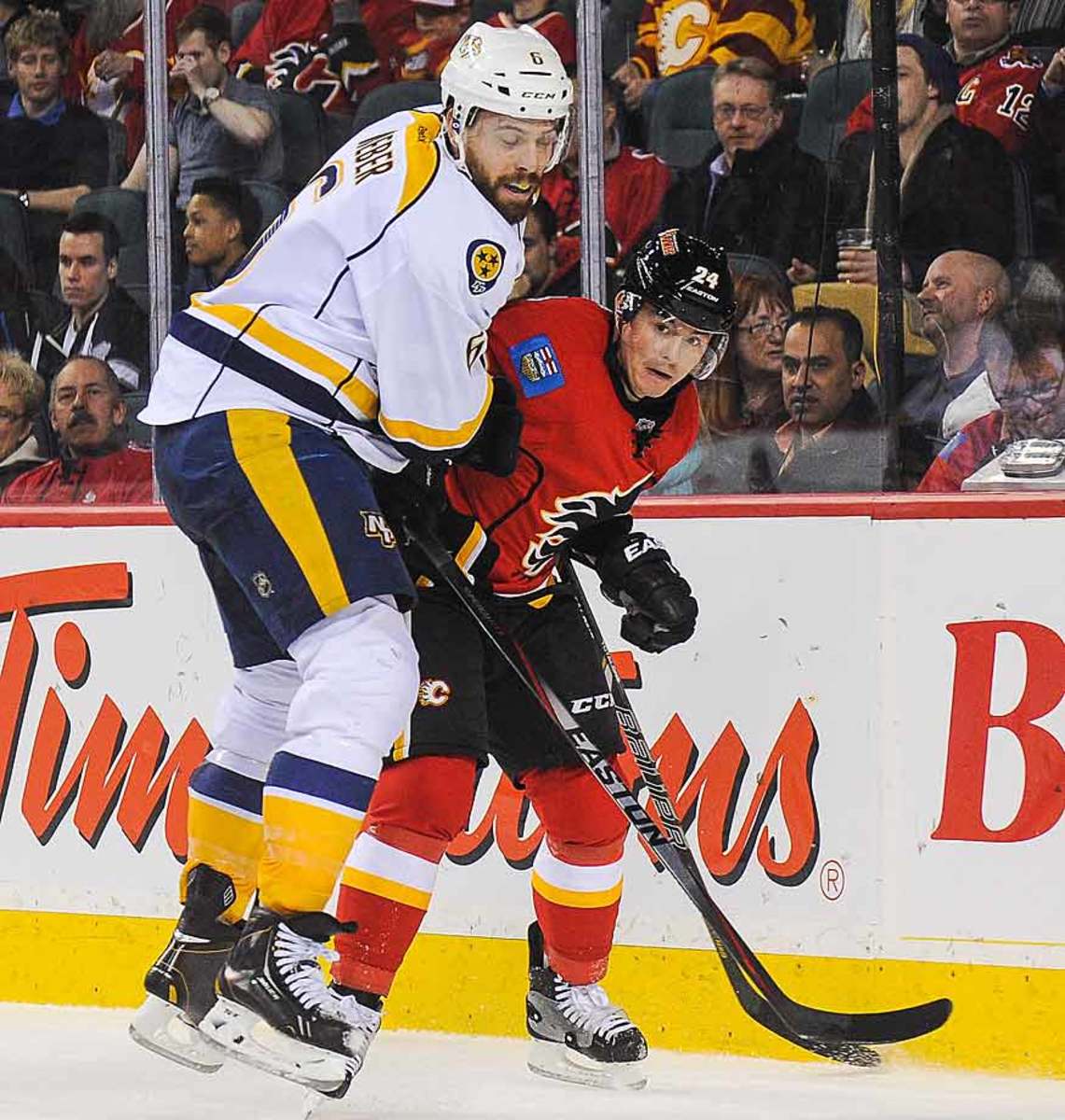
At 6’-4” and 233 pounds, Weber has established himself as one of the game’s most feared hitters on the backline since joining the Predators right after the lockout. He also possesses one of the game’s hardest shots, and has also produced 12 points in 13 Olympic contests while helping Canada to gold medals in 2010 and 2014.
10. Drew Doughty, D
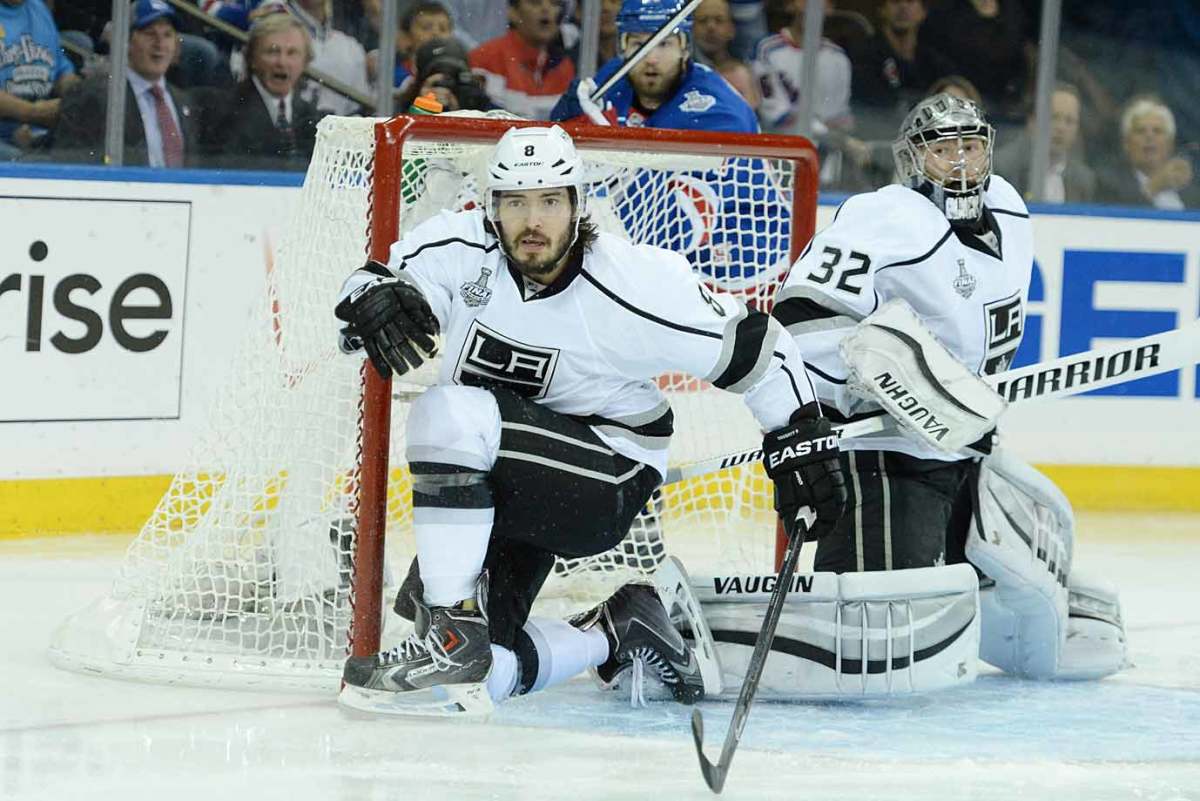
The rookie once known as Dough Boy has become a pillar of the two-time Stanley Cup-winning Kings. An exceptionally creative defenseman, he possesses one of the game’s best shots and array of bodychecks. And few players seem to have more fun playing the game. He also has two Olympic gold medals on his mantle.
9. Anze Kopitar, C
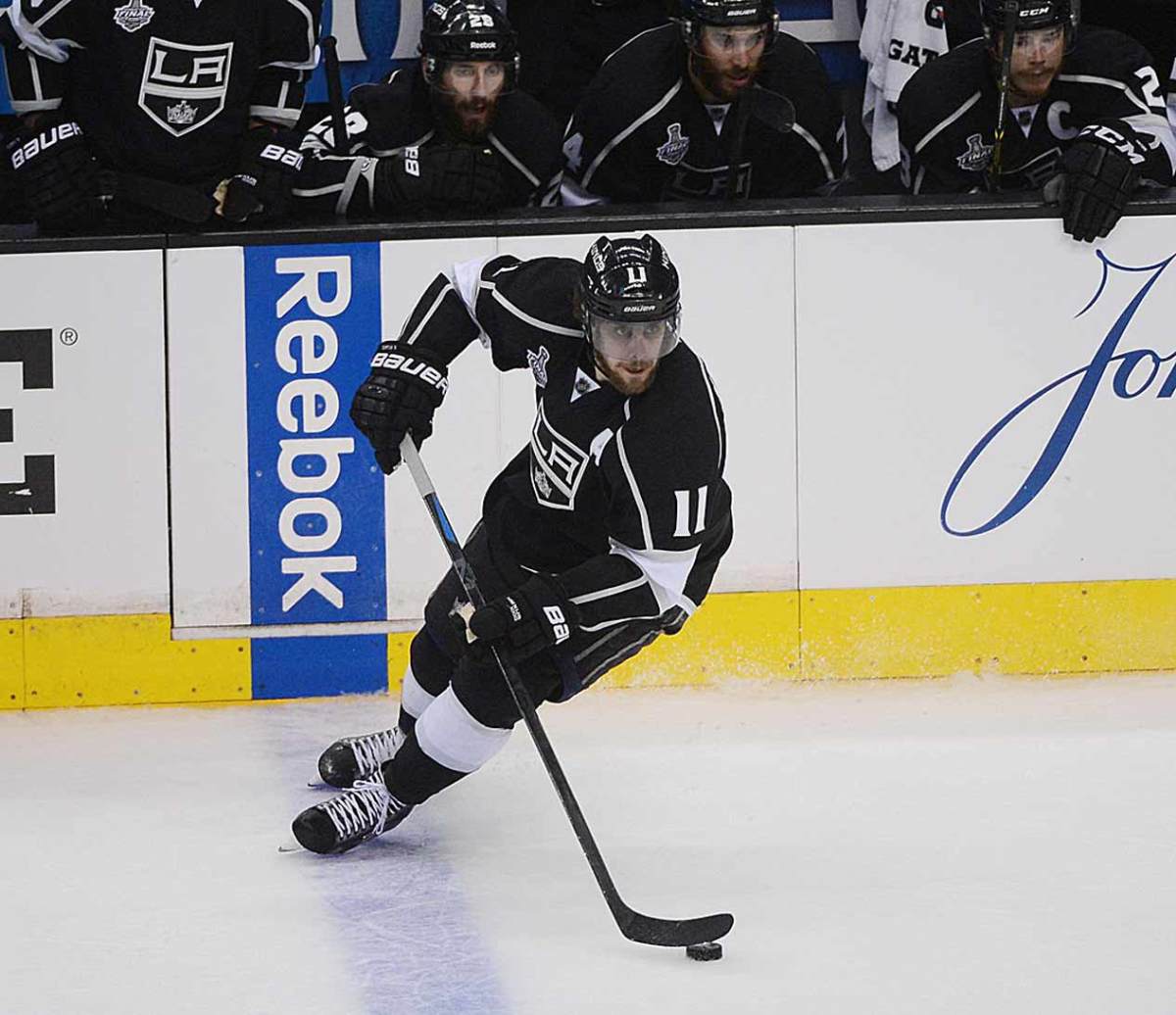
One of the NHL’s most complete forwards, Kopitar is finally getting his just recognition. He led the league in playoff scoring during each of the Kings’ championship seasons, totaling 46 points in 46 games in 2012 and ’14, and was a finalist for the '14 Selke Trophy as the game’s top two-way forward.
8. Henrik Lundqvist, G
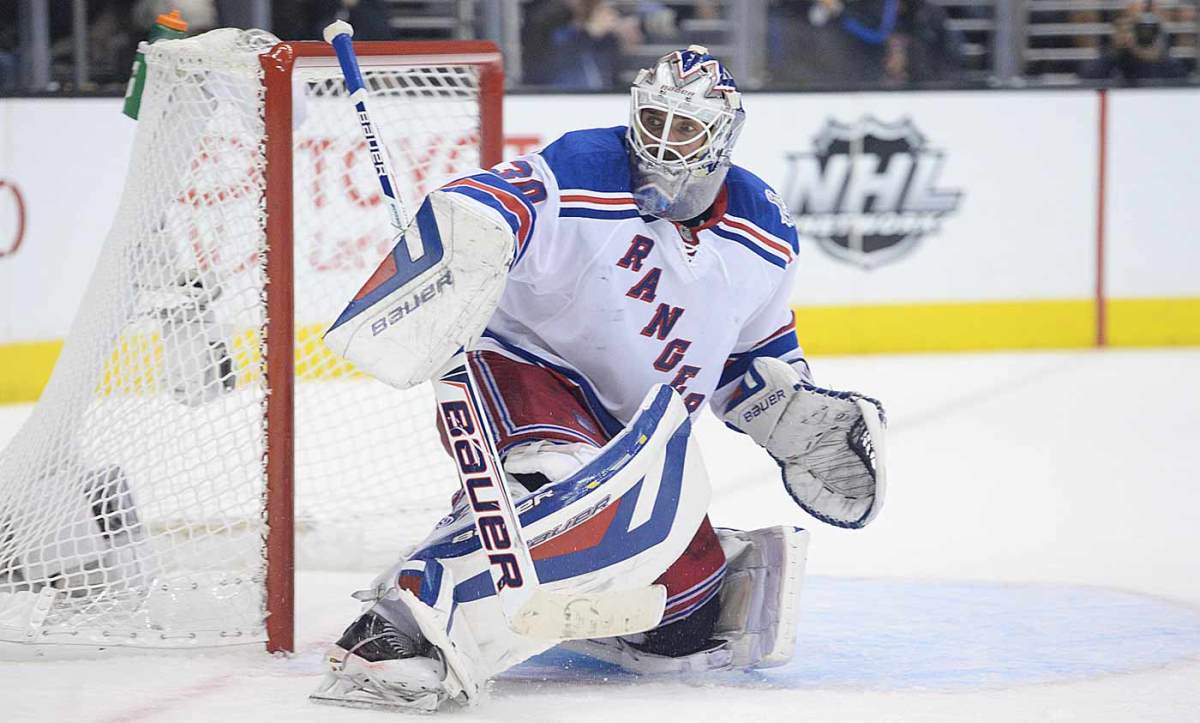
The only goalie in NHL history to win at least 30 games in his first seven seasons, King Henrik has become the toast of New York while setting Rangers club records for wins during the regular season (309) and playoffs (43). He led the team to the Stanley Cup Final in 2014 and backstopped Sweden to the silver medal at the Sochi Olympics, adding to the gold medal he won at the Turin Games in 2006.
7. Jonathan Quick, G
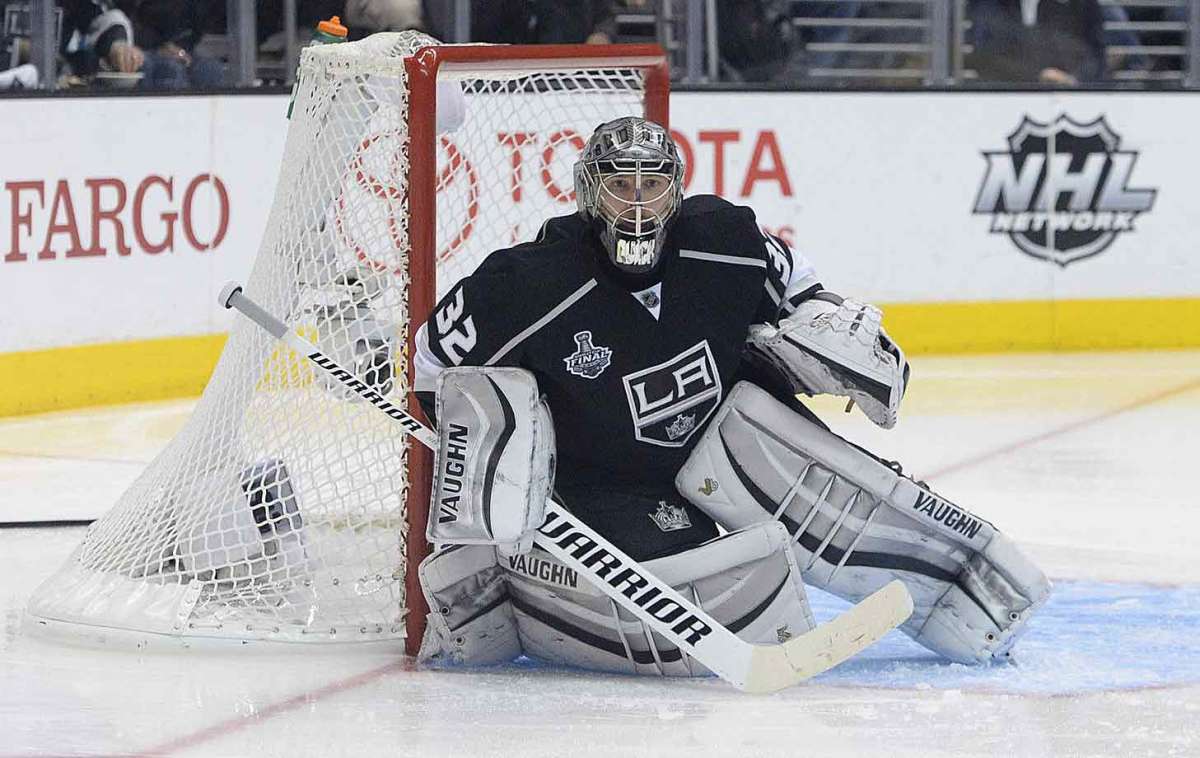
A two-time Stanley Cup champ and Conn Smythe Trophy winner in 2012, Quick has emerged as one of the stingiest goalies in the game. Despite weighing 220 pounds, he is so flexible and capable of covering the entire lower portion of the net that his teammates took to calling him Gumby. His combined marks in the 2012 and 2013 playoffs (.940; 1.63 over 38 games) are astounding.
6. Steven Stamkos, C
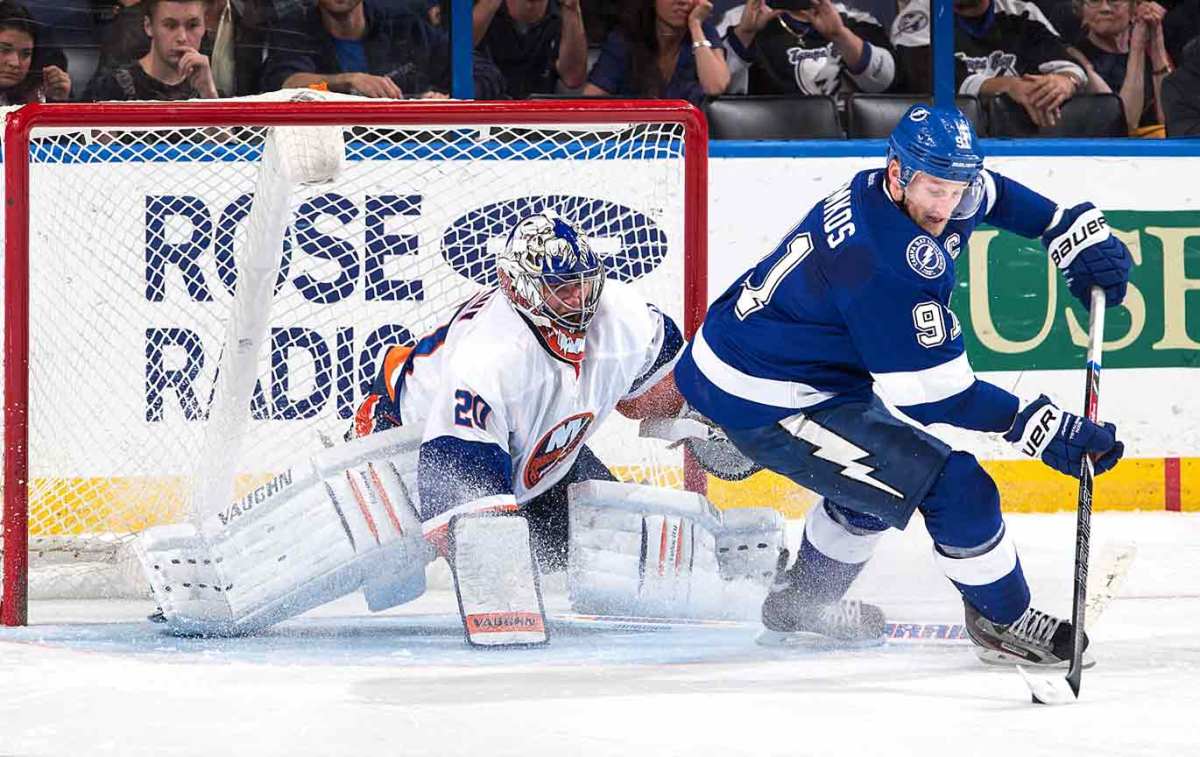
At 24, Stamkos, the first pick in the 2008 draft, has surpassed Alex Ovechkin as the NHL’s most dangerous goal scorer. He’s twice won the league’s Rocket Richard Trophy, scoring 60 times in 2011-12. Despite missing considerable time due to a broken leg suffered in Nov. 2013, he came back and still managed to produce 25 goals in less than half a season while leading the Lightning to the playoffs.
5. Alex Ovechkin, F
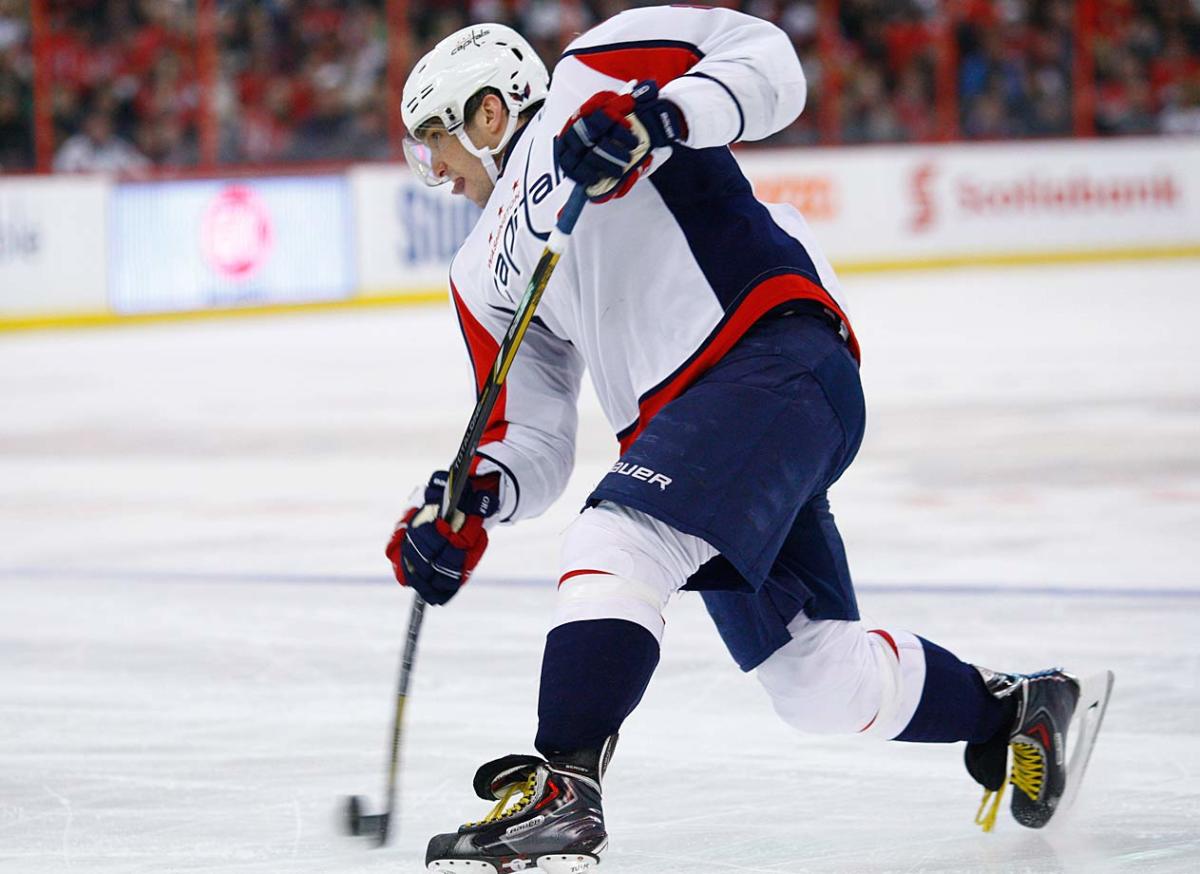
Ovi edged Sidney Crosby for the Calder Trophy during the first post-lockout season and has gone on to light the lamp 422 times in 678 games, leading the NHL in goals four times and producing four 100-point seasons. In 2008, he became the first player to win the Art Ross, Hart Trophy, Lindsay Award and Richard Trophy in the same season. He remains the game’s most entertaining sniper.
4. Patrick Kane, RW
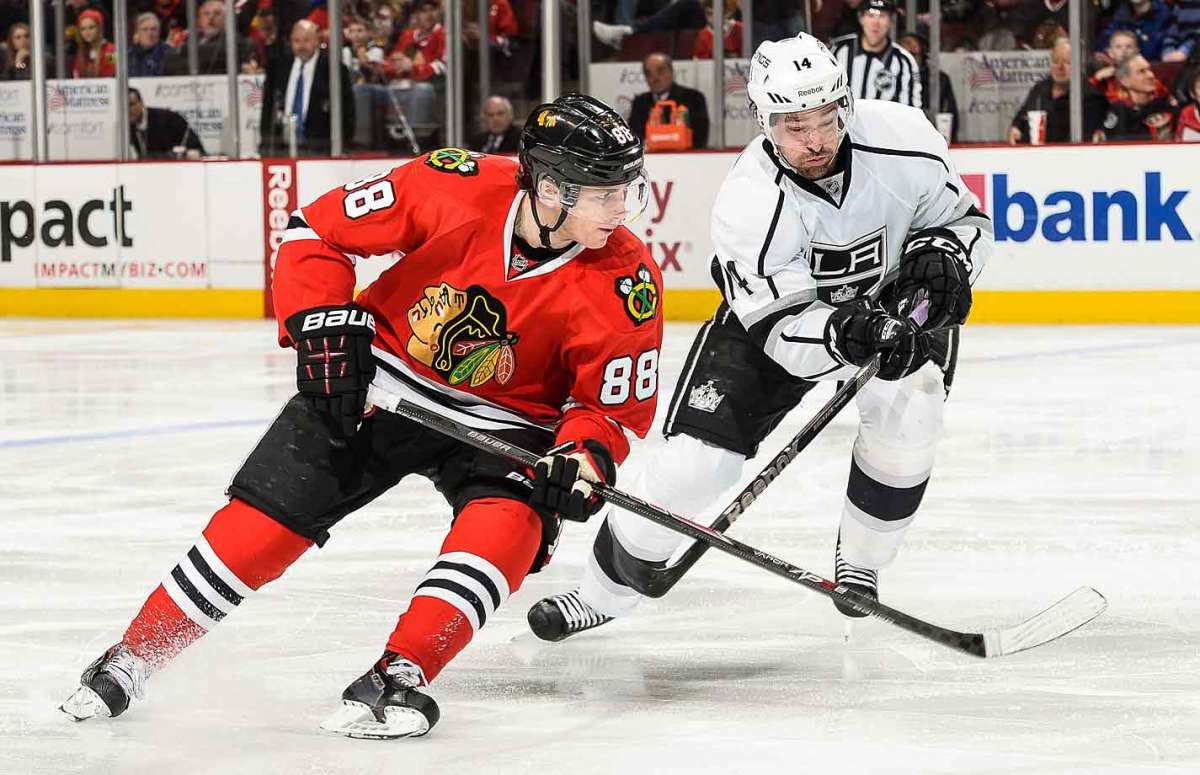
Kane, 25, is one of the game’s most dangerous offensive players, possessing magic hands that dangle pucks through seemingly impenetrable traffic jams. He’s played on two Stanley Cup champions and scored the winning goal in OT to clinch the championship against Philadelphia in 2010. Three years later, he won the Conn Smythe Trophy.
3. Jonathan Toews, C
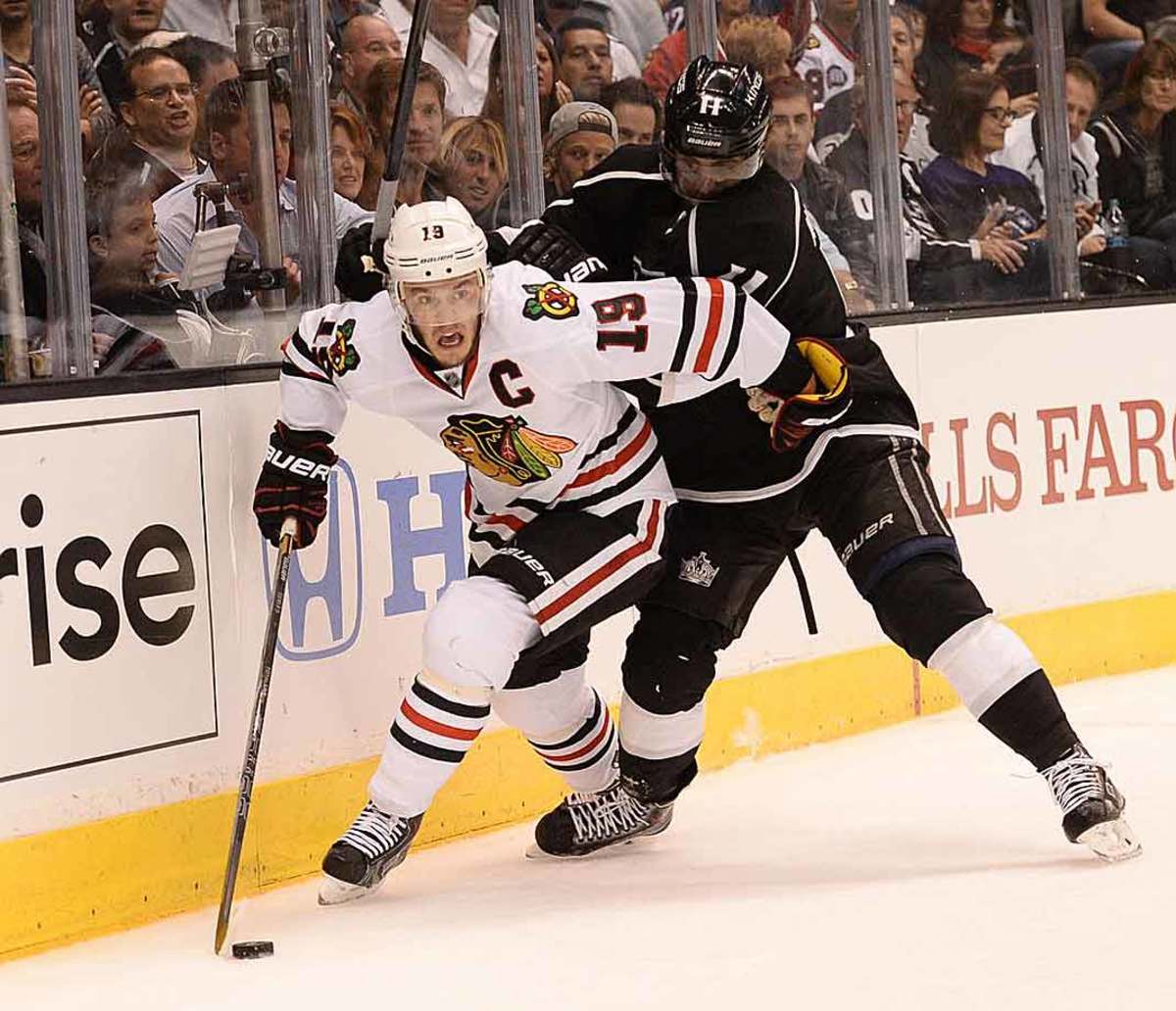
At 26, Toews is arguably the game’s premier leader and winner. He’s won two Stanley Cups and two Olympic gold medals and is recognized as one of the game’s most complete two-way players. With 29 points in 22 postseason games, he was voted the Conn Smythe Trophy winner after the Blackhawks’ title run in 2010.
2. Evgeni Malkin, C
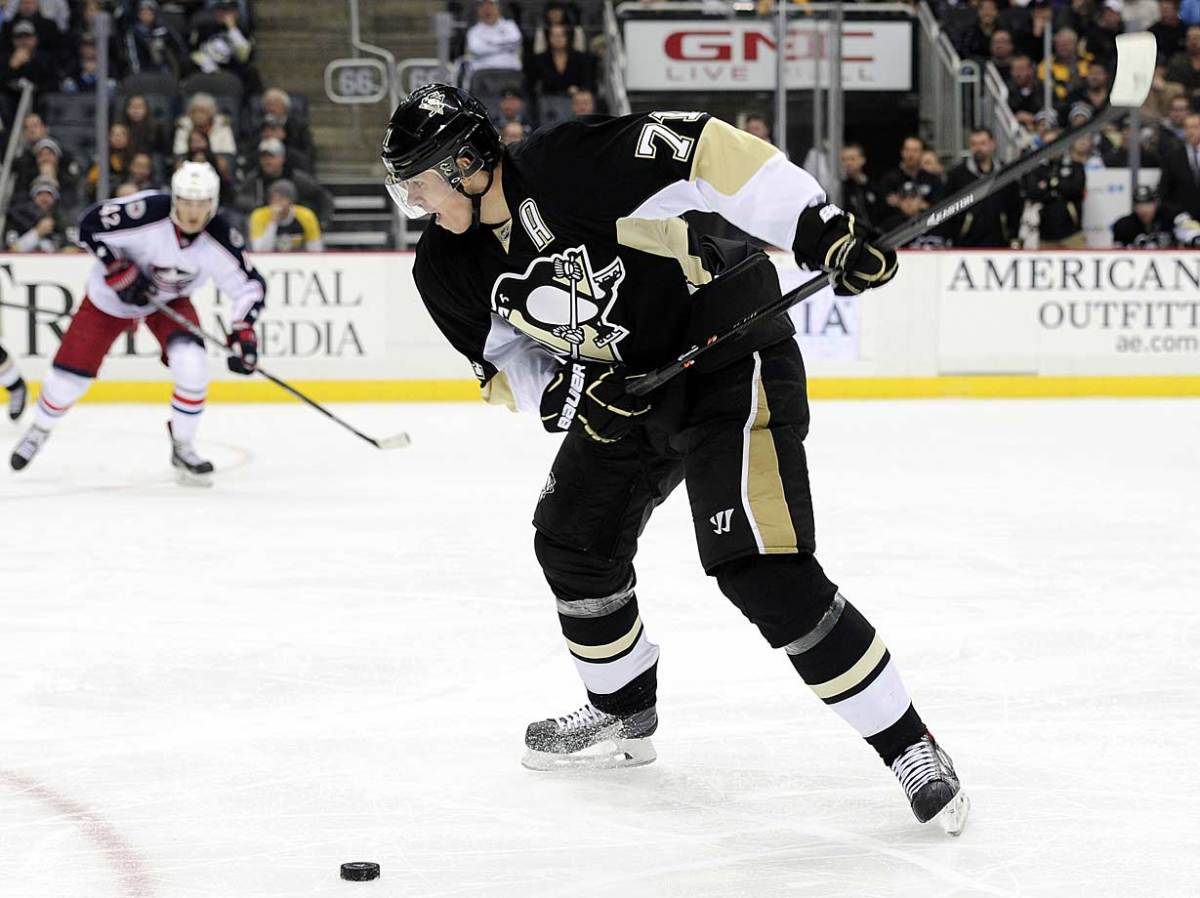
The man from Magnitogorsk has become Sidney Crosby’s lethal partner in the league’s most dangerous one-two combination. Malkin, who won the 2007 Calder Trophy, is now a two-time NHL scoring champ and the 2011-12 Hart Trophy winner. When the Penguins won their most recent Stanely Cup, in 2009, it was Malkin not Crosby who walked away with the Conn Smythe Trophy as playoff MVP.
1. Sidney Crosby, C
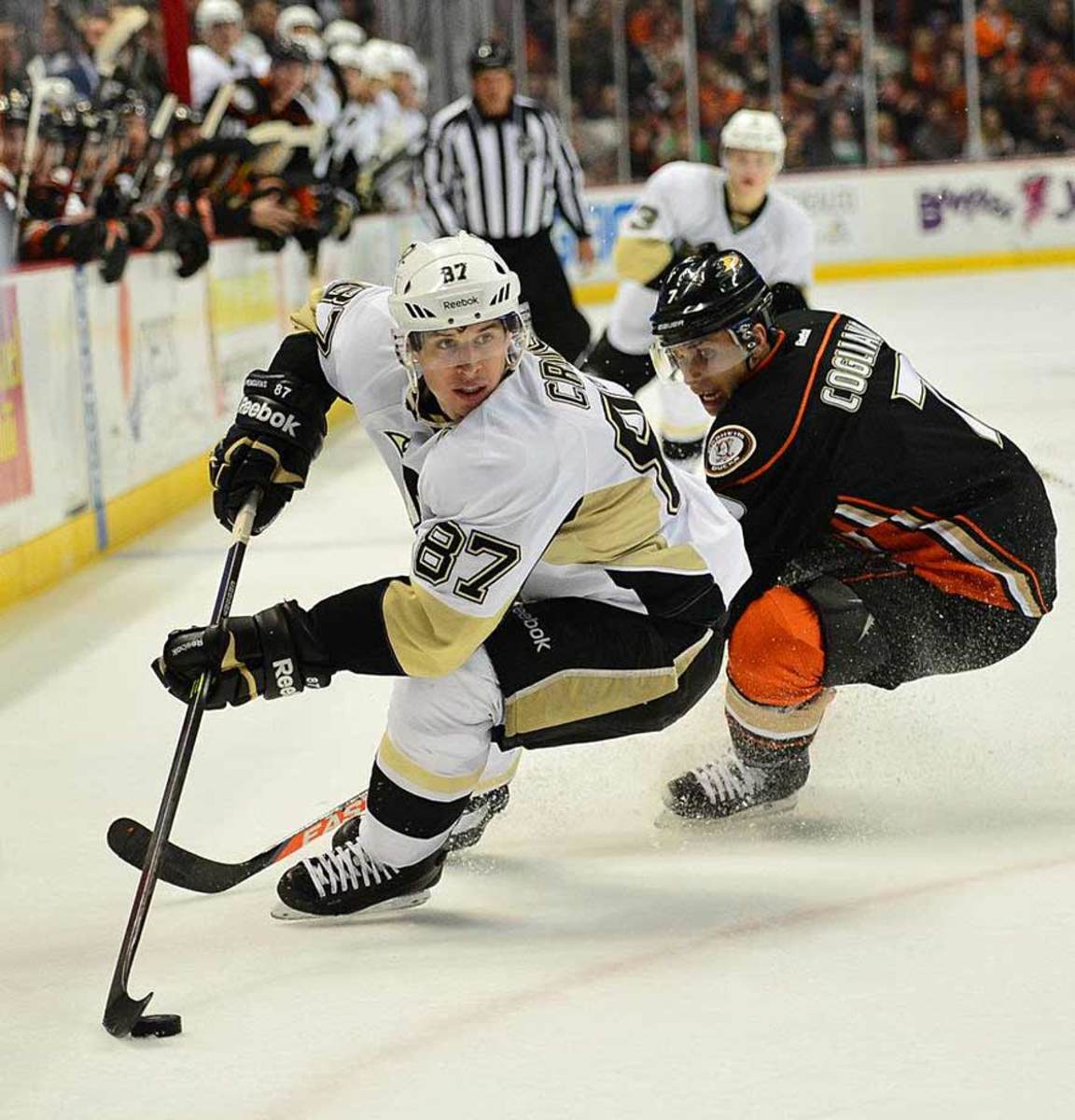
How can you top his two Hart Trophies, two Ross Trophies, a Stanley Cup, two Olympic gold medals—including the golden goal in OTto beat the USA in Vancouver—and mantle as the game’s best player? You can’t. He’s put up 769 points in only 550 regular season games and 114 in 95 playoff matches. At 27, his Hall-of-Fame career is likely only half over.
What is no more: the NHL on ESPN/ABC (TSN in Canada); the Northeast Division; the Southeast Division; the Northwest Division; Detroit and Columbus in the West; the Atlanta Thrashers; the dominance of the neutral zone trap; the red line; the touch icing rule; ties; Pittsburgh's Igloo ...
What has come to be: NHL on NBC/NBCSN (Rogers in Canada); the salary cap; the salary floor; the shootout; the loser point; the smaller neutral zone; smaller leg pads for goalies; shallower nets; the trapezoid; more interference calls; no substitutions for the team icing the puck until the ensuing face-off; hybrid icing; the Department of Player Safety; Rule 48 on head shots; concussion protocol; mandatory visors; no removing helmets before a fight; less fighting; the jersey tuck rule; the Winter Classic; the Stadium Series; the Metropolitan Division; the Winnipeg Jets; realignment (Detroit and Columbus in the East, Winnipeg in West); the expanded draft lottery (better odds for 10 highest-finishing non-playoff teams); playoff wild cards; Consol Energy Center; Prudential Center, MTS Center, advanced analytics ….
Scoring (2003–04): 6,318 total goals (5.13 per game; NHL leader—Senators, 262)
Scoring (2013–14): 6,573 total goals (5.34 per game; NHL leader—Blackhawks, 267)
Fighting (2003–04): 789 bouts (Pct. of 1,230 regular season games with fights: 41.14%)
Fighting (2013–14): 469 bouts (Pct. of 1,230 regular season games with fights: 29.76%)
"We're going to try to make it better for everybody, period, end of subject. And if you don't realize that, then don't come. We don't want you at the rink, we don't want you in the stadium, we don't want you to watch hockey.”—Flyers forward Jeremy Roenick, responding to fans who blamed the players for the lockout
Attendance (2003–04): 20,356,199 (per game avg. 16,549)
Attendance (2013–14): 21,758,902 (per game avg. 17,690)
Average ticket price (2003–04): $43.57 (Highest: Red Wings, $57.11)
Average ticket price (2013–14): $61.62 (Highest: Maple Leafs, $122.20)
"I might jump over the table and choke him to death. That would not be good. That's why they keep me out of the negotiations."—Flyers owner Ed Snider on NHLPA boss Bob Goodenow
Total revenue (2003–04): $2.24 billion ($74.6 million per team)
Total revenue (2003–04): $3.7 billion ($123 million per team)
Avgerage value of NHL teams before lockout: $163.3 million
Avgerage value now: $413 million
5 Most Valuable Franchises | Create Infographics
Most valuable teams now (according to Forbes):
Maple Leafs: $1.15 billion
Rangers: $850 million
Canadiens: $775 million (up from No. 8; $195m)
Canucks: $700 million (up from No. 15; $148m)
Blackhawks: $625 million (up from No. 10; $178m)
5 Least Valuable Franchises | Create Infographics
Least valuable teams now
Blue Jackets: $175 million (down from No. 17; $139m)
Lightning: $180 million (down from No. 13; $150m)
Blues: $185 million (down from No. 16; $140m)
Hurricanes: $187 million (up from No. 30; $100m)
Islanders: $195 million* (down from No. 12; $160m)
* In August 2014, the Islanders were sold for an estimated $548 million
''This is a sad, regrettable day that all of us wish could have been avoided.” — NHL Commissioner Gary Bettman announcing the cancellation of the season on Feb. 16, 2005
Odd tales
* The Flames had not made the playoffs for seven years before they made a surprise run to Game 7 of the 2004 Stanley Cup finals, where they lost to the Lightning. Their coach was Darryl Sutter, who cited concessionaires and other NHL support personnel who were out of income when he volunteered to cut his own pay during the work stoppage. Players were expected to be set for life after just a few years of work. Their predecessors weren’t so lucky. Hall of Famer Maurice Richard maxed out his annual salary at $50,000 near the end of his career and worked as a door-to-door furnace salesman soon after retiring from the Canadiens in 1960.
* How did players and officials get by during the lockout? Referee Bill McCreary installed kitchen cabinets to pay the bills. Stephane Provost, a linesman with more than 700 NHL games under his belt, was painting houses for $10 an hour during the NHL playoffs when he would likely have been working.
* Rory Fitzpatrick was without a team until signing with the Rochester Americans in March. As a fifth or sixth defenseman for most of his career, Fitzpatrick was not among the league’s higher paid players, though with 500 games to his credit, he was considered a veteran by the specifics of the AHL, which limited a team to six labeled “veterans” who could dress per game. Only after the Amerks suffered a series of injuries was Fitzpatrick invited to shed his Mr. Mom clothes. “I was getting very good at folding and dusting,” the father of four said.
* TSN replaced its Hockey Night in Canada coverage with ECHL and NCAA games, and even broadcast live and taped coverage of The World Series of Poker—which hooked goalie Roberto Luongo, among others. In 2012, Luongo ranked 250th among nearly 8,000 entries after five levels of play. TSN also added two new fishing shows just for the halibut.
* Rangers defenseman Joel Bouchard organized a 16-city tour of four-on-four teams to raise money for charity. The tour was picked up by Canadian network RDS. Luongo played in the four-on-four games, as did Simon Gagne, Jose Theodore, Vincent Damphousse, Mike Ribeiro, Martin Lapointe, Eric Belanger and Pascal Dupuis.
* Hundreds of NHL players skated in Europe, with mixed success. Pavol Demitra won the Slovak scoring title and Miro Satan was league MVP. Henrik Zetterberg won the Swedish League scoring title with 50 points in 50 games, but Daniel Alfredsson’s Frolunda Indians won the league title.
* AK Bars Kazan of the Russian Superleague (now the KHL) threw money at a league title like they were the New York Yankees, but with a $65 million roster that included Ilya Kovalchuk, Alex Kovalev, Nikolai Khabibulin, Darius Kasparaitis and North American imports Dany Heatley and Vincent Lecavalier, they got bounced in the opening round of the playoffs. The Moscow Dynamo prevailed with a payroll that was roughly one-fourth as expensive.
The end
"Today, our Board of Governors gave its unanimous approval to a Collective Bargaining Agreement that signals a new era for our league—an era of economic stability for our franchises, an era of heightened competitive balance for our players, an era of unparalleled excitement and entertainment for our fans."—Gary Bettman announcing the end of the impasse on July 22, 2005
